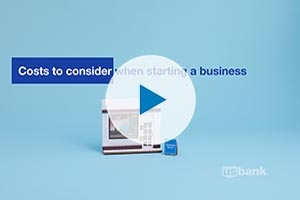Need a business plan? Call now:
Talk to our experts:
- Business Plan for Investors
- Bank/SBA Business Plan
- Operational/Strategic Planning
- L1 Visa Business Plan
- E1 Treaty Trader Visa Business Plan
- E2 Treaty Investor Visa Business Plan
- EB1 Business Plan
- EB2 Visa Business Plan
- EB5 Business Plan
- Innovator Founder Visa Business Plan
- UK Start-Up Visa Business Plan
- UK Expansion Worker Visa Business Plan
- Manitoba MPNP Visa Business Plan
- Start-Up Visa Business Plan
- Nova Scotia NSNP Visa Business Plan
- British Columbia BC PNP Visa Business Plan
- Self-Employed Visa Business Plan
- OINP Entrepreneur Stream Business Plan
- LMIA Owner Operator Business Plan
- ICT Work Permit Business Plan
- LMIA Mobility Program – C11 Entrepreneur Business Plan
- USMCA (ex-NAFTA) Business Plan
- Franchise Business Planning
- Landlord Business Plan
- Nonprofit Start-Up Business Plan
- USDA Business Plan
- Cannabis business plan
- eCommerce business plan
- Online Boutique Business Plan
- Mobile Application Business Plan
- Daycare business plan
- Restaurant business plan
- Food Delivery Business Plan
- Real Estate Business Plan
- Business Continuity Plan
- Buy Side Due Diligence Services
- ICO whitepaper
- ICO consulting services
- Confidential Information Memorandum
- Private Placement Memorandum
- Feasibility study
- Fractional CFO
- How it works
- Business Plan Examples

How to Write a Business Plan to Start a Bank
Feb.29, 2024
Average rating 5 / 5. Vote count: 3
No votes so far! Be the first to rate this post.

Table of Content
Bank Business Plan Checklist
A bank business plan is a document that describes the bank’s goals, strategies, operations, and financial projections. It communicates the bank’s vision and value proposition to potential investors, regulators, and stakeholders. A SBA business plan should be clear, concise, and realistic. It should also cover all the essential aspects of the bank’s business model.
Here is a checklist of the main sections that you should keep in mind while building a bank business plan:
- Executive summary
- Company description
- Industry analysis
- Competitive analysis
- Service or product list
- Marketing and sales plan
- Operations plan
- Management team
- Funding request
- Financial plan
Sample Business Plan for Bank
The following is a bank business plan template that operates in the USA. This bank business plan example is regarding ABC Bank, and it includes the following sections:
Executive Summary
ABC Bank is a new bank for California’s SMBs and individuals. We offer convenient banking services tailored to our customers’ needs and preferences. We have a large target market with over 500,000 SMBs spending billions on banking services annually. We have the licenses and approvals to operate our bank and raised $20 million in seed funding. We are looking for another $30 million in debt financing.
Our goal is to launch our bank by the end of 2024 and achieve the following objectives in the first five years of operation:
- Acquire 100,000 customers and 10% market share
- Generate $100 million in annual revenue and $20 million in net profit
- Achieve a return on equity (ROE) of 15% and a return on assets (ROA) of 1.5%
- Expand our network to 10 branches and 50 ATMs
- Increase our brand awareness and customer loyalty
Our bank has great potential to succeed and grow in the banking industry. We invite you to read the rest of our microfinance business plan to learn about how to set up a business plan for the bank and how we will achieve our goals.
Industry Analysis
California has one of the biggest and most active banking industries in the US and the world. According to the Federal Deposit Insurance Corp , California has 128 financial institutions, with total assets exceeding $560 billion.
The California banking industry is regulated and supervised by various federal and state authorities. However, they also face several risks and challenges, such as:
- High competition and consolidation
- Increasing regulation and compliance
- Rising customer demand for digital and mobile banking
- Cyberattacks and data breaches
- Environmental and social issues
The banking industry in California is highly competitive and fragmented. According to the FDIC, the top 10 banks and thrifts in California by total deposits as of June 30, 2023, were:
Customer Analysis
We serve SMBs who need local, easy, and cheap banking. We divide our customers into four segments by size, industry, location, and needs:
SMB Segment 1 – Tech SMBs in big cities of California. These are fast-growing, banking-intensive customers. They account for a fifth of our market share and a third of our revenue and are loyal and referable.
SMB Segment 2 – Entertainment SMBs in California’s entertainment hubs. These are high-profile, banking-heavy customers. They make up a sixth of our market and a fourth of our revenue and are loyal and influential.
SMB Segment 3 – Tourism SMBs in California’s tourist spots. These are seasonal, banking-dependent customers. They represent a quarter of our market and a fifth of our revenue and are loyal and satisfied.
SMB Segment 4 – Other SMBs in various regions of California. These are slow-growing, banking-light customers. They constitute two-fifths of our market and a quarter of our revenue and are loyal and stable.
Competitive Analysis
We compete with other banks and financial institutions that offer similar or substitute products and services to our target customers in our target market. We group our competitors into four categories based on their size and scope:
1. National Banks
- Key Players – Bank of America, Wells Fargo, JPMorgan Chase, Citibank, U.S. Bank
- Strengths – Large customer base, strong brand, extensive branch/ATM network, innovation, robust operations, solid financial performance
- Weaknesses – High competition, regulatory costs, low customer satisfaction, high attrition
- Strategies – Maintain dominance through customer acquisition/retention, revenue growth, efficiency
2. Regional Banks
- Key Players – MUFG Union Bank, Bank of the West, First Republic Bank, Silicon Valley Bank, East West Bank
- Strengths – Loyal customer base, brand recognition, convenient branch/ATM network, flexible operations
- Weaknesses – Moderate competition, regulatory costs, customer attrition
- Strategies – Grow market presence through customer acquisition/retention, revenue optimization, efficiency
3. Community Banks
- Key Players – Mechanics Bank, Bank of Marin, Pacific Premier Bank, Tri Counties Bank, Luther Burbank Savings
- Strengths – Small loyal customer base, reputation, convenient branches, ability to adapt
- Weaknesses – Low innovation and technology adoption
- Strategies – Maintain niche identity through customer loyalty, revenue optimization, efficiency
4. Online Banks
- Key Players – Ally Bank, Capital One 360, Discover Bank, Chime Bank, Varo Bank
- Strengths – Large growing customer base, strong brand, no branches, lean operations, high efficiency
- Weaknesses – High competition, regulatory costs, low customer satisfaction and trust, high attrition
- Strategies – Disrupt the industry by acquiring/retaining customers, optimizing revenue, improving efficiency
Market Research
Our market research shows that:
- California has a large, competitive, growing banking market with 128 banks and $560 billion in assets.
- Our target customers are the SMBs in California, which is 99.8% of the businesses and employ 7.2-7.4 million employees.
- Our main competitors are national and regional banks in California that offer similar banking products and services.
We conclude that:
- Based on the information provided in our loan officer business plan , there is a promising business opportunity for us to venture into and establish a presence in the banking market in California.
- We should focus on the SMBs in California, as they have various unmet banking needs, preferences, behavior, and a high potential for growth and profitability.
Operations Plan
Our operational structure and processes form the basis of our operations plan, and they are as follows:
- Location and Layout – We have a network of 10 branches and 50 ATMs across our target area in California. We strategically place our branches and ATMs in convenient and high-traffic locations.
- Equipment and Technology – We use modern equipment and technology to provide our products and services. We have computers and software for banking functions; security systems to protect branches and ATMs; communication systems to communicate with customers and staff; inventory and supplies to operate branches and ATMs.
- Suppliers and Vendors – We work with reliable suppliers and vendors that provide our inventory and supplies like cash, cards, paper, etc. We have supplier management systems to evaluate performance.
- Staff and Management – Our branches have staff like branch managers, customer service representatives, tellers, and ATM technicians with suitable qualifications and experience.
- Policies and Procedures – We have policies for customer service, cash handling, card handling, and paper handling to ensure quality, minimize losses, and comply with regulations. We use various tools and systems to implement these policies.
Management Team
The following individuals make up our management team:
- Earl Yao, CEO and Founder – Earl is responsible for establishing and guiding the bank’s vision, mission, strategy, and overall operations. He brings with him over 20 years of banking experience.
- Paula Wells, CFO and Co-Founder – Paula oversees financial planning, reporting, analysis, compliance, and risk management.
- Mark Hans, CTO – Mark leads our technology strategy, infrastructure, innovation, and digital transformation.
- Emma Smith, CMO – Emma is responsible for designing and implementing our marketing strategy and campaigns.
- David O’kane, COO – David manages the daily operations and processes of the bank ensuring our products and services meet the highest standards of quality and efficiency.
Financial Projections
Our assumptions and drivers form the basis of our financial projections, which are as follows:
Assumptions: We have made the following assumptions for our collection agency business plan :
- Start with 10 branches, 50 ATMs in January 2024
- Grow branches and ATMs 10% annually
- 10,000 customers per branch, 2,000 per ATM
- 5% average loan rate, 2% average deposit rate
- 80% average loan-to-deposit ratio
- $10 average fee per customer monthly
- $100,000 average operating expense per branch monthly
- $10,000 average operating expense per ATM monthly
- 25% average tax rate
Our financial projections are as per our:
- Projected Income Statement
- Projected Cash Flow Statement
- Projected Balance Sheet
- Projected Financial Ratios and Indicators
Select the Legal Framework for Your Bank
Our legal structure and requirements form the basis of our legal framework, which are as follows:
Legal Structure and Entity – We have chosen to incorporate our bank as a limited liability company (LLC) under the laws of California.
Members – We have two members who own and control our bank: Earl Yao and Paula Wells, the founders and co-founders of our bank.
Manager – We have appointed Mark Hans as our manager who oversees our bank’s day-to-day operations and activities.
Name – We have registered our bank’s name as ABC Bank LLC with the California Secretary of State. We have also obtained a trademark registration for our name and logo.
Registered Agent – We have designated XYZ Registered Agent Services LLC as our registered agent authorized to receive and handle legal notices and documents on behalf of our bank.
Licenses and Approvals – We have obtained the necessary licenses and approvals to operate our bank in California, including:
- Federal Deposit Insurance Corporation (FDIC) Insurance
- Federal Reserve System Membership
- California Department of Financial Protection and Innovation (DFPI) License
- Business License
- Employer Identification Number (EIN)
- Zoning and Building Permits
Legal Documents and Agreements – We have prepared and signed the necessary legal documents and agreements to form and operate our bank, including:
- Certificate of Formation
- Operating Agreement
- Membership Agreement
- Loan Agreement
- Card Agreement
- Paper Agreement
Keys to Success
We analyze our market, customers, competitors, and industry to determine our keys to success. We have identified the following keys to success for our bank.
Customer Satisfaction
Customer satisfaction is vital for any business, especially a bank relying on loyalty and referrals. It is the degree customers are happy with our products, services, and interactions. It is influenced by:
- Product and service quality – High-quality products and services that meet customer needs and preferences
- Customer service quality – Friendly, professional, and helpful customer service across channels
- Customer experience quality – Convenient, reliable, and secure customer access and transactions
We will measure satisfaction with surveys, feedback, mystery shopping, and net promoter scores. Our goal is a net promoter score of at least 8.
Operational Efficiency
Efficiency is key in a regulated, competitive environment. It is using resources and processes effectively to achieve goals and objectives. It is influenced by:
- Resource optimization – Effective and efficient use and control of capital, staff, and technology
- Process improvement – Streamlined, standardized processes measured for performance
- Performance management – Managing financial, operational, customer, and stakeholder performance
We will measure efficiency with KPIs, metrics, dashboards, and operational efficiency ratios. Our goal is an operational efficiency ratio below 50%.
Partner with OGSCapital for Your Bank Business Plan Success
Highly efficient service.
Highly Efficient Service! I am incredibly happy with the outcome; Alex and his team are highly efficient professionals with a diverse bank of knowledge.
Are you looking to hire business plan writers to start a bank business plan? At OGSCapital, we can help you create a customized and high-quality bank development business plan to meet your goals and exceed your expectations.
We have a team of senior business plan experts with extensive experience and expertise in various industries and markets. We will conduct thorough market research, develop a unique value proposition, design a compelling financial model, and craft a persuasive pitch deck for your business plan. We will also offer you strategic advice, guidance, and access to a network of investors and other crucial contacts.
We are not just a business plan writing service. We are a partner and a mentor who will support you throughout your entrepreneurial journey. We will help you achieve your business goals with smart solutions and professional advice. Contact us today and let us help you turn your business idea into a reality.
Frequently Asked Questions
How do I start a small bank business?
To start a small bank business in the US, you need to raise enough capital, understand how to make a business plan for the bank, apply for a federal or state charter, register your bank for taxes, open a business bank account, set up accounting, get the necessary permits and licenses, get bank insurance, define your brand, create your website, and set up your phone system.
Are banks profitable businesses?
Yes, banks are profitable businesses in the US. They earn money through interest on loans and fees for other services. The commercial banking industry in the US has grown 5.6% per year on average between 2018 and 2023.
Download Bank Business Plan Sample in pdf
OGSCapital’s team has assisted thousands of entrepreneurs with top-rate business plan development, consultancy and analysis. They’ve helped thousands of SME owners secure more than $1.5 billion in funding, and they can do the same for you.

How to Start a Plumbing Business in 2024: A Detailed Guide

Vegetable Farming Business Plan

Trading Business Plan

How To Write A Textile Manufacturing Business Plan

Start a Vending Machine Business in 2024: A Detailed Guide

Oil and Gas Business Plan

Any questions? Get in Touch!
We have been mentioned in the press:
Leave a Reply Cancel reply
Your email address will not be published. Required fields are marked *
Save my name, email, and website in this browser for the next time I comment.
Search the site:

Bank Business Plan Template
Written by Dave Lavinsky

Bank Business Plan
Over the past 20+ years, we have helped over 500 entrepreneurs and business owners create business plans to start and grow their banks.
If you’re unfamiliar with creating a bank business plan, you may think creating one will be a time-consuming and frustrating process. For most entrepreneurs it is, but for you, it won’t be since we’re here to help. We have the experience, resources, and knowledge to help you create a great business plan.
In this article, you will learn some background information on why business planning is important. Then, you will learn how to write a bank business plan step-by-step so you can create your plan today.
Download our Ultimate Business Plan Template here >
What Is a Bank Business Plan?
A business plan provides a snapshot of your bank as it stands today, and lays out your growth plan for the next five years. It explains your business goals and your strategies for reaching them. It also includes market research to support your plans.
Why You Need a Business Plan for Your Bank Business
If you’re looking to start a bank or grow your existing bank, you need a business plan. A business plan will help you raise funding, if needed, and plan out the growth of your bank to improve your chances of success. Your bank business plan is a living document that should be updated annually as your company grows and changes.
Sources of Funding for Banks
With regards to funding, the main sources of funding for a bank are personal savings, credit cards, bank loans, and angel investors. When it comes to bank loans, banks will want to review your business plan and gain confidence that you will be able to repay your loan and interest. To acquire this confidence, the loan officer will not only want to ensure that your financials are reasonable, but they will also want to see a professional plan. Such a plan will give them the confidence that you can successfully and professionally operate a business. Personal savings and bank loans are the most common funding paths for banks.
Finish Your Business Plan Today!
How to write a business plan for a bank.
If you want to start a bank or expand your current one, you need a business plan. The guide below details the necessary information for how to write each essential component of your bank business plan.
Executive Summary
Your executive summary provides an introduction to your business plan, but it is normally the last section you write because it provides a summary of each key section of your plan.
The goal of your executive summary is to quickly engage the reader. Explain to them the kind of bank you are running and the status. For example, are you a startup, do you have a bank that you would like to grow, or are you operating a chain of banks?
Next, provide an overview of each of the subsequent sections of your plan.
- Give a brief overview of the bank industry.
- Discuss the type of bank you are operating.
- Detail your direct competitors. Give an overview of your target customers.
- Provide a snapshot of your marketing strategy. Identify the key members of your team.
- Offer an overview of your financial plan.
Company Overview
In your company overview, you will detail the type of bank you are operating.
For example, you might specialize in one of the following types of banks:
- Commercial bank : this type of bank tends to concentrate on supporting businesses. Both large corporations and small businesses can turn to commercial banks if they need to open a checking or savings account, borrow money, obtain access to credit or transfer funds to companies in foreign markets.
- Credit union: this type of bank operates much like a traditional bank (issues loans, provides checking and savings accounts, etc.) but banks are for-profit whereas credit unions are not. Credit unions fall under the direction of their own members. They tend to serve people affiliated with a particular group, such as people living in the same area, low-income members of a community or armed service members. They also tend to charge lower fees and offer lower loan rates.
- Retail bank: retail banks can be traditional, brick-and-mortar brands that customers can access in-person, online, or through their mobile phones. They also offer general public financial products and services such as bank accounts, loans, credit cards, and insurance.
- Investment bank: this type of bank manages the trading of stocks, bonds, and other securities between companies and investors. They also advise individuals and corporations who need financial guidance, reorganize companies through mergers and acquisitions, manage investment portfolios or raise money for certain businesses and the federal government.
In addition to explaining the type of bank you will operate, the company overview needs to provide background on the business.
Include answers to questions such as:
- When and why did you start the business?
- What milestones have you achieved to date? Milestones could include the number of clients served, the number of clients with positive reviews, reaching X number of clients served, etc.
- Your legal business Are you incorporated as an S-Corp? An LLC? A sole proprietorship? Explain your legal structure here.
Industry Analysis
In your industry or market analysis, you need to provide an overview of the bank industry.
While this may seem unnecessary, it serves multiple purposes.
First, researching the bank industry educates you. It helps you understand the market in which you are operating.
Secondly, market research can improve your marketing strategy, particularly if your analysis identifies market trends.
The third reason is to prove to readers that you are an expert in your industry. By conducting the research and presenting it in your plan, you achieve just that.
The following questions should be answered in the industry analysis section of your bank business plan:
- How big is the bank industry (in dollars)?
- Is the market declining or increasing?
- Who are the key competitors in the market?
- Who are the key suppliers in the market?
- What trends are affecting the industry?
- What is the industry’s growth forecast over the next 5 – 10 years?
- What is the relevant market size? That is, how big is the potential target market for your bank? You can extrapolate such a figure by assessing the size of the market in the entire country and then applying that figure to your local population.
Customer Analysis
The customer analysis section of your bank business plan must detail the customers you serve and/or expect to serve.
The following are examples of customer segments: individuals, small businesses, families, and corporations.
As you can imagine, the customer segment(s) you choose will have a great impact on the type of bank you operate. Clearly, corporations would respond to different marketing promotions than individuals, for example.
Try to break out your target customers in terms of their demographic and psychographic profiles. With regards to demographics, including a discussion of the ages, genders, locations, and income levels of the potential customers you seek to serve.
Psychographic profiles explain the wants and needs of your target customers. The more you can recognize and define these needs, the better you will do in attracting and retaining your customers.
Finish Your Bank Business Plan in 1 Day!
Don’t you wish there was a faster, easier way to finish your business plan?
With Growthink’s Ultimate Business Plan Template you can finish your plan in just 8 hours or less!
Competitive Analysis
Your competitive analysis should identify the indirect and direct competitors your business faces and then focus on the latter.
Direct competitors are other banks.
Indirect competitors are other options that customers have to purchase from that aren’t directly competing with your product or service. This includes trust accounts, investment companies, or the stock market. You need to mention such competition as well.
For each such competitor, provide an overview of their business and document their strengths and weaknesses. Unless you once worked at your competitors’ businesses, it will be impossible to know everything about them. But you should be able to find out key things about them such as
- What types of customers do they serve?
- What type of bank are they?
- What is their pricing (premium, low, etc.)?
- What are they good at?
- What are their weaknesses?
With regards to the last two questions, think about your answers from the customers’ perspective. And don’t be afraid to ask your competitors’ customers what they like most and least about them.
The final part of your competitive analysis section is to document your areas of competitive advantage. For example:
- Will you provide loans and retirement savings accounts?
- Will you offer products or services that your competition doesn’t?
- Will you provide better customer service?
- Will you offer better pricing?
Think about ways you will outperform your competition and document them in this section of your plan.
Marketing Plan
Traditionally, a marketing plan includes the four P’s: Product, Price, Place, and Promotion. For a bank business plan, your marketing strategy should include the following:
Product : In the product section, you should reiterate the type of bank company that you documented in your company overview. Then, detail the specific products or services you will be offering. For example, will you provide savings accounts, auto loans, mortgage loans, or financial advice?
Price : Document the prices you will offer and how they compare to your competitors. Essentially in the product and price sub-sections of your plan, you are presenting the products and/or services you offer and their prices.
Place : Place refers to the site of your bank. Document where your company is situated and mention how the site will impact your success. For example, is your bank located in a busy retail district, a business district, a standalone office, or purely online? Discuss how your site might be the ideal location for your customers.
Promotions : The final part of your bank marketing plan is where you will document how you will drive potential customers to your location(s). The following are some promotional methods you might consider:
- Advertise in local papers, radio stations and/or magazines
- Reach out to websites
- Distribute flyers
- Engage in email marketing
- Advertise on social media platforms
- Improve the SEO (search engine optimization) on your website for targeted keywords
Operations Plan
While the earlier sections of your business plan explained your goals, your operations plan describes how you will meet them. Your operations plan should have two distinct sections as follows.
Everyday short-term processes include all of the tasks involved in running your bank, including reconciling accounts, customer service, accounting, etc.
Long-term goals are the milestones you hope to achieve. These could include the dates when you expect to sign up your Xth customer, or when you hope to reach $X in revenue. It could also be when you expect to expand your bank to a new city.
Management Team
To demonstrate your bank’s potential to succeed, a strong management team is essential. Highlight your key players’ backgrounds, emphasizing those skills and experiences that prove their ability to grow a company.
Ideally, you and/or your team members have direct experience in managing banks. If so, highlight this experience and expertise. But also highlight any experience that you think will help your business succeed.
If your team is lacking, consider assembling an advisory board. An advisory board would include 2 to 8 individuals who would act as mentors to your business. They would help answer questions and provide strategic guidance. If needed, look for advisory board members with experience in managing a bank or successfully running a small financial advisory firm.
Financial Plan
Your financial plan should include your 5-year financial statement broken out both monthly or quarterly for the first year and then annually. Your financial statements include your income statement, balance sheet, and cash flow statements.
Income Statement
An income statement is more commonly called a Profit and Loss statement or P&L. It shows your revenue and then subtracts your costs to show whether you turned a profit or not.
In developing your income statement, you need to devise assumptions. For example, will you see 5 clients per day, and/or offer sign up bonuses? And will sales grow by 2% or 10% per year? As you can imagine, your choice of assumptions will greatly impact the financial forecasts for your business. As much as possible, conduct research to try to root your assumptions in reality.
Balance Sheets
Balance sheets show your assets and liabilities. While balance sheets can include much information, try to simplify them to the key items you need to know about. For instance, if you spend $50,000 on building out your bank, this will not give you immediate profits. Rather it is an asset that will hopefully help you generate profits for years to come. Likewise, if a lender writes you a check for $50,000, you don’t need to pay it back immediately. Rather, that is a liability you will pay back over time.
Cash Flow Statement
Your cash flow statement will help determine how much money you need to start or grow your business, and ensure you never run out of money. What most entrepreneurs and business owners don’t realize is that you can turn a profit but run out of money and go bankrupt.
When creating your Income Statement and Balance Sheets be sure to include several of the key costs needed in starting or growing a bank:
- Cost of furniture and office supplies
- Payroll or salaries paid to staff
- Business insurance
- Other start-up expenses (if you’re a new business) like legal expenses, permits, computer software, and equipment
Attach your full financial projections in the appendix of your plan along with any supporting documents that make your plan more compelling. For example, you might include your bank location lease or a list of accounts and loans you plan to offer.
Writing a business plan for your bank is a worthwhile endeavor. If you follow the template above, by the time you are done, you will truly be an expert. You will understand the bank industry, your competition, and your customers. You will develop a marketing strategy and will understand what it takes to launch and grow a successful bank.
Bank Business Plan Template FAQs
What is the easiest way to complete my bank business plan.
Growthink's Ultimate Business Plan Template allows you to quickly and easily write your bank business plan.
How Do You Start a Bank Business?
Starting a bank business is easy with these 14 steps:
- Choose the Name for Your Bank Business
- Create Your Bank Business Plan
- Choose the Legal Structure for Your Bank Business
- Secure Startup Funding for Your Bank Business (If Needed)
- Secure a Location for Your Business
- Register Your Bank Business with the IRS
- Open a Business Bank Account
- Get a Business Credit Card
- Get the Required Business Licenses and Permits
- Get Business Insurance for Your Bank Business
- Buy or Lease the Right Bank Business Equipment
- Develop Your Bank Business Marketing Materials
- Purchase and Setup the Software Needed to Run Your Bank Business
- Open for Business
Don’t you wish there was a faster, easier way to finish your Bank business plan?
OR, Let Us Develop Your Plan For You
Since 1999, Growthink has developed business plans for thousands of companies who have gone on to achieve tremendous success. Click here to see how a Growthink business plan consultant can create your business plan for you.
Other Helpful Business Plan Articles & Templates

Small Business Resources is now the Center for Business Empowerment.
Suggested Keywords
Center for Business Empowerment
How to write an effective business plan in 11 steps (with workbook)
February 02, 2023 | 14 minute read
Writing a business plan is a powerful way to position your small business for success as you set out to meet your goals. Landmark studies suggest that business founders who write one are 16% more likely to build viable businesses than those who don’t and that entrepreneurs focused on high growth are 7% more likely to have written a business plan. 1 Even better, other research shows that owners who complete business plans are twice as likely to grow their business successfully or obtain capital compared with those who don’t. 2
The best time to write a business plan is typically after you have vetted and researched your business idea. (See How to start a business in 15 steps. ) If conditions change later, you can rewrite the plan, much like how your GPS reroutes you if there is traffic ahead. When you update your plan regularly, everyone on your team, including outside stakeholders such as investors, will know where you are headed.
What is a business plan?
Typically 15-20 pages long, a business plan is a document that explains what your business does, what you want to achieve in the business and the strategy you plan to use to get there. It details the opportunities you are going after, what resources you will need to achieve your goals and how you will define success.
Why are business plans important?
Business plans help you think through barriers and discover opportunities you may have recognized subconsciously but have not yet articulated. A business plan can also help you to attract potential lenders, investors and partners by providing them with evidence that your business has all of the ingredients necessary for success.
What questions should a business plan answer?
Your business plan should explain how your business will grow and succeed. A great plan will provide detailed answers to questions that a banker or investor will have before putting money into the business, such as:
- What products or services do you provide?
- Who is your target customer?
- What are the benefits of your product and service for customers?
- How much will you charge?
- What is the size of the market?
- What are your marketing plans?
- How much competition does the business face in penetrating that market?
- How much experience does the management team have in running businesses like it?
- How do you plan to measure success?
- What do you expect the business’s revenue, costs and profit to be for the first few years?
- How much will it cost to achieve the goals stated in the business plan?
- What is the long-term growth potential of the business? Is the business scalable?
- How will you enable investors to reap the rewards of backing the business? Do you plan to sell the business to a bigger company eventually or take it public as your “exit strategy”?
How to write a business plan in 11 steps
This step-by-step outline will make it easier to write an effective business plan, even if you’re managing the day-to-day demands of starting a new business. Creating a table of contents that lists key sections of the plan with page numbers will make it easy for readers to flip to the sections that interest them most.
- Use our editable workbook to capture notes and organize your thoughts as you review these critical steps. Note: To avoid losing your work, please remember to save this PDF to your desktop before you begin.
1. Executive summary
The executive summary is your opportunity to make a great first impression on investors and bankers. It should be just as engaging as the enthusiastic elevator pitch you might give if you bumped into a potential backer in an elevator.
In three to five paragraphs, you’ll want to explain what your business does, why it will succeed and where it will be in five years. The executive summary should include short descriptions of the following:
- Business concept. What will your business do?
- Goals and vision. What do you expect the business to achieve, both financially and for other key stakeholders, such as the community?
- Product or service. What does your product or service do — and how is it different from those of competitors?
- Target market. Who do you expect to buy your product or service?
- Marketing strategy. How will you tell people about your product or service?
- Current revenue and profits. If your business is pre-revenue, offer sales projections.
- Projected revenue and profits. Provide a realistic look at the next year, as well as the next three years, ideally.
- Financial resources needed. How much money do you need to borrow or raise to fund your plan?
- Management team. Who are the company’s leaders and what relevant experience will they contribute?
2. Business overview
Here is where you provide a brief history of the business and describe the product(s) or service(s) it offers. Make sure you describe the problem you are attempting to solve, for whom you will solve it (your customers) and how you will solve it. Be sure to describe your business model (such as direct-to-consumer sales through an online store) so readers can envision how you will make sales. Also mention your business structure (such as a sole proprietorship , general partnership, limited partnership or corporation) and why it is advantageous for the business. And be sure to provide context on the state of your industry and where your business will fit into it.
3. Business goals and vision
Explain what you hope to achieve in the business (your vision) as well as its mission and value proposition. Most founders judge success by the size to which they grow the business using measures such as revenue or number of employees. Your goals may not be solely financial. You may also wish to provide jobs or solve a societal problem. If that’s the case, mention those goals as well.
If you are seeking outside funding, explain why you need the money, how you will put it to work to grow the business and how you expect to achieve the goals you have set for the business. Also explain your exit strategy—that is, how you would enable investors to cash out, whether that means selling the business or taking it public.
4. Management and organization
Many investors say they bet on the team behind a business more than the business idea, trusting that talented and experienced people will be capable of bringing sound business concepts to life. With that in mind, make sure to provide short bios of the key members of your management team (including yourself) that emphasize the relevant experience each individual brings, along with their special talents and industry recognition. Many business plans include headshots of the management team with the bios.
Also describe more about how your organization will be structured. Your company may be a sole proprietorship, a limited liability company (LLC) or a corporation in one or more states.
If you will need to hire people for specific roles, this is the place to mention those plans. And if you will rely on outside consultants for certain roles — such as an outsourced CFO — be sure to make a note of it here. Outside backers want to know if you’ve anticipated the staffing you need.
5. Service or product line
A business will only succeed if it sells something people want or need to buy. As you describe the products or services you will offer, make sure to explain what benefits they will provide to your target customers, how they will differ from competing offerings and what the buying cycle will likely be so it is clear that you can actually sell what you are offering. If you have plans to protect your intellectual property through a copyright or patent filing, be sure to mention that. Also explain any research and development work that is underway to show investors the potential for additional revenue streams.
6. Market/industry analysis
Anyone interested in providing financial backing to your business will want to know how big your company can potentially grow so they have an idea of what kind of returns they can expect. In this section, you’ll be able to convey that by explaining to whom you will be selling and how much opportunity there is to reach them. Key details to include are market size; a strengths, weaknesses, opportunities and threats (SWOT) analysis ; a competitive analysis; and customer segmentation. Make it clear how you developed any projections you’ve made by citing interviews or research.
Also describe the current state of the industry. Where is there room for improvement? Are most companies using antiquated processes and technology? If your business is a local one, what is the market in your area like? Do most of the restaurants where you plan to open your café serve mediocre food? What will you do better?
In this section, also list competitors, including their names, websites and social media handles. Describe each source of competition and how your business will address it.
7. Sales and marketing
Explain how you will spread the word to potential customers about what you sell. Will you be using paid online search advertising, social media promotions, traditional direct mail, print advertising in local publications, sponsorship of a local radio or TV show, your own YouTube content or some other method entirely? List all of the methods you will use.
Make sure readers know exactly what the path to a sale will be and why that approach will resonate with customers in your ideal target markets as well as existing customer segments. If you have already begun using the methods you’ve outlined, include data on the results so readers know whether they have been effective.
8. Financials
In a new business, you may not have any past financial data or financial statements to include, but that doesn’t mean you have nothing to share. Preparing a budget and financial plan will help show investors or bankers that you have developed a clear understanding of the financial aspects of running your business. (The U.S. Small Business Administration (SBA) has prepared a guide you can use; SCORE , a nonprofit organization that partners with the SBA, offers a financial projections template to help you look ahead.) For an existing business, you will want to include income statements, profit and loss statements, cash flow statements and balance sheets, ideally going back three years.
Make a list of the specific steps you plan to take to achieve the financial results you have outlined. The steps are generally the most detailed for the first year, given that you may need to revise your plan later as you gather feedback from the marketplace.
Include interactive spreadsheets that contain a detailed financial analysis showing how much it costs your business to produce the goods and services you provide, the profits you will generate, any planned investments and the taxes you will pay. See our startup costs calculator to get started.
9. Financial projections
Creating a detailed sales forecast can help you get outside backers excited about supporting you. A sales forecast is typically a table or simple line graph that shows the projected sales of the company over time with monthly or quarterly details for the next 12 months and a broader projection as much as five years into the future. If you haven’t yet launched the company, turn to your market research to develop estimates. For more information, see “ How to create a sales forecast for your small business. ”
10. Funding request
If you are seeking outside financing such as a loan or equity investment, your potential backers will want to know how much money you need and how you will spend it. Describe the amount you are trying to raise, how you arrived at that number and what type of funding you are seeking (such as debt, equity or a combination of both). If you are contributing some of your own funds, it is worth noting this, as it shows that you have skin in the game.
11. Appendix
This should include any information and supporting documents that will help investors and bankers gain a greater understanding of the potential of your business. Depending on your industry, you might include local permits, licenses, deeds and other legal documents; professional certifications and licenses; media clips; information on patents and other intellectual property; key customer contracts and purchase orders; and other relevant documents.
Some business owners find it helpful to develop a list of key concepts, such as the names of the company’s products and industry terms. This can be helpful if you do business in an industry that may not be familiar to the readers of the business plan.
Tips for creating an effective business plan
Use clear, simple language. It’ll be easier to win people over if your plan is easy to read. Steer clear of industry jargon, and if you must use any phrases the average adult won’t know, be sure to define them.
Emphasize what makes your business unique. Investors and bankers want to know how you will solve a problem or gap in the marketplace differently from anyone else. Make sure you’re conveying your differentiating factors.
Nail the details. An ideal business plan will be detailed and accurate. Make sure that any financial projections you make are realistic and grounded in solid market research. (If you need help in making your calculations, you can get free advice at SCORE.) Seasoned bankers and investors will quickly spot numbers that are overly optimistic.
Take time to polish it. Your final version of the plan should be neat and professional with an attractive layout and copy that has been carefully proofread.
Include professional photos. High-quality shots of your product or place of business can help make it clear why your business stands out.
Updating an existing business plan
Some business owners in rapidly growing businesses update their business plan quarterly. Others do so every six months or every year. When you update your plan make sure you consider these three things:
- Are your goals still current? As you’ve tested your concept, your goals may have changed. The plan should reflect this.
- Have you revised any strategies in response to feedback from the marketplace? You may have found that your offerings resonated with a different customer segment than you expected or that your advertising plan didn’t work and you need to try a different approach. Given that investors will want to see a marketing and advertising plan that works, keeping this section current will ensure you are always ready to meet with one who shows interest.
- Have your staffing needs changed? If you set ambitious goals, you may need help from team members or outside consultants you did not anticipate when you first started the business. Take stock now so you can plan accordingly.
Final thoughts
Most business owners don’t follow their business plans exactly. But writing one will get you off to a much better start than simply opening your doors and hoping for the best, and it will be easier to analyze any aspects of your business that aren’t working later so you can course-correct. Ultimately, it may be one of the best investments you can make in the future of your business.
Business plan FAQs
What are common mistakes when writing a business plan.
The biggest mistake you can make when writing a business plan is creating one before the idea has been properly researched and tested. Not every idea is meant to become a business. Other common mistakes include:
- Not describing your management team in a way that is appealing to investors. Simply cutting and pasting someone’s professional bio into the management section won’t do the trick. You’ll want to highlight the credentials of each team member in a way that is relevant to this business.
- Failing to include financial projections — or including overly optimistic ones. Investors look at a lot of business plans and can tell quickly whether your numbers are accurate or pie in the sky. Have a good small business accountant review your numbers to make sure they are realistic.
- Lack of a clear exit strategy for investors. Investors may want the option to cash out eventually and would want to know how they can go about doing that.
- Slapdash presentation. Make sure to fact-check any industry statistics you cite and that any charts, graphs or images are carefully prepared and easy to read.
What are the different types of business plans?
There are a variety of styles of business plans. Here are three major types:
Traditional business plan. This is a formal document for pitching to investors based on the outline in this article. If your business is a complicated one, the plan may exceed the typical length and stretch to as many as 50 pages.
One-page business plan. This is a simplified version of a formal business plan designed to fit on one page. Typically, each section will be described in bullet points or in a chart format rather than in the narrative style of an executive summary. It can be helpful as a summary document to give to investors — or for internal use. Another variation on the one-page theme is the business model canvas .
Lean plan. This methodology for creating a business plan is ideal for a business that is evolving quickly. It is designed in a way that makes it easy to update on a regular basis. Lean business plans are usually about one page long. The SBA has provided an example of what this type of plan includes on its website.
Is the business plan for a nonprofit different from the plan for other business types?
Many elements of a business plan for a nonprofit are similar to those of a for-profit business. However, because the goal of a nonprofit is achieving its mission — rather than turning a profit — the business plan should emphasize its specific goals on that front and how it will achieve them. Many nonprofits set key performance indicators (KPIs) — numbers that they track to show they are moving the needle on their goals.
Nonprofits will generally emphasize their fundraising strategies in their business plans rather than sales strategies. The funds they raise are the lifeblood of the programs they run.
What is the difference between a business plan, a strategic plan and a marketing plan?
A strategic plan is different from the type of business plan you’ve read about here in that it emphasizes the long-term goals of the business and how your business will achieve them over the long run. A strong business plan can function as both a business plan and a strategic plan.
A marketing plan is different from a business plan in that it is focused on four main areas of the business: product (what you are selling and how you will differentiate it), price (how much your products or services will cost and why), promotion (how you will get your ideal customer to notice and buy what you are selling) and place (where you will sell your products). A thorough business plan may cover these topics, doing double duty as both a business plan and a marketing plan.
Explore more
Editable business plan workbook

Starting a new business
1 . Francis J. Green and Christian Hopp. “Research: Writing a Business Plan Makes Your Startup More Likely to Succeed.” HBR. July 14, 2017. Available online at https://hbr.org/2017/07/research-writing-a-business-plan-makes-your-startup-more-likely-to-succeed.
2 . CorpNet, “The Startup Business Plan: Why It’s Important and How You Can Create One,” June 29, 2022.
Important Disclosures and Information
Bank of America, Merrill, their affiliates and advisors do not provide legal, tax or accounting advice. Consult your own legal and/or tax advisors before making any financial decisions. Any informational materials provided are for your discussion or review purposes only. The content on the Center for Business Empowerment (including, without limitations, third party and any Bank of America content) is provided “as is” and carries no express or implied warranties, or promise or guaranty of success. Bank of America does not warrant or guarantee the accuracy, reliability, completeness, usefulness, non-infringement of intellectual property rights, or quality of any content, regardless of who originates that content, and disclaims the same to the extent allowable by law. All third party trademarks, service marks, trade names and logos referenced in this material are the property of their respective owners. Bank of America does not deliver and is not responsible for the products, services or performance of any third party.
Not all materials on the Center for Business Empowerment will be available in Spanish.
Certain links may direct you away from Bank of America to unaffiliated sites. Bank of America has not been involved in the preparation of the content supplied at unaffiliated sites and does not guarantee or assume any responsibility for their content. When you visit these sites, you are agreeing to all of their terms of use, including their privacy and security policies.
Credit cards, credit lines and loans are subject to credit approval and creditworthiness. Some restrictions may apply.
Merrill Lynch, Pierce, Fenner & Smith Incorporated (also referred to as “MLPF&S" or “Merrill") makes available certain investment products sponsored, managed, distributed or provided by companies that are affiliates of Bank of America Corporation (“BofA Corp."). MLPF&S is a registered broker-dealer, registered investment adviser, Member SIPC , and a wholly owned subsidiary of BofA Corp.
Banking products are provided by Bank of America, N.A., and affiliated banks, Members FDIC, and wholly owned subsidiaries of BofA Corp.
“Bank of America” and “BofA Securities” are the marketing names used by the Global Banking and Global Markets division of Bank of America Corporation. Lending, derivatives, other commercial banking activities, and trading in certain financial instruments are performed globally by banking affiliates of Bank of America Corporation, including Bank of America, N.A., Member FDIC. Trading in securities and financial instruments, and strategic advisory, and other investment banking activities, are performed globally by investment banking affiliates of Bank of America Corporation (“Investment Banking Affiliates”), including, in the United States, BofA Securities, Inc., which is a registered broker-dealer and Member of SIPC , and, in other jurisdictions, by locally registered entities. BofA Securities, Inc. is a registered futures commission merchant with the CFTC and a member of the NFA.
Investment products:
How to Write a Business Plan: Step-by-Step Guide + Examples

Noah Parsons
24 min. read
Updated May 7, 2024
Writing a business plan doesn’t have to be complicated.
In this step-by-step guide, you’ll learn how to write a business plan that’s detailed enough to impress bankers and potential investors, while giving you the tools to start, run, and grow a successful business.
- The basics of business planning
If you’re reading this guide, then you already know why you need a business plan .
You understand that planning helps you:
- Raise money
- Grow strategically
- Keep your business on the right track
As you start to write your plan, it’s useful to zoom out and remember what a business plan is .
At its core, a business plan is an overview of the products and services you sell, and the customers that you sell to. It explains your business strategy: how you’re going to build and grow your business, what your marketing strategy is, and who your competitors are.
Most business plans also include financial forecasts for the future. These set sales goals, budget for expenses, and predict profits and cash flow.
A good business plan is much more than just a document that you write once and forget about. It’s also a guide that helps you outline and achieve your goals.
After completing your plan, you can use it as a management tool to track your progress toward your goals. Updating and adjusting your forecasts and budgets as you go is one of the most important steps you can take to run a healthier, smarter business.
We’ll dive into how to use your plan later in this article.
There are many different types of plans , but we’ll go over the most common type here, which includes everything you need for an investor-ready plan. However, if you’re just starting out and are looking for something simpler—I recommend starting with a one-page business plan . It’s faster and easier to create.
It’s also the perfect place to start if you’re just figuring out your idea, or need a simple strategic plan to use inside your business.
Dig deeper : How to write a one-page business plan
Brought to you by
Create a professional business plan
Using ai and step-by-step instructions.
Secure funding
Validate ideas
Build a strategy
- What to include in your business plan
Executive summary
The executive summary is an overview of your business and your plans. It comes first in your plan and is ideally just one to two pages. Most people write it last because it’s a summary of the complete business plan.
Ideally, the executive summary can act as a stand-alone document that covers the highlights of your detailed plan.
In fact, it’s common for investors to ask only for the executive summary when evaluating your business. If they like what they see in the executive summary, they’ll often follow up with a request for a complete plan, a pitch presentation , or more in-depth financial forecasts .
Your executive summary should include:
- A summary of the problem you are solving
- A description of your product or service
- An overview of your target market
- A brief description of your team
- A summary of your financials
- Your funding requirements (if you are raising money)
Dig Deeper: How to write an effective executive summary
Products and services description
This is where you describe exactly what you’re selling, and how it solves a problem for your target market. The best way to organize this part of your plan is to start by describing the problem that exists for your customers. After that, you can describe how you plan to solve that problem with your product or service.
This is usually called a problem and solution statement .
To truly showcase the value of your products and services, you need to craft a compelling narrative around your offerings. How will your product or service transform your customers’ lives or jobs? A strong narrative will draw in your readers.
This is also the part of the business plan to discuss any competitive advantages you may have, like specific intellectual property or patents that protect your product. If you have any initial sales, contracts, or other evidence that your product or service is likely to sell, include that information as well. It will show that your idea has traction , which can help convince readers that your plan has a high chance of success.
Market analysis
Your target market is a description of the type of people that you plan to sell to. You might even have multiple target markets, depending on your business.
A market analysis is the part of your plan where you bring together all of the information you know about your target market. Basically, it’s a thorough description of who your customers are and why they need what you’re selling. You’ll also include information about the growth of your market and your industry .
Try to be as specific as possible when you describe your market.
Include information such as age, income level, and location—these are what’s called “demographics.” If you can, also describe your market’s interests and habits as they relate to your business—these are “psychographics.”
Related: Target market examples
Essentially, you want to include any knowledge you have about your customers that is relevant to how your product or service is right for them. With a solid target market, it will be easier to create a sales and marketing plan that will reach your customers. That’s because you know who they are, what they like to do, and the best ways to reach them.
Next, provide any additional information you have about your market.
What is the size of your market ? Is the market growing or shrinking? Ideally, you’ll want to demonstrate that your market is growing over time, and also explain how your business is positioned to take advantage of any expected changes in your industry.
Dig Deeper: Learn how to write a market analysis
Competitive analysis
Part of defining your business opportunity is determining what your competitive advantage is. To do this effectively, you need to know as much about your competitors as your target customers.
Every business has some form of competition. If you don’t think you have competitors, then explore what alternatives there are in the market for your product or service.
For example: In the early years of cars, their main competition was horses. For social media, the early competition was reading books, watching TV, and talking on the phone.
A good competitive analysis fully lays out the competitive landscape and then explains how your business is different. Maybe your products are better made, or cheaper, or your customer service is superior. Maybe your competitive advantage is your location – a wide variety of factors can ultimately give you an advantage.
Dig Deeper: How to write a competitive analysis for your business plan
Marketing and sales plan
The marketing and sales plan covers how you will position your product or service in the market, the marketing channels and messaging you will use, and your sales tactics.
The best place to start with a marketing plan is with a positioning statement .
This explains how your business fits into the overall market, and how you will explain the advantages of your product or service to customers. You’ll use the information from your competitive analysis to help you with your positioning.
For example: You might position your company as the premium, most expensive but the highest quality option in the market. Or your positioning might focus on being locally owned and that shoppers support the local economy by buying your products.
Once you understand your positioning, you’ll bring this together with the information about your target market to create your marketing strategy .
This is how you plan to communicate your message to potential customers. Depending on who your customers are and how they purchase products like yours, you might use many different strategies, from social media advertising to creating a podcast. Your marketing plan is all about how your customers discover who you are and why they should consider your products and services.
While your marketing plan is about reaching your customers—your sales plan will describe the actual sales process once a customer has decided that they’re interested in what you have to offer.
If your business requires salespeople and a long sales process, describe that in this section. If your customers can “self-serve” and just make purchases quickly on your website, describe that process.
A good sales plan picks up where your marketing plan leaves off. The marketing plan brings customers in the door and the sales plan is how you close the deal.
Together, these specific plans paint a picture of how you will connect with your target audience, and how you will turn them into paying customers.
Dig deeper: What to include in your sales and marketing plan
Business operations
The operations section describes the necessary requirements for your business to run smoothly. It’s where you talk about how your business works and what day-to-day operations look like.
Depending on how your business is structured, your operations plan may include elements of the business like:
- Supply chain management
- Manufacturing processes
- Equipment and technology
- Distribution
Some businesses distribute their products and reach their customers through large retailers like Amazon.com, Walmart, Target, and grocery store chains.
These businesses should review how this part of their business works. The plan should discuss the logistics and costs of getting products onto store shelves and any potential hurdles the business may have to overcome.
If your business is much simpler than this, that’s OK. This section of your business plan can be either extremely short or more detailed, depending on the type of business you are building.
For businesses selling services, such as physical therapy or online software, you can use this section to describe the technology you’ll leverage, what goes into your service, and who you will partner with to deliver your services.
Dig Deeper: Learn how to write the operations chapter of your plan
Key milestones and metrics
Although it’s not required to complete your business plan, mapping out key business milestones and the metrics can be incredibly useful for measuring your success.
Good milestones clearly lay out the parameters of the task and set expectations for their execution. You’ll want to include:
- A description of each task
- The proposed due date
- Who is responsible for each task
If you have a budget, you can include projected costs to hit each milestone. You don’t need extensive project planning in this section—just list key milestones you want to hit and when you plan to hit them. This is your overall business roadmap.
Possible milestones might be:
- Website launch date
- Store or office opening date
- First significant sales
- Break even date
- Business licenses and approvals
You should also discuss the key numbers you will track to determine your success. Some common metrics worth tracking include:
- Conversion rates
- Customer acquisition costs
- Profit per customer
- Repeat purchases
It’s perfectly fine to start with just a few metrics and grow the number you are tracking over time. You also may find that some metrics simply aren’t relevant to your business and can narrow down what you’re tracking.
Dig Deeper: How to use milestones in your business plan
Organization and management team
Investors don’t just look for great ideas—they want to find great teams. Use this chapter to describe your current team and who you need to hire . You should also provide a quick overview of your location and history if you’re already up and running.
Briefly highlight the relevant experiences of each key team member in the company. It’s important to make the case for why yours is the right team to turn an idea into a reality.
Do they have the right industry experience and background? Have members of the team had entrepreneurial successes before?
If you still need to hire key team members, that’s OK. Just note those gaps in this section.
Your company overview should also include a summary of your company’s current business structure . The most common business structures include:
- Sole proprietor
- Partnership
Be sure to provide an overview of how the business is owned as well. Does each business partner own an equal portion of the business? How is ownership divided?
Potential lenders and investors will want to know the structure of the business before they will consider a loan or investment.
Dig Deeper: How to write about your company structure and team
Financial plan
Last, but certainly not least, is your financial plan chapter.
Entrepreneurs often find this section the most daunting. But, business financials for most startups are less complicated than you think, and a business degree is certainly not required to build a solid financial forecast.
A typical financial forecast in a business plan includes the following:
- Sales forecast : An estimate of the sales expected over a given period. You’ll break down your forecast into the key revenue streams that you expect to have.
- Expense budget : Your planned spending such as personnel costs , marketing expenses, and taxes.
- Profit & Loss : Brings together your sales and expenses and helps you calculate planned profits.
- Cash Flow : Shows how cash moves into and out of your business. It can predict how much cash you’ll have on hand at any given point in the future.
- Balance Sheet : A list of the assets, liabilities, and equity in your company. In short, it provides an overview of the financial health of your business.
A strong business plan will include a description of assumptions about the future, and potential risks that could impact the financial plan. Including those will be especially important if you’re writing a business plan to pursue a loan or other investment.
Dig Deeper: How to create financial forecasts and budgets
This is the place for additional data, charts, or other information that supports your plan.
Including an appendix can significantly enhance the credibility of your plan by showing readers that you’ve thoroughly considered the details of your business idea, and are backing your ideas up with solid data.
Just remember that the information in the appendix is meant to be supplementary. Your business plan should stand on its own, even if the reader skips this section.
Dig Deeper : What to include in your business plan appendix
Optional: Business plan cover page
Adding a business plan cover page can make your plan, and by extension your business, seem more professional in the eyes of potential investors, lenders, and partners. It serves as the introduction to your document and provides necessary contact information for stakeholders to reference.
Your cover page should be simple and include:
- Company logo
- Business name
- Value proposition (optional)
- Business plan title
- Completion and/or update date
- Address and contact information
- Confidentiality statement
Just remember, the cover page is optional. If you decide to include it, keep it very simple and only spend a short amount of time putting it together.
Dig Deeper: How to create a business plan cover page
How to use AI to help write your business plan
Generative AI tools such as ChatGPT can speed up the business plan writing process and help you think through concepts like market segmentation and competition. These tools are especially useful for taking ideas that you provide and converting them into polished text for your business plan.
The best way to use AI for your business plan is to leverage it as a collaborator , not a replacement for human creative thinking and ingenuity.
AI can come up with lots of ideas and act as a brainstorming partner. It’s up to you to filter through those ideas and figure out which ones are realistic enough to resonate with your customers.
There are pros and cons of using AI to help with your business plan . So, spend some time understanding how it can be most helpful before just outsourcing the job to AI.
Learn more: 10 AI prompts you need to write a business plan
- Writing tips and strategies
To help streamline the business plan writing process, here are a few tips and key questions to answer to make sure you get the most out of your plan and avoid common mistakes .
Determine why you are writing a business plan
Knowing why you are writing a business plan will determine your approach to your planning project.
For example: If you are writing a business plan for yourself, or just to use inside your own business , you can probably skip the section about your team and organizational structure.
If you’re raising money, you’ll want to spend more time explaining why you’re looking to raise the funds and exactly how you will use them.
Regardless of how you intend to use your business plan , think about why you are writing and what you’re trying to get out of the process before you begin.
Keep things concise
Probably the most important tip is to keep your business plan short and simple. There are no prizes for long business plans . The longer your plan is, the less likely people are to read it.
So focus on trimming things down to the essentials your readers need to know. Skip the extended, wordy descriptions and instead focus on creating a plan that is easy to read —using bullets and short sentences whenever possible.
Have someone review your business plan
Writing a business plan in a vacuum is never a good idea. Sometimes it’s helpful to zoom out and check if your plan makes sense to someone else. You also want to make sure that it’s easy to read and understand.
Don’t wait until your plan is “done” to get a second look. Start sharing your plan early, and find out from readers what questions your plan leaves unanswered. This early review cycle will help you spot shortcomings in your plan and address them quickly, rather than finding out about them right before you present your plan to a lender or investor.
If you need a more detailed review, you may want to explore hiring a professional plan writer to thoroughly examine it.
Use a free business plan template and business plan examples to get started
Knowing what information to include in a business plan is sometimes not quite enough. If you’re struggling to get started or need additional guidance, it may be worth using a business plan template.
There are plenty of great options available (we’ve rounded up our 8 favorites to streamline your search).
But, if you’re looking for a free downloadable business plan template , you can get one right now; download the template used by more than 1 million businesses.
Or, if you just want to see what a completed business plan looks like, check out our library of over 550 free business plan examples .
We even have a growing list of industry business planning guides with tips for what to focus on depending on your business type.
Common pitfalls and how to avoid them
It’s easy to make mistakes when you’re writing your business plan. Some entrepreneurs get sucked into the writing and research process, and don’t focus enough on actually getting their business started.
Here are a few common mistakes and how to avoid them:
Not talking to your customers : This is one of the most common mistakes. It’s easy to assume that your product or service is something that people want. Before you invest too much in your business and too much in the planning process, make sure you talk to your prospective customers and have a good understanding of their needs.
- Overly optimistic sales and profit forecasts: By nature, entrepreneurs are optimistic about the future. But it’s good to temper that optimism a little when you’re planning, and make sure your forecasts are grounded in reality.
- Spending too much time planning: Yes, planning is crucial. But you also need to get out and talk to customers, build prototypes of your product and figure out if there’s a market for your idea. Make sure to balance planning with building.
- Not revising the plan: Planning is useful, but nothing ever goes exactly as planned. As you learn more about what’s working and what’s not—revise your plan, your budgets, and your revenue forecast. Doing so will provide a more realistic picture of where your business is going, and what your financial needs will be moving forward.
- Not using the plan to manage your business: A good business plan is a management tool. Don’t just write it and put it on the shelf to collect dust – use it to track your progress and help you reach your goals.
- Presenting your business plan
The planning process forces you to think through every aspect of your business and answer questions that you may not have thought of. That’s the real benefit of writing a business plan – the knowledge you gain about your business that you may not have been able to discover otherwise.
With all of this knowledge, you’re well prepared to convert your business plan into a pitch presentation to present your ideas.
A pitch presentation is a summary of your plan, just hitting the highlights and key points. It’s the best way to present your business plan to investors and team members.
Dig Deeper: Learn what key slides should be included in your pitch deck
Use your business plan to manage your business
One of the biggest benefits of planning is that it gives you a tool to manage your business better. With a revenue forecast, expense budget, and projected cash flow, you know your targets and where you are headed.
And yet, nothing ever goes exactly as planned – it’s the nature of business.
That’s where using your plan as a management tool comes in. The key to leveraging it for your business is to review it periodically and compare your forecasts and projections to your actual results.
Start by setting up a regular time to review the plan – a monthly review is a good starting point. During this review, answer questions like:
- Did you meet your sales goals?
- Is spending following your budget?
- Has anything gone differently than what you expected?
Now that you see whether you’re meeting your goals or are off track, you can make adjustments and set new targets.
Maybe you’re exceeding your sales goals and should set new, more aggressive goals. In that case, maybe you should also explore more spending or hiring more employees.
Or maybe expenses are rising faster than you projected. If that’s the case, you would need to look at where you can cut costs.
A plan, and a method for comparing your plan to your actual results , is the tool you need to steer your business toward success.
Learn More: How to run a regular plan review
Free business plan templates and examples
Kickstart your business plan writing with one of our free business plan templates or recommended tools.

Free business plan template
Download a free SBA-approved business plan template built for small businesses and startups.
Download Template

One-page plan template
Download a free one-page plan template to write a useful business plan in as little as 30-minutes.

Sample business plan library
Explore over 500 real-world business plan examples from a wide variety of industries.
View Sample Plans
How to write a business plan FAQ
What is a business plan?
A document that describes your business , the products and services you sell, and the customers that you sell to. It explains your business strategy, how you’re going to build and grow your business, what your marketing strategy is, and who your competitors are.
What are the benefits of a business plan?
A business plan helps you understand where you want to go with your business and what it will take to get there. It reduces your overall risk, helps you uncover your business’s potential, attracts investors, and identifies areas for growth.
Having a business plan ultimately makes you more confident as a business owner and more likely to succeed for a longer period of time.
What are the 7 steps of a business plan?
The seven steps to writing a business plan include:
- Write a brief executive summary
- Describe your products and services.
- Conduct market research and compile data into a cohesive market analysis.
- Describe your marketing and sales strategy.
- Outline your organizational structure and management team.
- Develop financial projections for sales, revenue, and cash flow.
- Add any additional documents to your appendix.
What are the 5 most common business plan mistakes?
There are plenty of mistakes that can be made when writing a business plan. However, these are the 5 most common that you should do your best to avoid:
- 1. Not taking the planning process seriously.
- Having unrealistic financial projections or incomplete financial information.
- Inconsistent information or simple mistakes.
- Failing to establish a sound business model.
- Not having a defined purpose for your business plan.
What questions should be answered in a business plan?
Writing a business plan is all about asking yourself questions about your business and being able to answer them through the planning process. You’ll likely be asking dozens and dozens of questions for each section of your plan.
However, these are the key questions you should ask and answer with your business plan:
- How will your business make money?
- Is there a need for your product or service?
- Who are your customers?
- How are you different from the competition?
- How will you reach your customers?
- How will you measure success?
How long should a business plan be?
The length of your business plan fully depends on what you intend to do with it. From the SBA and traditional lender point of view, a business plan needs to be whatever length necessary to fully explain your business. This means that you prove the viability of your business, show that you understand the market, and have a detailed strategy in place.
If you intend to use your business plan for internal management purposes, you don’t necessarily need a full 25-50 page business plan. Instead, you can start with a one-page plan to get all of the necessary information in place.
What are the different types of business plans?
While all business plans cover similar categories, the style and function fully depend on how you intend to use your plan. Here are a few common business plan types worth considering.
Traditional business plan: The tried-and-true traditional business plan is a formal document meant to be used when applying for funding or pitching to investors. This type of business plan follows the outline above and can be anywhere from 10-50 pages depending on the amount of detail included, the complexity of your business, and what you include in your appendix.
Business model canvas: The business model canvas is a one-page template designed to demystify the business planning process. It removes the need for a traditional, copy-heavy business plan, in favor of a single-page outline that can help you and outside parties better explore your business idea.
One-page business plan: This format is a simplified version of the traditional plan that focuses on the core aspects of your business. You’ll typically stick with bullet points and single sentences. It’s most useful for those exploring ideas, needing to validate their business model, or who need an internal plan to help them run and manage their business.
Lean Plan: The Lean Plan is less of a specific document type and more of a methodology. It takes the simplicity and styling of the one-page business plan and turns it into a process for you to continuously plan, test, review, refine, and take action based on performance. It’s faster, keeps your plan concise, and ensures that your plan is always up-to-date.
What’s the difference between a business plan and a strategic plan?
A business plan covers the “who” and “what” of your business. It explains what your business is doing right now and how it functions. The strategic plan explores long-term goals and explains “how” the business will get there. It encourages you to look more intently toward the future and how you will achieve your vision.
However, when approached correctly, your business plan can actually function as a strategic plan as well. If kept lean, you can define your business, outline strategic steps, and track ongoing operations all with a single plan.
See why 1.2 million entrepreneurs have written their business plans with LivePlan
Noah is the COO at Palo Alto Software, makers of the online business plan app LivePlan. He started his career at Yahoo! and then helped start the user review site Epinions.com. From there he started a software distribution business in the UK before coming to Palo Alto Software to run the marketing and product teams.
.png?format=auto)
Table of Contents
- Use AI to help write your plan
- Common planning mistakes
- Manage with your business plan
- Templates and examples
Related Articles

3 Min. Read
What to Include in Your Business Plan Appendix

1 Min. Read
How to Calculate Return on Investment (ROI)

7 Min. Read
How to Write a Bakery Business Plan + Sample

5 Min. Read
How To Write a Business Plan for a Life Coaching Business + Free Example
The Bplans Newsletter
The Bplans Weekly
Subscribe now for weekly advice and free downloadable resources to help start and grow your business.
We care about your privacy. See our privacy policy .

The quickest way to turn a business idea into a business plan
Fill-in-the-blanks and automatic financials make it easy.
No thanks, I prefer writing 40-page documents.

Discover the world’s #1 plan building software
- ATM locations
- ATM locator
Estás ingresando al nuevo sitio web de U.S. Bank en español.
How to get started creating your business plan, a successful business plan can help you focus your goals and take actionable steps toward achieving them. here’s what to consider as you develop your plan..
Regardless of whether or not you’re pitching to investors and lenders, starting a business requires a plan. A business plan gives you direction, helps you qualify your ideas and clarifies the path you intend to take toward your goal.
Four important reasons to write a business plan:
- Decision-making: Business plans help you eliminate any gray area by writing specific information down in black and white. Making tough decisions is often one of the hardest and most useful parts of writing a business plan.
- A reality check: The first real challenge after deciding to launch a new venture may be writing the business plan. Through the process, you may realize your business idea is a bit flawed or not yet fully developed. This may feel like extra work, but the effort you put into improving your idea during this step can bolster your chance of future success.
- New ideas: Discovering new ideas, different approaches and fresh perspectives are invaluable parts of the business planning process. Working closely with your concept can lead to unexpected insights, shifting your business in the right direction.
- Developing an action plan: Your business plan is a tool that will help you outline action items, next steps and future activities. This living, breathing document shows where you are and where you want to be, with the framework you need to get there.
Business plan guide: How to get started
Use this exercise to gather some of the most important information. When you're ready to put an outline together, follow our standard business plan template (PDF) and use this business plan example to use as a guide as you fill in your outline. Once your outline is finalized, you can share it with business partners, investors or banks as a tool to promote your concept.
- Vision: Your vision statement sets the stage for everything you hope your business will accomplish going forward. Let yourself dream, pinpointing the ideas that will keep you inspired and motivated when you hit a bump in the road.
- Mission: A mission statement clarifies the purpose of your business and guides your plan, ultimately answering the question, "Why do you exist?"
- Objectives: Use your business objectives to define your goals and priorities. What are you going to accomplish with your business, and in what timeframe? These touchstones will drive your actions and help you stay focused.
- Strategies: Your objectives describe what you’re going to do, while your strategies describe how you’re going to do it. Consider your goals here, and identify the different ways you’ll work to reach them.
- Startup capital: Determine what your startup expenses will be. Having a clear idea will allow you to figure out where the money is coming from and help you spend what you have in the right areas.
- Monthly expenses: What do you estimate your business’ ongoing monthly expenses will be? This may change significantly over time — consider what your expenditure could be immediately after launch, in three months, in six months and in one year.
- Monthly income: In order to cover your expenses (and hopefully make a profit), you will need to estimate your income. What are your revenue streams? It's always wise to diversify your income. That way, you won’t be tied to one stream that might not be lucrative as quickly as you need it to be.
- Goal-setting and creating an action plan: Once you have all the specifics outlined, it's time to set up the step-by-step action items explained in the companion guide, a standard business plan outline. This process will utilize the hard work you've already done, breaking each step down in a way that you can follow.
A business plan isn’t necessarily a static document that you create once and then forget about. You can use it as a powerful tool by referencing it to adjust your priorities, stay on track and keep your goals in sight.
Business plan: An outline
Use this exercise to gather important information about your business.
Answer these questions to start your planning process. Your responses will provide important information about your business, which you can use as an overview to develop your plan further.
- What is your dream?
- What do you feel inspired to do or create?
- What keeps you motivated, even in the face of uncertainty?
- Why does this business exist?
- What purpose(s) or need(s) does it fulfill for customers?
Objectives
- List the goals of your company, then number them in order of importance.
- What will the business accomplish when it’s fully established and successful?
- How much time will it take to reach this point?
- For each goal or objective listed above, write one or more actions required to complete it.
Startup capital
- List any and all startup expenses that come to mind.
- Next to each:
- Estimate the cost of any expenses you can.
- List the most likely source of the funding.
- Circle the high-priority expenses.
- Assess whether your available capital is going toward the high-priority items. If not, reconsider the way you will allocate funds.
Monthly expenses
- If you can, estimate your business’ ongoing monthly expenses immediately after launch, in three months, in six months and in one year.
- If you can’t, what information will you need in order to estimate your expenses?
Monthly income
- What are your revenue streams? Estimate your monthly income accordingly.
- Which revenue sources deliver fast or slow returns? Are there other sources you could consider to diversify assets?
- After completing your outline, reference your responses as you work through a traditional business plan guide. This next step will allow you to expand and add more detailed information to your plan.
- When you’re ready to make your formal plan, reference this companion guide, a standard business plan outline (PDF). We've also included a business plan example to help as you fill in your outline.
Learn how U.S. Bank can support you and your business needs at usbank.com/small-business.
Learn about U.S. Bank
Related content

Refinancing your practice loans: What to know

Staying organized when taking payments

How to fund your business without using 401(k) savings

7 tips to help grow your business after launch

Mapping out success for a small-business owner

Unexpected expenses: 5 small business costs to know and how to finance them

How to identify what technology is needed for your small business

Key considerations for online ordering systems

Tools that can streamline staffing and employee management

How increased supply chain visibility can combat disruptors

How one organization is funding equity in the Chicago area

Making the leap from employee to owner

Starting a business with a friend: How to talk about it

How to choose the right business savings account

5 tips to help you land a small business loan

7 uncommon recruiting strategies that you may not have tried yet

Checklist: What you’ll need for your first retail pop-up shop

4 restaurant models that aren’t dine-in

Streamline operations with all-in-one small business financial support

Planning for restaurant startup costs and when to expect them

The moment I knew I’d made it: The Cheesecakery

Business tips and advice for Black entrepreneurs

Make your business legit

How a bright idea became a successful business (in Charlotte, North Carolina)

Starting a business? Follow these steps

How to establish your business credit score

Talent acquisition 101: Building a small business dream team

What is needed to apply for an SBA loan
How does an electronic point of sale help your business keep track of every dime.

Opening a business on a budget during COVID-19

How I did it: Grew my business by branching out

6 common financial mistakes made by dentists (and how to avoid them)

How I did it: Turned my side hustle into a full-time job

Quit your job to start a business: How to save enough

How a 13-year-old created a clothing line that reflects her passions

How to test new business ideas

How running a business that aligns with core values is paying off

Meet the Milwaukee businessman behind Funky Fresh Spring Rolls

From LLC to S-corp: Choosing a small business entity

Costs to consider when starting a business

The different types of startup financing

Making a ‘workout’ work out as a business

How mobile point of sale (mPOS) can benefit your side gig
Disclosures.
Loan approval is subject to credit approval and program guidelines. Not all loan programs are available in all states for all loan amounts. Interest rates and program terms are subject to change without notice. Mortgage, home equity and credit products are offered by U.S. Bank National Association. Deposit products are offered by U.S. Bank National Association. Member FDIC.
How to write a business plan
Advertiser disclosure.
We are an independent, advertising-supported comparison service. Our goal is to help you make smarter financial decisions by providing you with interactive tools and financial calculators, publishing original and objective content, by enabling you to conduct research and compare information for free - so that you can make financial decisions with confidence.
Bankrate has partnerships with issuers including, but not limited to, American Express, Bank of America, Capital One, Chase, Citi and Discover.
How We Make Money
The offers that appear on this site are from companies that compensate us. This compensation may impact how and where products appear on this site, including, for example, the order in which they may appear within the listing categories, except where prohibited by law for our mortgage, home equity and other home lending products. But this compensation does not influence the information we publish, or the reviews that you see on this site. We do not include the universe of companies or financial offers that may be available to you.
- Share this article on Facebook Facebook
- Share this article on Twitter Twitter
- Share this article on LinkedIn Linkedin
- Share this article via email Email

- • Small business loans
- • Bad credit loans

- • Business grants
- Connect with Robert Thorpe on LinkedIn Linkedin
The Bankrate promise
At Bankrate we strive to help you make smarter financial decisions. While we adhere to strict editorial integrity , this post may contain references to products from our partners. Here's an explanation for how we make money .
Founded in 1976, Bankrate has a long track record of helping people make smart financial choices. We’ve maintained this reputation for over four decades by demystifying the financial decision-making process and giving people confidence in which actions to take next.
Bankrate follows a strict editorial policy , so you can trust that we’re putting your interests first. All of our content is authored by highly qualified professionals and edited by subject matter experts , who ensure everything we publish is objective, accurate and trustworthy.
Our banking reporters and editors focus on the points consumers care about most — the best banks, latest rates, different types of accounts, money-saving tips and more — so you can feel confident as you’re managing your money.
Editorial integrity
Bankrate follows a strict editorial policy , so you can trust that we’re putting your interests first. Our award-winning editors and reporters create honest and accurate content to help you make the right financial decisions.
Key Principles
We value your trust. Our mission is to provide readers with accurate and unbiased information, and we have editorial standards in place to ensure that happens. Our editors and reporters thoroughly fact-check editorial content to ensure the information you’re reading is accurate. We maintain a firewall between our advertisers and our editorial team. Our editorial team does not receive direct compensation from our advertisers.
Editorial Independence
Bankrate’s editorial team writes on behalf of YOU – the reader. Our goal is to give you the best advice to help you make smart personal finance decisions. We follow strict guidelines to ensure that our editorial content is not influenced by advertisers. Our editorial team receives no direct compensation from advertisers, and our content is thoroughly fact-checked to ensure accuracy. So, whether you’re reading an article or a review, you can trust that you’re getting credible and dependable information.
How we make money
You have money questions. Bankrate has answers. Our experts have been helping you master your money for over four decades. We continually strive to provide consumers with the expert advice and tools needed to succeed throughout life’s financial journey.
Bankrate follows a strict editorial policy , so you can trust that our content is honest and accurate. Our award-winning editors and reporters create honest and accurate content to help you make the right financial decisions. The content created by our editorial staff is objective, factual, and not influenced by our advertisers.
We’re transparent about how we are able to bring quality content, competitive rates, and useful tools to you by explaining how we make money.
Bankrate.com is an independent, advertising-supported publisher and comparison service. We are compensated in exchange for placement of sponsored products and, services, or by you clicking on certain links posted on our site. Therefore, this compensation may impact how, where and in what order products appear within listing categories, except where prohibited by law for our mortgage, home equity and other home lending products. Other factors, such as our own proprietary website rules and whether a product is offered in your area or at your self-selected credit score range can also impact how and where products appear on this site. While we strive to provide a wide range offers, Bankrate does not include information about every financial or credit product or service.
Every business owner can benefit from writing a business plan, including those in the early stages of launching a business . A well-crafted business plan communicates the business’s strategy for growth to key leaders and investors. It’s also an important step to getting a business loan since many lenders require it.
Let’s walk through the steps and elements of writing your ideal business plan.
Key takeaways
- A business plan outlines how you plan to bring products or services to market
- Many lenders require a business plan be included with a loan application
- You can choose to write a lean or traditional business plan
- It covers everything from market research to your marketing and financial plan.
What is a business plan?
A business plan is a document that outlines a business’s strategy for bringing a product or service to market. It describes the company, product idea and goals or steps that the business will take to achieve growth. The document includes multiple sections that provide insight into each part of the strategy.
The business plan can be a simple document called a lean business plan or a more detailed traditional business plan. The lean business plan covers the basics of the company, product, target customers and how it will get revenue. It may only be one page with short descriptions for each part.
The traditional business plan includes more depth on the goals, measurements, research and marketing strategies to get the business where it’s going. Here are key differences in the information written for each type of business plan:
Although there’s no one-size-fits-all approach, follow these steps to create a strong business plan.
Write an executive summary
An executive summary is the introduction to a business plan, giving the key details about your business model and the product or service you’re offering. While there’s no strict formula for writing this section, you should include all the relevant details that you’d want a key partner or investor to know.
It should describe your product or service idea, target market and key objectives for growth within the next few years. It may also summarize your marketing and sources of revenue or funding.
You can adjust what to include based on the exact business you’re starting and its business model. Most business plans keep the executive summary to one to two pages.
Create a company description
The company description should overview important details about your company. It can state your company’s name, location and type of entity as well as describe its history. It should also clearly define the vision that you have for your company’s future in the form of a mission or vision statement.
You may also outline the structure for managing the business, listing key roles and responsibilities and the people filling those roles. Depending on the details you included in the executive summary, you might include information about your product or service.
Describe your value proposition
The value proposition is your chance to pitch what makes your business stand out. It identifies the customer’s problem or gap in the market for the product or service you’re offering. It then goes into detail about how your business will solve the problem.
The value proposition can also explain major barriers that customers have before making a decision and what your business will do to break through those barriers. It shows leaders and investors that you have a thoughtful purpose behind the business you’re creating.
State your business goals
The path to achieving success starts with knowing what success looks like. Many business plans state its main objectives in the company description. Others describe those goals in a separate part of the business plan to dive deeper into the specific goals.
You can also include key measurements you’ll use to gauge whether your business is achieving its goals. You would then use these goals in other business planning documents, further breaking them down into defined short-term steps that ladder up to the larger goals.
Outline your product and service
Next, you want to dive into the main product or service that your business is offering. Explain what the product is, how it works and the benefits that it brings to customers. If you’re planning to make multiple products, you can include a description of each product line. Show how this product or service is set apart from similar products from competitors.
You can also use this section to show how the product or service is produced, including cost of supplies and the price at which you plan to sell. Let the investors and stakeholders know if you have a trademark or patent for the products you’re creating.
Give a summary of market research
Next comes market research, the part of the plan where you do your due diligence to gather information and understand your target customers and competitors. First, you want to understand your target customers’ needs and any barriers they might have to buying your product.
You want to look for information about their demographics and how they might respond to the product you’re offering. This information will help you when designing your product and marketing it in a way that resonates with customers.
Then, you can look at the economy around your product, such as average pricing and sales revenue. This also includes research about your competitors, the market share that they hold and the barriers to entering your market. This section may include data from data research companies, surveys, focus groups and interviews.
According to the U.S. Small Business Administration , the questions you’re trying to answer include:
- Market size, or how many people may want to buy your product
- What people are willing to pay for your product
- Similar products already available
- Who your competitors are
- How your industry is doing
- Typical revenue gained by small businesses in your industry
Summarize a marketing strategy
Once you’ve clearly defined your product and who you’re selling to, you can come up with a strategy for how you’ll reach and sell to customers. In this section, you’ll include the different marketing channels you’ll use to promote your products and services.
These may include direct mailers, social media, traditional or online advertising or media events. The exact channels you use will depend on where you can easily find your target customers.
You can also describe the key messaging that you plan to use during marketing, which will pinpoint the value that it offers to customers. The marketing plan should also include the cost of marketing to different channels and your marketing budget. You can then outline the marketing goals and measurements you’ll use to see if you’re meeting those goals.
Create a logistics and operations plan
The logistics and operations section of your business plan is a detailed description of how your business will bring products and services to market. It explains how the business will run on a day-to-day basis. It should highlight your company’s management structure, give an overview of processes and describe the workflow from end to end. It can also include data on how many products you can make or how long it will take to make products or offer services.
Create a financial plan
Now that you’ve laid out the research, goals and planning, you can use that information to forecast revenue and build a financial plan. Use any past revenue or sales history as a starting point. Then, refer to your company’s recent growth and goals to calculate future financial growth.
If you’re a startup , you can use market research to estimate revenue for a startup in your industry. You can either forecast revenue manually or find software that projects revenue for you.
In your financial plan, you also want to create and track your business budget . You’ll track your estimated and actual revenue, updating regularly to keep the revenue forecast accurate and realistic. Next, you’ll list all expenses and their amounts, including one-time, variable, fixed or seasonal expenses. Here are some examples of different business expenses:
- One-time or capital expenses: Equipment, real estate, furniture, commercial vehicles, business licenses
- Variable expenses: Inventory, utilities, fuel, office supplies, shipping services, card processing fees
- Fixed expenses: Employee salaries and benefits, software, web hosting, office or equipment leases, business loan repayments
Business plan resources
Writing your business plan will take more than putting pen to paper. Try these resources to help you gather data, set up your finances and more:
- Business plan templates. Creating a business plan for the first time? Learn by looking up examples of other business plans or templates like these from Smartsheet .
- Software for accounting and financial planning. Many small businesses use Quickbooks, Xero or Netsuite to track revenue and expenses. These may also forecast revenue based on sales history.
- Business loan resources. To cover your funding needs, think through the types of business loans that would best serve your business. Once you’ve landed on a loan, compare features and interest rates to help you make a decision.
- Survey tools. For in-depth market research, you can build a survey and send to your target customers through a data research company like GWI.
Small business mentoring
Experienced mentors can guide you to making effective business decisions and unlock new potential for growth. Where to find small business mentors:
- SBA. You can find resources and free or low-cost mentors through the SBA’s local assistance tool .
- Small Business Development Centers. SBDCs provide specialized training programs in your local area covering specialized topics like marketing, data research and business management.
- Community Development Financial Institutions. CDFIs are financial organizations like banks and credit unions that are built to develop the community. Alongside banking and lending services, CDFIs offer training programs and resources.
- SCORE. SCORE is an organization that partners with the SBA to bring resources to small business owners. Mentorship is at the core of what the organization does, and it can match you with a local mentor through its online locator tool.
- Local Chamber of Commerce. These local organizations are known for supporting business networking. They may help you find a mentorship program, or you may build a relationship with another successful entrepreneur through networking events.
- Nonprofit organizations. Some nonprofit organizations are dedicated to supporting small business owners with funding, trainings and mentorship programs. These are typically local programs. For example, NYPACE is a nonprofit that offers free consulting to underserved entrepreneurs in New York.
Bottom line
Your business plan should outline key information about your company, products and the strategy for getting those products in the hands of your customers. Every business plan looks different, but there is essential information to include in every plan, such as who your target customer is and your expected revenue. The business plan serves to help you get business funding and outline exact goals and steps to growing your company.
Frequently asked questions
Do i need a business plan to apply for a business loan, how do i write a simple business plan, what basic items should be included in a business plan.

Related Articles

How to get a business loan in 6 steps

How to get a business line of credit

SBA vs. conventional loan: What you need to know

What is a business line of credit and how does it work?
- Starting a Business
- Growing a Business
- Small Business Guide
- Business News
- Science & Technology
- Money & Finance
- For Subscribers
- Write for Entrepreneur
- Entrepreneur Store
- United States
- Asia Pacific
- Middle East
- South Africa
Copyright © 2024 Entrepreneur Media, LLC All rights reserved. Entrepreneur® and its related marks are registered trademarks of Entrepreneur Media LLC
How to Write a Business Plan Banks Can't Resist Here's what your business plan needs if you want startup capital from a bank.
By The Staff of Entrepreneur Media, Inc. • Nov 13, 2014
In the book, Write Your Business Plan , the staff of Entrepreneur Media offer an in-depth understanding of what's essential to any business plan, what's appropriate for your venture and what it takes to ensure success. In this edited excerpt, the authors discuss the ABCs of getting a bank loan for your business.
Many of the most successful businesses are financed by banks, which can provide small to moderate amounts of capital at market costs. They don't want control—at least beyond the control exerted in the covenants of a loan document. And they don't want ownership. Bankers make loans, not investments, and as a general rule, they don't want to wind up owning your company.
Bankers primarily provide debt financing. You take out a loan and pay it back, perhaps in installments consisting of principal and interest, perhaps in payments of interest only, followed by a balloon payment of the principal. One of the nice things about debt financing is that the entrepreneur doesn't have to give up ownership of his company to get it.
Bankers can usually be counted on to want minimal, if any, input into how the business is run. Get behind on the payment schedule, however, and you're likely to find a host of covenants buried in your loan documentation. Loan covenants may require you to do all sorts of things, from setting a minimum amount of working capital you must maintain to prohibiting you from making certain purchases or signing leases without bank approval. Be sure to have your accountant, financial advisor or attorney review your loan documents and spell out everything for you very carefully before you sign.
A banker's first concern is getting the bank's money back plus a reasonable return. To increase their odds, bankers look for certain things, including everything from a solid explanation of why you need the money and what you're going to use it for to details about other borrowing or leasing deals you've entered into.
Bank loan applications can be almost as long and complete as a full-fledged business plan. Plans and loan applications aren't interchangeable, however. A banker may not be interested in your rosy projections of future growth. In fact, when confronted with the kind of growth projection required to interest a venture capitalist, a banker may be turned off. On the other hand, a banker is likely to be quite interested in seeing a contingency plan that will let you pay back the loan, even in the event of a worst-case scenario.
The five things a banker will look for you to address are:
1. Cash flow. One of the most convincing things you can show a banker is the existence of a strong, well-documented flow of cash that will be more than adequate to repay a loan's scheduled principal and interest. You'll need more than a projection of future cash flow, by the way. Most bankers will want to see cash flow statements as well as balance sheets and income statements for the past three or so years. And don't forget your tax returns for the same period.
2. Collateral. If you're just starting out in business or dealing with a banker you don't know well, you're unlikely to be able to borrow from a bank without collateral. Collateral is just something the bank can seize and sell to get back some or all of the money you've borrowed in the event that everything goes wrong and you can't pay it back with profits from operations. It may consist of machinery, equipment, inventory or, all too often, the equity you own in your home.
Why do bankers seek collateral? They have no desire to own second-hand equipment or your house. Experience has taught them that entrepreneurs who have their own assets at risk are more likely to stick to a business than those who have none of their own assets at risk.
3. Co-signers. They provide an added layer of protection for lenders. If your own capacity for taking on additional debt is shaky, a co-signer (who's essentially lending you their creditworthiness) may make the difference.
4. Marketing plans. More than ever before, bankers are taking a closer look at the marketing plans embedded in business plans. Strong competitors, price wars, me-too products, the fickle habits of the buying public and other market-related risks must be addressed. Your banker (and most other investors) have to know that you recognize these risks and have well-thought-out ways to deal with them. Besides, it's the cash flow from operations that pays off bank loans.
5. Management. Bankers like to stress the personal aspect of their services. Many state that they're interested in making loans based on a borrower's character as well as their financial strength. In fact, the borrower's track record and management ability are concerns for bankers evaluating a loan application. If you can show you've run one or more other companies successfully, it will increase your chances of landing a loan to get a startup going.
Bank financing is most appropriate for up-and-running enterprises that can show adequate cash flow and collateral to service and secure the loan. Bankers are less likely to provide startup money to turn a concept into a business, and they're even less likely to put up seed money to prove a concept unless you have a track record of launching previous businesses with successful results.
The old saying about bankers lending only to people who don't need to borrow is almost true. Bankers prefer to lend to companies that are almost, but not quite, financially robust enough to pursue their objective without the loan. Their natural tendency is to be conservative.
This is important to understand because it affects how and when you will borrow. You should try to foresee times you'll need to borrow money and arrange a line of credit or other loan before you need it. That will make it easier and, in many cases, cheaper in terms of interest rates than if you wait until you're a needier and, in bankers' eyes, less-attractive borrower.
Entrepreneur Staff
Want to be an Entrepreneur Leadership Network contributor? Apply now to join.
Editor's Pick Red Arrow
- This Mother and Daughter Were 'Kind of Fringe Weirdos' When They Started an Uncommon Business in Their Garage. Now They're in Major Retailers — and Victoria Beckham Is a Fan.
- Lock A Leadership Shortage Is Coming. Here's What Needs to Happen to Prevent It.
- Lock The Author of 'Million Dollar Weekend' Says This Is the Only Difference Between You and the Many 'Very, Very Dumb People' Making a Lot of Money
- What the NLRB Appeal of the Expanded Joint Employer Rule Judgment Means for Your Business
- Lock 12 Books That Self-Made Millionaires Swear By
- The Sweet Side Hustle She Started in an Old CVS Made $800,000 in One Year. Now She's Repeating the Success With Her Daughter — and They've Already Exceeded 8 Figures.
Most Popular Red Arrow
My startup couldn't raise vc funding, so we became profitable. here's how we did it — and how you can too..
Four months ago, my startup reached profitability for the first time. It came after more than a year of active work and planning, and here's what it took.
Warren Buffett Had to Work From His iPhone After Telephone Lines Went Down at Berkshire Hathaway: 'I'm Glad We Didn't Sell All of Our Apple'
Berkshire sold around $20 billion worth of Apple recently.
Want to Start a Simple Business That Helps the Planet? After 'One Night's Worth of Research,' He Started an Eco-Friendly Gig And Now Makes $200K a Year
Environmentally-conscious laws are picking up steam across the country. When one went into effect in Zach Cavacas's home state, he saw a lucrative business opportunity. Chances are, a similar law is coming to your state, or is already there.
63 Small Business Ideas to Start in 2024
We put together a list of the best, most profitable small business ideas for entrepreneurs to pursue in 2024.
Jack Dorsey Explains Bluesky Exit: 'Literally Repeating All the Mistakes We Made' at Twitter
Dorsey left the Bluesky board and deleted his account earlier this week.
McDonald's Is Responding to Sky-High Fast Food Prices By Rolling Out a Much Cheaper Value Meal: Report
The news comes as the chain looks to redirect back to customer "affordability."
Successfully copied link
- Credit cards
- View all credit cards
- Banking guide
- Loans guide
- Insurance guide
- Personal finance
- View all personal finance
- Small business
- Small business guide
- View all taxes
You’re our first priority. Every time.
We believe everyone should be able to make financial decisions with confidence. And while our site doesn’t feature every company or financial product available on the market, we’re proud that the guidance we offer, the information we provide and the tools we create are objective, independent, straightforward — and free.
So how do we make money? Our partners compensate us. This may influence which products we review and write about (and where those products appear on the site), but it in no way affects our recommendations or advice, which are grounded in thousands of hours of research. Our partners cannot pay us to guarantee favorable reviews of their products or services. Here is a list of our partners .
How to Write a Business Plan, Step by Step

Many or all of the products featured here are from our partners who compensate us. This influences which products we write about and where and how the product appears on a page. However, this does not influence our evaluations. Our opinions are our own. Here is a list of our partners and here's how we make money .

What is a business plan?
1. write an executive summary, 2. describe your company, 3. state your business goals, 4. describe your products and services, 5. do your market research, 6. outline your marketing and sales plan, 7. perform a business financial analysis, 8. make financial projections, 9. summarize how your company operates, 10. add any additional information to an appendix, business plan tips and resources.
A business plan outlines your business’s financial goals and explains how you’ll achieve them over the next three to five years. Here’s a step-by-step guide to writing a business plan that will offer a strong, detailed road map for your business.

ZenBusiness
A business plan is a document that explains what your business does, how it makes money and who its customers are. Internally, writing a business plan should help you clarify your vision and organize your operations. Externally, you can share it with potential lenders and investors to show them you’re on the right track.
Business plans are living documents; it’s OK for them to change over time. Startups may update their business plans often as they figure out who their customers are and what products and services fit them best. Mature companies might only revisit their business plan every few years. Regardless of your business’s age, brush up this document before you apply for a business loan .
» Need help writing? Learn about the best business plan software .
This is your elevator pitch. It should include a mission statement, a brief description of the products or services your business offers and a broad summary of your financial growth plans.
Though the executive summary is the first thing your investors will read, it can be easier to write it last. That way, you can highlight information you’ve identified while writing other sections that go into more detail.
» MORE: How to write an executive summary in 6 steps
Next up is your company description. This should contain basic information like:
Your business’s registered name.
Address of your business location .
Names of key people in the business. Make sure to highlight unique skills or technical expertise among members of your team.
Your company description should also define your business structure — such as a sole proprietorship, partnership or corporation — and include the percent ownership that each owner has and the extent of each owner’s involvement in the company.
Lastly, write a little about the history of your company and the nature of your business now. This prepares the reader to learn about your goals in the next section.
» MORE: How to write a company overview for a business plan

The third part of a business plan is an objective statement. This section spells out what you’d like to accomplish, both in the near term and over the coming years.
If you’re looking for a business loan or outside investment, you can use this section to explain how the financing will help your business grow and how you plan to achieve those growth targets. The key is to provide a clear explanation of the opportunity your business presents to the lender.
For example, if your business is launching a second product line, you might explain how the loan will help your company launch that new product and how much you think sales will increase over the next three years as a result.
» MORE: How to write a successful business plan for a loan
In this section, go into detail about the products or services you offer or plan to offer.
You should include the following:
An explanation of how your product or service works.
The pricing model for your product or service.
The typical customers you serve.
Your supply chain and order fulfillment strategy.
You can also discuss current or pending trademarks and patents associated with your product or service.
Lenders and investors will want to know what sets your product apart from your competition. In your market analysis section , explain who your competitors are. Discuss what they do well, and point out what you can do better. If you’re serving a different or underserved market, explain that.
Here, you can address how you plan to persuade customers to buy your products or services, or how you will develop customer loyalty that will lead to repeat business.
Include details about your sales and distribution strategies, including the costs involved in selling each product .
» MORE: R e a d our complete guide to small business marketing
If you’re a startup, you may not have much information on your business financials yet. However, if you’re an existing business, you’ll want to include income or profit-and-loss statements, a balance sheet that lists your assets and debts, and a cash flow statement that shows how cash comes into and goes out of the company.
Accounting software may be able to generate these reports for you. It may also help you calculate metrics such as:
Net profit margin: the percentage of revenue you keep as net income.
Current ratio: the measurement of your liquidity and ability to repay debts.
Accounts receivable turnover ratio: a measurement of how frequently you collect on receivables per year.
This is a great place to include charts and graphs that make it easy for those reading your plan to understand the financial health of your business.
This is a critical part of your business plan if you’re seeking financing or investors. It outlines how your business will generate enough profit to repay the loan or how you will earn a decent return for investors.
Here, you’ll provide your business’s monthly or quarterly sales, expenses and profit estimates over at least a three-year period — with the future numbers assuming you’ve obtained a new loan.
Accuracy is key, so carefully analyze your past financial statements before giving projections. Your goals may be aggressive, but they should also be realistic.
NerdWallet’s picks for setting up your business finances:
The best business checking accounts .
The best business credit cards .
The best accounting software .
Before the end of your business plan, summarize how your business is structured and outline each team’s responsibilities. This will help your readers understand who performs each of the functions you’ve described above — making and selling your products or services — and how much each of those functions cost.
If any of your employees have exceptional skills, you may want to include their resumes to help explain the competitive advantage they give you.
Finally, attach any supporting information or additional materials that you couldn’t fit in elsewhere. That might include:
Licenses and permits.
Equipment leases.
Bank statements.
Details of your personal and business credit history, if you’re seeking financing.
If the appendix is long, you may want to consider adding a table of contents at the beginning of this section.
How much do you need?
with Fundera by NerdWallet
We’ll start with a brief questionnaire to better understand the unique needs of your business.
Once we uncover your personalized matches, our team will consult you on the process moving forward.
Here are some tips to write a detailed, convincing business plan:
Avoid over-optimism: If you’re applying for a business bank loan or professional investment, someone will be reading your business plan closely. Providing unreasonable sales estimates can hurt your chances of approval.
Proofread: Spelling, punctuation and grammatical errors can jump off the page and turn off lenders and prospective investors. If writing and editing aren't your strong suit, you may want to hire a professional business plan writer, copy editor or proofreader.
Use free resources: SCORE is a nonprofit association that offers a large network of volunteer business mentors and experts who can help you write or edit your business plan. The U.S. Small Business Administration’s Small Business Development Centers , which provide free business consulting and help with business plan development, can also be a resource.
On a similar note...
Find small-business financing
Compare multiple lenders that fit your business

Writing a Bank Business Plan
- Written By Dave Lavinsky

When it comes to seeking funding from a bank or other financial institution, one of the most important things you can do is have a well-written business plan . This document will not only give potential lenders and investors an idea of your company’s current position and future goals but will also provide them with a clear understanding of the risks involved in lending you money or investing in your business.
What is a Business Plan?
A business plan is a document that provides a detailed description of a business, its products or services, its market, and its financial projections. It is used to secure funding from lenders or investors and to provide guidance for the business’s future operations.
Why Write a Business Plan
There are several reasons why you might want to write a plan for your business, even if you’re not looking for funding, they are:
- To clarify your company’s purpose and direction
- To better understand your industry and customers
- To develop a realistic financial plan and accurate projections
- To identify potential risks and opportunities
- To track your company’s progress over time
An effective and well-written plan is helpful for potential investors and clarifies the plans you have for any future business partners.
Sources of Business Funding for Banks
There are many sources of business funding available to banks, including:
- Equity financing: This is when you sell a portion of your business to investors in exchange for capital. This can be a good option if you need a large amount of money quickly, as it doesn’t require you to pay back the funds over time.
- Debt financing: This is when you borrow money from a lender, such as a bank, in exchange for repayment plus interest. This type of financing can be helpful if you need to keep your cash flow low in the early stages of your business.
- Grants: There are several different government and private grants available to businesses, which can often be used for start-up costs or expansion.
- Venture capital: This is when you receive funding from a venture capitalist in exchange for a portion of your company’s equity. Venture capitalists typically invest their own personal savings in high-growth businesses with a lot of potential.
Resources to Write a Bank Business Plan
To write a bank business plan, you’ll need access to a variety of resources, including:
Sample Plans for Your Business
A good place to start is by looking at some sample plans for businesses in your industry. This will give you a good idea of the types of information to include in your own plan.
Business planning software
There are a number of software programs that can help you create professional-looking plans for your business.
Market Research
When writing a business plan for a bank, it’s important to include a section on your company’s market research. This will include detailed information about your industry, your market, and your competition.
Industry Analysis
In order to accurately describe your industry and the market for your products or services, you’ll need to conduct an industry analysis. This should include information about the size and growth of the industry, the key players in the industry, and any major trends or changes that are taking place.
Target Market Analysis
To effectively market your products or services, you need to understand who your target market is. This should include information about the demographics of your target customers (age, gender, income, etc.), psychographics (lifestyle preferences, interests, etc.), and geographic (location, region).
Competition Analysis
In order to differentiate your business from the competition, you’ll need to know what they’re offering and how they’re positioning themselves in the market. This should include a SWOT analysis (strengths, weaknesses, opportunities, threats) of your competitors.
Customer Segments
A customer segment is a group of customers who share common characteristics, such as age, income, location, or lifestyle preferences. When creating business plans for a bank, it’s important to identify and target your key customer segments. This will help you focus your marketing efforts and create products and services that appeal to your target market.
There are a variety of ways to segment customers, including:
- Demographics: Age, gender, income, location, etc.
- Psychographics: Lifestyle preferences, interests, etc.
- Behavior: How they interact with your brand, what channels they use to purchase products or services, etc.
- Usage: How often they purchase your product or service, how much they spend, etc.
- Value: How much they’re willing to pay for your product or service, how much they value customer service, etc.
Once you’ve identified your customers, you can create buyer personas. These are fictional characters that represent your ideal customer within each segment. Creating buyer personas will help you better understand your target market and create more effective marketing campaigns.
Financial templates
If you’re not familiar with financial terminology or calculations, use a financial template to help you develop your business’s financial projections as well as including an income statement and balance sheets.
Accounting and Legal Advice
It’s important to seek out accounting and legal advice from professionals who can help ensure that your business plan is accurate and complete.
Bank Business Plan Template
While there is no one-size-fits-all template for writing a business plan, there are some key elements that should be included. Here is a brief overview of what should be included:
Executive Summary
This is a high-level overview of your company, its products or services, and its financial situation. Be sure to include information on your target market, your competitive advantage, and your plans for growth.
Company Description
This section provides more detail on your company, including its history, structure, and management team. Be sure to include information on your company’s mission and vision, as well as its values and goals.
Products and Services
Here you will describe your company’s products or services in detail, including information on your target market and your competitive advantage.
Market Analysis
In this section, you will provide an overview of your market, including demographic information and information on current and future trends. This is also a good section to add the marketing plan you have developed to appeal to potential customers.
Sales and Marketing
This section will detail your sales and marketing strategy, including information on your pricing, your distribution channels, and your promotion plans.
Financial projections
This is perhaps the most important section of your business plan, as it will provide lenders and investors with an idea of your company’s financial health. Be sure to include detailed information on your past financial performance, as well as your projections for future revenue and expenses. This is also a good section to include your cash flow statements, income statements, and information about any bank accounts opened for your business.
This is where you will include any supporting documents, such as your financial statements, marketing materials, or product data sheets.
While this is not an exhaustive list of everything that should be included in your bank business plan, it covers the most important elements. By taking the time to write a well-thought-out and detailed business plan, you will increase your chances of securing the funding you need to grow your business.
Opening a bank is a detailed and complex process, but it can be enormously rewarding both professionally and financially. The best way to increase your chances of success is to write a business plan that outlines all aspects of opening and running a bank. This document should include market analysis, organizational structure, financial projections, and more. Our team has extensive experience helping entrepreneurs open banks. We have created a comprehensive business plan template that covers all the key points you need to consider when writing your own business plan. By following our template, you can be sure that you haven’t missed any essential elements in your planning process. Investing in professional help when writing your business plan gives you the best chance for success when opening a new bank.
Bank Business Plan Template FAQs
Do i need to use a business plan template.
There is no one-size-fits-all answer to this question. If you are seeking funding from a lender or investor, they may have specific requirements for the format and content of your business plan. In other cases, using a template can be helpful in ensuring that you include all of the important information in your plan.
Where can I find a business plan template?
There are a number of resources that offer business plan templates, including the Small Business Administration (SBA) and the U.S. Chamber of Commerce. Additionally, many software programs that offer business planning tools also include templates.
How long should my business plan be?
Again, there is no one-size-fits-all answer to this question. The length of your business plan will depend on the complexity of your business and the amount of detail you need to include. In general, however, most business plans range from 20 to 50 pages.
Do I need to hire a professional to help me write my business plan?
While you are not required to hire a professional to write your business plan, it may be helpful to do so. A professional can help you ensure that your plan is well-written and free of errors. Additionally, they can offer advice on how to best structure your plan and make it more likely to succeed.

- Business Planning
- Venture Funding
- Search Search Please fill out this field.
Why Do I Need a Business Plan?
Sections of a business plan, the bottom line.
- Small Business
How to Write a Business Plan for a Loan
How to secure business financing
Matt Webber is an experienced personal finance writer, researcher, and editor. He has published widely on personal finance, marketing, and the impact of technology on contemporary arts and culture.
:max_bytes(150000):strip_icc():format(webp)/smda1_crop-f0c167dd2b2144f68f352c63d17f7db5.jpg)
A business plan is a document that explains what a company’s objectives are and how it will achieve them. It contains a road map for the company from a marketing, financial, and operational standpoint. Some business plans are more detailed than others, but they are used by all types of businesses, from large, established companies to small startups.
If you are applying for a business loan , your lender may want to see your business plan. Your plan can prove that you understand your market and your business model and that you are realistic about your goals. Even if you don’t need a business plan to apply for a loan, writing one can improve your chances of securing finance.
Key Takeaways
- Many lenders will require you to write a business plan to support your loan application.
- Though every business plan is different, there are a number of sections that appear in every business plan.
- A good business plan will define your company’s strategic priorities for the coming years and explain how you will try to achieve growth.
- Lenders will assess your plan against the “five Cs”: character, capacity, capital, conditions, and collateral.
There are many reasons why all businesses should have a business plan . A business plan can improve the way that your company operates, but a well-written plan is also invaluable for attracting investment.
On an operational level, a well-written business plan has several advantages. A good plan will explain how a company is going to develop over time and will lay out the risks and contingencies that it may encounter along the way.
A business plan can act as a valuable strategic guide, reminding executives of their long-term goals amid the chaos of day-to-day business. It also allows businesses to measure their own success—without a plan, it can be difficult to determine whether a business is moving in the right direction.
A business plan is also valuable when it comes to dealing with external organizations. Indeed, banks and venture capital firms often require a viable business plan before considering whether they’ll provide capital to new businesses.
Even if a business is well-established, lenders may want to see a solid business plan before providing financing. Lenders want to reduce their risk, so they want to see that a business has a serious and realistic plan in place to generate income and repay the loan.
Every business is different, and so is every business plan. Nevertheless, most business plans contain a number of generic sections. Common sections are: executive summary, company overview, products and services, market analysis, marketing and sales plan, operational plan, and management team. If you are applying for a loan, you should also include a funding request and financial statements.
Let’s look at each section in more detail.
Executive Summary
The executive summary is a summary of the information in the rest of your business plan, but it’s also where you can create interest in your business.
You should include basic information about your business, including what you do, where you are based, your products, and how long you’ve been in business. You can also mention what inspired you to start your business, your key successes so far, and your growth plans.
Company Overview
In this section, focus on the core strengths of your business, the problem you want to solve, and how you plan to address it.
Here, you should also mention any key advantages that your business has over your competitors, whether this is operating in a new market or a unique approach to an existing one. You should also include key statistics in this section, such as your annual turnover and number of employees.
Products and Services
In this section, provide some details of what you sell. A lender doesn’t need to know all the technical details of your products but will want to see that they are desirable.
You can also include information on how you make your products, or how you provide your services. This information will be useful to a lender if you are looking for financing to grow your business.
Market Analysis
A market analysis is a core section of your business plan. Here, you need to demonstrate that you understand the market you are operating in, and how you are different from your competitors. If you can find statistics on your market, and particularly on how it is projected to grow over the next few years, put them in this section.
Marketing and Sales Plan
Your marketing and sales plan gives details on what kind of new customers you are looking to attract, and how you are going to connect with them. This section should contain your sales goals and link these to marketing or advertising that you are planning.
If you are looking to expand into a new market, or to reach customers that you haven’t before, you should explain the risks and opportunities of doing so.
Operational Plan
This section explains the basic requirements of running your business on a day-to-day basis. Your exact requirements will vary depending on the type of business you run, but be as specific as possible.
If you need to rent office space, for example, you should include the cost in your operational plan. You should also include the cost of staff, equipment, and any raw materials required to run your business.
Management Team
The management team section is one of the most important sections in your business plan if you are applying for a loan. Your lender will want reassurance that you have a skilled, experienced, competent, and reliable senior management team in place.
Even if you have a small team, you should explain what makes each person qualified for their position. If you have a large team, you should include an organizational chart to explain how your team is structured.
Funding Request
If you are applying for a loan, you should add a funding request. This is where you explain how much money you are looking to borrow, and explain in detail how you are going to use it.
The most important part of the funding-request section is to explain how the loan you are asking for would improve the profitability of your business, and therefore allow you to repay your loan.
Financial Statements
Most lenders will also ask you to provide evidence of your business finances as part of your application. Graphs and charts are often a useful addition to this section, because they allow your lender to understand your finances at a glance.
The overall goal of providing financial statements is to show that your business is profitable and stable. Include three to five years of income statements, cash flow statements, and balance sheets. It can also be useful to provide further analysis, as well as projections of how your business will grow in the coming years.
What Do Lenders Look for in a Business Plan?
Lenders want to see that your business is stable, that you understand the market you are operating in, and that you have realistic plans for growth.
Your lender will base their decision on what are known as the “five Cs.” These are:
- Character : You can stress your good character in your executive summary, company overview, and your management team section.
- Capacity : This is, essentially, your ability to repay the loan. Your lender will look at your growth plans, your funding request, and your financial statements in order to assess this.
- Capital : This is the amount of money you already have in your business. The larger and more established your business is, the more likely you are to be approved for finance, so highlight your capital throughout your business plan.
- Conditions : Conditions refer to market conditions. In your market analysis, you should be able to prove that your business is well-positioned in relation to your target market and competitors.
- Collateral : Depending on your loan, you may be asked to provide collateral , so you should provide information on the assets you own in your operational plan.
How Long Does It Take to Write a Business Plan?
The length of time it takes to write a business plan depends on your business, but you should take your time to ensure it is thorough and correct. A business plan has advantages beyond applying for a loan, providing a strategic focus for your business.
What Should You Avoid When Writing a Business Plan?
The most common mistake that business owners make when writing a business plan is to be unrealistic about their growth potential. Your lender is likely to spot overly optimistic growth projections, so try to keep it reasonable.
Should I Hire Someone to Write a Business Plan for My Business?
You can hire someone to write a business plan for your business, but it can often be better to write it yourself. You are likely to understand your business better than an external consultant.
Writing a business plan can benefit your business, whether you are applying for a loan or not. A good business plan can help you develop strategic priorities and stick to them. It describes how you are going to grow your business, which can be valuable to lenders, who will want to see that you are able to repay a loan that you are applying for.
U.S. Small Business Administration. “ Write Your Business Plan .”
U.S. Small Business Administration. “ Market Research and Competitive Analysis .”
U.S. Small Business Administration. “ Fund Your Business .”
Navy Federal Credit Union. “ The 5 Cs of Credit .”
- How to Start a Business: A Comprehensive Guide and Essential Steps 1 of 25
- How to Do Market Research, Types, and Example 2 of 25
- Marketing Strategy: What It Is, How It Works, and How to Create One 3 of 25
- Marketing in Business: Strategies and Types Explained 4 of 25
- What Is a Marketing Plan? Types and How to Write One 5 of 25
- Business Development: Definition, Strategies, Steps & Skills 6 of 25
- Business Plan: What It Is, What's Included, and How to Write One 7 of 25
- Small Business Development Center (SBDC): Meaning, Types, Impact 8 of 25
- How to Write a Business Plan for a Loan 9 of 25
- Business Startup Costs: It’s in the Details 10 of 25
- Startup Capital Definition, Types, and Risks 11 of 25
- Bootstrapping Definition, Strategies, and Pros/Cons 12 of 25
- Crowdfunding: What It Is, How It Works, and Popular Websites 13 of 25
- Starting a Business with No Money: How to Begin 14 of 25
- A Comprehensive Guide to Establishing Business Credit 15 of 25
- Equity Financing: What It Is, How It Works, Pros and Cons 16 of 25
- Best Startup Business Loans for May 2024 17 of 25
- Sole Proprietorship: What It Is, Pros and Cons, and Differences From an LLC 18 of 25
- Partnership: Definition, How It Works, Taxation, and Types 19 of 25
- What Is an LLC? Limited Liability Company Structure and Benefits Defined 20 of 25
- Corporation: What It Is and How To Form One 21 of 25
- Starting a Small Business: Your Complete How-to Guide 22 of 25
- Starting an Online Business: A Step-by-Step Guide 23 of 25
- How to Start Your Own Bookkeeping Business: Essential Tips 24 of 25
- How to Start a Successful Dropshipping Business: A Comprehensive Guide 25 of 25
:max_bytes(150000):strip_icc():format(webp)/Term-b-business-plan-70c26342d5374095b3cd7e860d016168.jpg)
- Terms of Service
- Editorial Policy
- Privacy Policy
- Your Privacy Choices
- Sources of Business Finance
- Small Business Loans
- Small Business Grants
- Crowdfunding Sites
- How to Get a Business Loan
- Small Business Insurance Providers
- Best Factoring Companies
- Types of Bank Accounts
- Best Banks for Small Business
- Best Business Bank Accounts
- Open a Business Bank Account
- Bank Accounts for Small Businesses
- Free Business Checking Accounts
- Best Business Credit Cards
- Get a Business Credit Card
- Business Credit Cards for Bad Credit
- Build Business Credit Fast
- Business Loan Eligibility Criteria
- Small-Business Bookkeeping Basics
- How to Set Financial Goals
- Business Loan Calculators
- How to Calculate ROI
- Calculate Net Income
- Calculate Working Capital
- Calculate Operating Income
- Calculate Net Present Value (NPV)
- Calculate Payroll Tax
How to Write a Business Plan in 9 Steps (+ Template and Examples)
Every successful business has one thing in common, a good and well-executed business plan. A business plan is more than a document, it is a complete guide that outlines the goals your business wants to achieve, including its financial goals . It helps you analyze results, make strategic decisions, show your business operations and growth.
If you want to start a business or already have one and need to pitch it to investors for funding, writing a good business plan improves your chances of attracting financiers. As a startup, if you want to secure loans from financial institutions, part of the requirements involve submitting your business plan.
Writing a business plan does not have to be a complicated or time-consuming process. In this article, you will learn the step-by-step process for writing a successful business plan.
You will also learn what you need a business plan for, tips and strategies for writing a convincing business plan, business plan examples and templates that will save you tons of time, and the alternatives to the traditional business plan.
Let’s get started.
What Do You Need A Business Plan For?
Businesses create business plans for different purposes such as to secure funds, monitor business growth, measure your marketing strategies, and measure your business success.
1. Secure Funds
One of the primary reasons for writing a business plan is to secure funds, either from financial institutions/agencies or investors.
For you to effectively acquire funds, your business plan must contain the key elements of your business plan . For example, your business plan should include your growth plans, goals you want to achieve, and milestones you have recorded.
A business plan can also attract new business partners that are willing to contribute financially and intellectually. If you are writing a business plan to a bank, your project must show your traction , that is, the proof that you can pay back any loan borrowed.
Also, if you are writing to an investor, your plan must contain evidence that you can effectively utilize the funds you want them to invest in your business. Here, you are using your business plan to persuade a group or an individual that your business is a source of a good investment.
2. Monitor Business Growth
A business plan can help you track cash flows in your business. It steers your business to greater heights. A business plan capable of tracking business growth should contain:
- The business goals
- Methods to achieve the goals
- Time-frame for attaining those goals
A good business plan should guide you through every step in achieving your goals. It can also track the allocation of assets to every aspect of the business. You can tell when you are spending more than you should on a project.
You can compare a business plan to a written GPS. It helps you manage your business and hints at the right time to expand your business.
3. Measure Business Success
A business plan can help you measure your business success rate. Some small-scale businesses are thriving better than more prominent companies because of their track record of success.
Right from the onset of your business operation, set goals and work towards them. Write a plan to guide you through your procedures. Use your plan to measure how much you have achieved and how much is left to attain.
You can also weigh your success by monitoring the position of your brand relative to competitors. On the other hand, a business plan can also show you why you have not achieved a goal. It can tell if you have elapsed the time frame you set to attain a goal.
4. Document Your Marketing Strategies
You can use a business plan to document your marketing plans. Every business should have an effective marketing plan.
Competition mandates every business owner to go the extraordinary mile to remain relevant in the market. Your business plan should contain your marketing strategies that work. You can measure the success rate of your marketing plans.
In your business plan, your marketing strategy must answer the questions:
- How do you want to reach your target audience?
- How do you plan to retain your customers?
- What is/are your pricing plans?
- What is your budget for marketing?

How to Write a Business Plan Step-by-Step
1. create your executive summary.
The executive summary is a snapshot of your business or a high-level overview of your business purposes and plans . Although the executive summary is the first section in your business plan, most people write it last. The length of the executive summary is not more than two pages.

Generally, there are nine sections in a business plan, the executive summary should condense essential ideas from the other eight sections.
A good executive summary should do the following:
- A Snapshot of Growth Potential. Briefly inform the reader about your company and why it will be successful)
- Contain your Mission Statement which explains what the main objective or focus of your business is.
- Product Description and Differentiation. Brief description of your products or services and why it is different from other solutions in the market.
- The Team. Basic information about your company’s leadership team and employees
- Business Concept. A solid description of what your business does.
- Target Market. The customers you plan to sell to.
- Marketing Strategy. Your plans on reaching and selling to your customers
- Current Financial State. Brief information about what revenue your business currently generates.
- Projected Financial State. Brief information about what you foresee your business revenue to be in the future.
The executive summary is the make-or-break section of your business plan. If your summary cannot in less than two pages cannot clearly describe how your business will solve a particular problem of your target audience and make a profit, your business plan is set on a faulty foundation.
Avoid using the executive summary to hype your business, instead, focus on helping the reader understand the what and how of your plan.
View the executive summary as an opportunity to introduce your vision for your company. You know your executive summary is powerful when it can answer these key questions:
- Who is your target audience?
- What sector or industry are you in?
- What are your products and services?
- What is the future of your industry?
- Is your company scaleable?
- Who are the owners and leaders of your company? What are their backgrounds and experience levels?
- What is the motivation for starting your company?
- What are the next steps?
Writing the executive summary last although it is the most important section of your business plan is an excellent idea. The reason why is because it is a high-level overview of your business plan. It is the section that determines whether potential investors and lenders will read further or not.
The executive summary can be a stand-alone document that covers everything in your business plan. It is not uncommon for investors to request only the executive summary when evaluating your business. If the information in the executive summary impresses them, they will ask for the complete business plan.
If you are writing your business plan for your planning purposes, you do not need to write the executive summary.
2. Add Your Company Overview
The company overview or description is the next section in your business plan after the executive summary. It describes what your business does.
Adding your company overview can be tricky especially when your business is still in the planning stages. Existing businesses can easily summarize their current operations but may encounter difficulties trying to explain what they plan to become.
Your company overview should contain the following:
- What products and services you will provide
- Geographical markets and locations your company have a presence
- What you need to run your business
- Who your target audience or customers are
- Who will service your customers
- Your company’s purpose, mission, and vision
- Information about your company’s founders
- Who the founders are
- Notable achievements of your company so far
When creating a company overview, you have to focus on three basics: identifying your industry, identifying your customer, and explaining the problem you solve.
If you are stuck when creating your company overview, try to answer some of these questions that pertain to you.
- Who are you targeting? (The answer is not everyone)
- What pain point does your product or service solve for your customers that they will be willing to spend money on resolving?
- How does your product or service overcome that pain point?
- Where is the location of your business?
- What products, equipment, and services do you need to run your business?
- How is your company’s product or service different from your competition in the eyes of your customers?
- How many employees do you need and what skills do you require them to have?
After answering some or all of these questions, you will get more than enough information you need to write your company overview or description section. When writing this section, describe what your company does for your customers.

The company description or overview section contains three elements: mission statement, history, and objectives.
- Mission Statement
The mission statement refers to the reason why your business or company is existing. It goes beyond what you do or sell, it is about the ‘why’. A good mission statement should be emotional and inspirational.
Your mission statement should follow the KISS rule (Keep It Simple, Stupid). For example, Shopify’s mission statement is “Make commerce better for everyone.”
When describing your company’s history, make it simple and avoid the temptation of tying it to a defensive narrative. Write it in the manner you would a profile. Your company’s history should include the following information:
- Founding Date
- Major Milestones
- Location(s)
- Flagship Products or Services
- Number of Employees
- Executive Leadership Roles
When you fill in this information, you use it to write one or two paragraphs about your company’s history.
Business Objectives
Your business objective must be SMART (specific, measurable, achievable, realistic, and time-bound.) Failure to clearly identify your business objectives does not inspire confidence and makes it hard for your team members to work towards a common purpose.
3. Perform Market and Competitive Analyses to Proof a Big Enough Business Opportunity
The third step in writing a business plan is the market and competitive analysis section. Every business, no matter the size, needs to perform comprehensive market and competitive analyses before it enters into a market.
Performing market and competitive analyses are critical for the success of your business. It helps you avoid entering the right market with the wrong product, or vice versa. Anyone reading your business plans, especially financiers and financial institutions will want to see proof that there is a big enough business opportunity you are targeting.
This section is where you describe the market and industry you want to operate in and show the big opportunities in the market that your business can leverage to make a profit. If you noticed any unique trends when doing your research, show them in this section.
Market analysis alone is not enough, you have to add competitive analysis to strengthen this section. There are already businesses in the industry or market, how do you plan to take a share of the market from them?
You have to clearly illustrate the competitive landscape in your business plan. Are there areas your competitors are doing well? Are there areas where they are not doing so well? Show it.
Make it clear in this section why you are moving into the industry and what weaknesses are present there that you plan to explain. How are your competitors going to react to your market entry? How do you plan to get customers? Do you plan on taking your competitors' competitors, tap into other sources for customers, or both?
Illustrate the competitive landscape as well. What are your competitors doing well and not so well?
Answering these questions and thoughts will aid your market and competitive analysis of the opportunities in your space. Depending on how sophisticated your industry is, or the expectations of your financiers, you may need to carry out a more comprehensive market and competitive analysis to prove that big business opportunity.
Instead of looking at the market and competitive analyses as one entity, separating them will make the research even more comprehensive.
Market Analysis
Market analysis, boarding speaking, refers to research a business carried out on its industry, market, and competitors. It helps businesses gain a good understanding of their target market and the outlook of their industry. Before starting a company, it is vital to carry out market research to find out if the market is viable.

The market analysis section is a key part of the business plan. It is the section where you identify who your best clients or customers are. You cannot omit this section, without it your business plan is incomplete.
A good market analysis will tell your readers how you fit into the existing market and what makes you stand out. This section requires in-depth research, it will probably be the most time-consuming part of the business plan to write.
- Market Research
To create a compelling market analysis that will win over investors and financial institutions, you have to carry out thorough market research . Your market research should be targeted at your primary target market for your products or services. Here is what you want to find out about your target market.
- Your target market’s needs or pain points
- The existing solutions for their pain points
- Geographic Location
- Demographics
The purpose of carrying out a marketing analysis is to get all the information you need to show that you have a solid and thorough understanding of your target audience.
Only after you have fully understood the people you plan to sell your products or services to, can you evaluate correctly if your target market will be interested in your products or services.
You can easily convince interested parties to invest in your business if you can show them you thoroughly understand the market and show them that there is a market for your products or services.
How to Quantify Your Target Market
One of the goals of your marketing research is to understand who your ideal customers are and their purchasing power. To quantify your target market, you have to determine the following:
- Your Potential Customers: They are the people you plan to target. For example, if you sell accounting software for small businesses , then anyone who runs an enterprise or large business is unlikely to be your customers. Also, individuals who do not have a business will most likely not be interested in your product.
- Total Households: If you are selling household products such as heating and air conditioning systems, determining the number of total households is more important than finding out the total population in the area you want to sell to. The logic is simple, people buy the product but it is the household that uses it.
- Median Income: You need to know the median income of your target market. If you target a market that cannot afford to buy your products and services, your business will not last long.
- Income by Demographics: If your potential customers belong to a certain age group or gender, determining income levels by demographics is necessary. For example, if you sell men's clothes, your target audience is men.
What Does a Good Market Analysis Entail?
Your business does not exist on its own, it can only flourish within an industry and alongside competitors. Market analysis takes into consideration your industry, target market, and competitors. Understanding these three entities will drastically improve your company’s chances of success.

You can view your market analysis as an examination of the market you want to break into and an education on the emerging trends and themes in that market. Good market analyses include the following:
- Industry Description. You find out about the history of your industry, the current and future market size, and who the largest players/companies are in your industry.
- Overview of Target Market. You research your target market and its characteristics. Who are you targeting? Note, it cannot be everyone, it has to be a specific group. You also have to find out all information possible about your customers that can help you understand how and why they make buying decisions.
- Size of Target Market: You need to know the size of your target market, how frequently they buy, and the expected quantity they buy so you do not risk overproducing and having lots of bad inventory. Researching the size of your target market will help you determine if it is big enough for sustained business or not.
- Growth Potential: Before picking a target market, you want to be sure there are lots of potential for future growth. You want to avoid going for an industry that is declining slowly or rapidly with almost zero growth potential.
- Market Share Potential: Does your business stand a good chance of taking a good share of the market?
- Market Pricing and Promotional Strategies: Your market analysis should give you an idea of the price point you can expect to charge for your products and services. Researching your target market will also give you ideas of pricing strategies you can implement to break into the market or to enjoy maximum profits.
- Potential Barriers to Entry: One of the biggest benefits of conducting market analysis is that it shows you every potential barrier to entry your business will likely encounter. It is a good idea to discuss potential barriers to entry such as changing technology. It informs readers of your business plan that you understand the market.
- Research on Competitors: You need to know the strengths and weaknesses of your competitors and how you can exploit them for the benefit of your business. Find patterns and trends among your competitors that make them successful, discover what works and what doesn’t, and see what you can do better.
The market analysis section is not just for talking about your target market, industry, and competitors. You also have to explain how your company can fill the hole you have identified in the market.
Here are some questions you can answer that can help you position your product or service in a positive light to your readers.
- Is your product or service of superior quality?
- What additional features do you offer that your competitors do not offer?
- Are you targeting a ‘new’ market?
Basically, your market analysis should include an analysis of what already exists in the market and an explanation of how your company fits into the market.
Competitive Analysis
In the competitive analysis section, y ou have to understand who your direct and indirect competitions are, and how successful they are in the marketplace. It is the section where you assess the strengths and weaknesses of your competitors, the advantage(s) they possess in the market and show the unique features or qualities that make you different from your competitors.

Many businesses do market analysis and competitive analysis together. However, to fully understand what the competitive analysis entails, it is essential to separate it from the market analysis.
Competitive analysis for your business can also include analysis on how to overcome barriers to entry in your target market.
The primary goal of conducting a competitive analysis is to distinguish your business from your competitors. A strong competitive analysis is essential if you want to convince potential funding sources to invest in your business. You have to show potential investors and lenders that your business has what it takes to compete in the marketplace successfully.
Competitive analysis will s how you what the strengths of your competition are and what they are doing to maintain that advantage.
When doing your competitive research, you first have to identify your competitor and then get all the information you can about them. The idea of spending time to identify your competitor and learn everything about them may seem daunting but it is well worth it.
Find answers to the following questions after you have identified who your competitors are.
- What are your successful competitors doing?
- Why is what they are doing working?
- Can your business do it better?
- What are the weaknesses of your successful competitors?
- What are they not doing well?
- Can your business turn its weaknesses into strengths?
- How good is your competitors’ customer service?
- Where do your competitors invest in advertising?
- What sales and pricing strategies are they using?
- What marketing strategies are they using?
- What kind of press coverage do they get?
- What are their customers saying about your competitors (both the positive and negative)?
If your competitors have a website, it is a good idea to visit their websites for more competitors’ research. Check their “About Us” page for more information.

If you are presenting your business plan to investors, you need to clearly distinguish yourself from your competitors. Investors can easily tell when you have not properly researched your competitors.
Take time to think about what unique qualities or features set you apart from your competitors. If you do not have any direct competition offering your product to the market, it does not mean you leave out the competitor analysis section blank. Instead research on other companies that are providing a similar product, or whose product is solving the problem your product solves.
The next step is to create a table listing the top competitors you want to include in your business plan. Ensure you list your business as the last and on the right. What you just created is known as the competitor analysis table.
Direct vs Indirect Competition
You cannot know if your product or service will be a fit for your target market if you have not understood your business and the competitive landscape.
There is no market you want to target where you will not encounter competition, even if your product is innovative. Including competitive analysis in your business plan is essential.
If you are entering an established market, you need to explain how you plan to differentiate your products from the available options in the market. Also, include a list of few companies that you view as your direct competitors The competition you face in an established market is your direct competition.
In situations where you are entering a market with no direct competition, it does not mean there is no competition there. Consider your indirect competition that offers substitutes for the products or services you offer.
For example, if you sell an innovative SaaS product, let us say a project management software , a company offering time management software is your indirect competition.
There is an easy way to find out who your indirect competitors are in the absence of no direct competitors. You simply have to research how your potential customers are solving the problems that your product or service seeks to solve. That is your direct competition.
Factors that Differentiate Your Business from the Competition
There are three main factors that any business can use to differentiate itself from its competition. They are cost leadership, product differentiation, and market segmentation.
1. Cost Leadership
A strategy you can impose to maximize your profits and gain an edge over your competitors. It involves offering lower prices than what the majority of your competitors are offering.
A common practice among businesses looking to enter into a market where there are dominant players is to use free trials or pricing to attract as many customers as possible to their offer.
2. Product Differentiation
Your product or service should have a unique selling proposition (USP) that your competitors do not have or do not stress in their marketing.
Part of the marketing strategy should involve making your products unique and different from your competitors. It does not have to be different from your competitors, it can be the addition to a feature or benefit that your competitors do not currently have.
3. Market Segmentation
As a new business seeking to break into an industry, you will gain more success from focusing on a specific niche or target market, and not the whole industry.
If your competitors are focused on a general need or target market, you can differentiate yourself from them by having a small and hyper-targeted audience. For example, if your competitors are selling men’s clothes in their online stores , you can sell hoodies for men.
4. Define Your Business and Management Structure
The next step in your business plan is your business and management structure. It is the section where you describe the legal structure of your business and the team running it.
Your business is only as good as the management team that runs it, while the management team can only strive when there is a proper business and management structure in place.
If your company is a sole proprietor or a limited liability company (LLC), a general or limited partnership, or a C or an S corporation, state it clearly in this section.
Use an organizational chart to show the management structure in your business. Clearly show who is in charge of what area in your company. It is where you show how each key manager or team leader’s unique experience can contribute immensely to the success of your company. You can also opt to add the resumes and CVs of the key players in your company.
The business and management structure section should show who the owner is, and other owners of the businesses (if the business has other owners). For businesses or companies with multiple owners, include the percent ownership of the various owners and clearly show the extent of each others’ involvement in the company.
Investors want to know who is behind the company and the team running it to determine if it has the right management to achieve its set goals.
Management Team
The management team section is where you show that you have the right team in place to successfully execute the business operations and ideas. Take time to create the management structure for your business. Think about all the important roles and responsibilities that you need managers for to grow your business.
Include brief bios of each key team member and ensure you highlight only the relevant information that is needed. If your team members have background industry experience or have held top positions for other companies and achieved success while filling that role, highlight it in this section.

A common mistake that many startups make is assigning C-level titles such as (CMO and CEO) to everyone on their team. It is unrealistic for a small business to have those titles. While it may look good on paper for the ego of your team members, it can prevent investors from investing in your business.
Instead of building an unrealistic management structure that does not fit your business reality, it is best to allow business titles to grow as the business grows. Starting everyone at the top leaves no room for future change or growth, which is bad for productivity.
Your management team does not have to be complete before you start writing your business plan. You can have a complete business plan even when there are managerial positions that are empty and need filling.
If you have management gaps in your team, simply show the gaps and indicate you are searching for the right candidates for the role(s). Investors do not expect you to have a full management team when you are just starting your business.
Key Questions to Answer When Structuring Your Management Team
- Who are the key leaders?
- What experiences, skills, and educational backgrounds do you expect your key leaders to have?
- Do your key leaders have industry experience?
- What positions will they fill and what duties will they perform in those positions?
- What level of authority do the key leaders have and what are their responsibilities?
- What is the salary for the various management positions that will attract the ideal candidates?
Additional Tips for Writing the Management Structure Section
1. Avoid Adding ‘Ghost’ Names to Your Management Team
There is always that temptation to include a ‘ghost’ name to your management team to attract and influence investors to invest in your business. Although the presence of these celebrity management team members may attract the attention of investors, it can cause your business to lose any credibility if you get found out.
Seasoned investors will investigate further the members of your management team before committing fully to your business If they find out that the celebrity name used does not play any actual role in your business, they will not invest and may write you off as dishonest.
2. Focus on Credentials But Pay Extra Attention to the Roles
Investors want to know the experience that your key team members have to determine if they can successfully reach the company’s growth and financial goals.
While it is an excellent boost for your key management team to have the right credentials, you also want to pay extra attention to the roles they will play in your company.
Organizational Chart

Adding an organizational chart in this section of your business plan is not necessary, you can do it in your business plan’s appendix.
If you are exploring funding options, it is not uncommon to get asked for your organizational chart. The function of an organizational chart goes beyond raising money, you can also use it as a useful planning tool for your business.
An organizational chart can help you identify how best to structure your management team for maximum productivity and point you towards key roles you need to fill in the future.
You can use the organizational chart to show your company’s internal management structure such as the roles and responsibilities of your management team, and relationships that exist between them.
5. Describe Your Product and Service Offering
In your business plan, you have to describe what you sell or the service you plan to offer. It is the next step after defining your business and management structure. The products and services section is where you sell the benefits of your business.
Here you have to explain how your product or service will benefit your customers and describe your product lifecycle. It is also the section where you write down your plans for intellectual property like patent filings and copyrighting.
The research and development that you are undertaking for your product or service need to be explained in detail in this section. However, do not get too technical, sell the general idea and its benefits.
If you have any diagrams or intricate designs of your product or service, do not include them in the products and services section. Instead, leave them for the addendum page. Also, if you are leaving out diagrams or designs for the addendum, ensure you add this phrase “For more detail, visit the addendum Page #.”
Your product and service section in your business plan should include the following:
- A detailed explanation that clearly shows how your product or service works.
- The pricing model for your product or service.
- Your business’ sales and distribution strategy.
- The ideal customers that want your product or service.
- The benefits of your products and services.
- Reason(s) why your product or service is a better alternative to what your competitors are currently offering in the market.
- Plans for filling the orders you receive
- If you have current or pending patents, copyrights, and trademarks for your product or service, you can also discuss them in this section.
What to Focus On When Describing the Benefits, Lifecycle, and Production Process of Your Products or Services
In the products and services section, you have to distill the benefits, lifecycle, and production process of your products and services.
When describing the benefits of your products or services, here are some key factors to focus on.
- Unique features
- Translating the unique features into benefits
- The emotional, psychological, and practical payoffs to attract customers
- Intellectual property rights or any patents
When describing the product life cycle of your products or services, here are some key factors to focus on.
- Upsells, cross-sells, and down-sells
- Time between purchases
- Plans for research and development.
When describing the production process for your products or services, you need to think about the following:
- The creation of new or existing products and services.
- The sources for the raw materials or components you need for production.
- Assembling the products
- Maintaining quality control
- Supply-chain logistics (receiving the raw materials and delivering the finished products)
- The day-to-day management of the production processes, bookkeeping, and inventory.
Tips for Writing the Products or Services Section of Your Business Plan
1. Avoid Technical Descriptions and Industry Buzzwords
The products and services section of your business plan should clearly describe the products and services that your company provides. However, it is not a section to include technical jargons that anyone outside your industry will not understand.
A good practice is to remove highly detailed or technical descriptions in favor of simple terms. Industry buzzwords are not necessary, if there are simpler terms you can use, then use them. If you plan to use your business plan to source funds, making the product or service section so technical will do you no favors.
2. Describe How Your Products or Services Differ from Your Competitors
When potential investors look at your business plan, they want to know how the products and services you are offering differ from that of your competition. Differentiating your products or services from your competition in a way that makes your solution more attractive is critical.
If you are going the innovative path and there is no market currently for your product or service, you need to describe in this section why the market needs your product or service.
For example, overnight delivery was a niche business that only a few companies were participating in. Federal Express (FedEx) had to show in its business plan that there was a large opportunity for that service and they justified why the market needed that service.
3. Long or Short Products or Services Section
Should your products or services section be short? Does the long products or services section attract more investors?
There are no straightforward answers to these questions. Whether your products or services section should be long or relatively short depends on the nature of your business.
If your business is product-focused, then automatically you need to use more space to describe the details of your products. However, if the product your business sells is a commodity item that relies on competitive pricing or other pricing strategies, you do not have to use up so much space to provide significant details about the product.
Likewise, if you are selling a commodity that is available in numerous outlets, then you do not have to spend time on writing a long products or services section.
The key to the success of your business is most likely the effectiveness of your marketing strategies compared to your competitors. Use more space to address that section.
If you are creating a new product or service that the market does not know about, your products or services section can be lengthy. The reason why is because you need to explain everything about the product or service such as the nature of the product, its use case, and values.
A short products or services section for an innovative product or service will not give the readers enough information to properly evaluate your business.
4. Describe Your Relationships with Vendors or Suppliers
Your business will rely on vendors or suppliers to supply raw materials or the components needed to make your products. In your products and services section, describe your relationships with your vendors and suppliers fully.
Avoid the mistake of relying on only one supplier or vendor. If that supplier or vendor fails to supply or goes out of business, you can easily face supply problems and struggle to meet your demands. Plan to set up multiple vendor or supplier relationships for better business stability.
5. Your Primary Goal Is to Convince Your Readers
The primary goal of your business plan is to convince your readers that your business is viable and to create a guide for your business to follow. It applies to the products and services section.
When drafting this section, think like the reader. See your reader as someone who has no idea about your products and services. You are using the products and services section to provide the needed information to help your reader understand your products and services. As a result, you have to be clear and to the point.
While you want to educate your readers about your products or services, you also do not want to bore them with lots of technical details. Show your products and services and not your fancy choice of words.
Your products and services section should provide the answer to the “what” question for your business. You and your management team may run the business, but it is your products and services that are the lifeblood of the business.
Key Questions to Answer When Writing your Products and Services Section
Answering these questions can help you write your products and services section quickly and in a way that will appeal to your readers.
- Are your products existing on the market or are they still in the development stage?
- What is your timeline for adding new products and services to the market?
- What are the positives that make your products and services different from your competitors?
- Do your products and services have any competitive advantage that your competitors’ products and services do not currently have?
- Do your products or services have any competitive disadvantages that you need to overcome to compete with your competitors? If your answer is yes, state how you plan to overcome them,
- How much does it cost to produce your products or services? How much do you plan to sell it for?
- What is the price for your products and services compared to your competitors? Is pricing an issue?
- What are your operating costs and will it be low enough for you to compete with your competitors and still take home a reasonable profit margin?
- What is your plan for acquiring your products? Are you involved in the production of your products or services?
- Are you the manufacturer and produce all the components you need to create your products? Do you assemble your products by using components supplied by other manufacturers? Do you purchase your products directly from suppliers or wholesalers?
- Do you have a steady supply of products that you need to start your business? (If your business is yet to kick-off)
- How do you plan to distribute your products or services to the market?
You can also hint at the marketing or promotion plans you have for your products or services such as how you plan to build awareness or retain customers. The next section is where you can go fully into details about your business’s marketing and sales plan.
6. Show and Explain Your Marketing and Sales Plan
Providing great products and services is wonderful, but it means nothing if you do not have a marketing and sales plan to inform your customers about them. Your marketing and sales plan is critical to the success of your business.
The sales and marketing section is where you show and offer a detailed explanation of your marketing and sales plan and how you plan to execute it. It covers your pricing plan, proposed advertising and promotion activities, activities and partnerships you need to make your business a success, and the benefits of your products and services.
There are several ways you can approach your marketing and sales strategy. Ideally, your marketing and sales strategy has to fit the unique needs of your business.
In this section, you describe how the plans your business has for attracting and retaining customers, and the exact process for making a sale happen. It is essential to thoroughly describe your complete marketing and sales plans because you are still going to reference this section when you are making financial projections for your business.
Outline Your Business’ Unique Selling Proposition (USP)

The sales and marketing section is where you outline your business’s unique selling proposition (USP). When you are developing your unique selling proposition, think about the strongest reasons why people should buy from you over your competition. That reason(s) is most likely a good fit to serve as your unique selling proposition (USP).
Target Market and Target Audience
Plans on how to get your products or services to your target market and how to get your target audience to buy them go into this section. You also highlight the strengths of your business here, particularly what sets them apart from your competition.

Before you start writing your marketing and sales plan, you need to have properly defined your target audience and fleshed out your buyer persona. If you do not first understand the individual you are marketing to, your marketing and sales plan will lack any substance and easily fall.
Creating a Smart Marketing and Sales Plan
Marketing your products and services is an investment that requires you to spend money. Like any other investment, you have to generate a good return on investment (ROI) to justify using that marketing and sales plan. Good marketing and sales plans bring in high sales and profits to your company.
Avoid spending money on unproductive marketing channels. Do your research and find out the best marketing and sales plan that works best for your company.
Your marketing and sales plan can be broken into different parts: your positioning statement, pricing, promotion, packaging, advertising, public relations, content marketing, social media, and strategic alliances.
Your Positioning Statement
Your positioning statement is the first part of your marketing and sales plan. It refers to the way you present your company to your customers.
Are you the premium solution, the low-price solution, or are you the intermediary between the two extremes in the market? What do you offer that your competitors do not that can give you leverage in the market?
Before you start writing your positioning statement, you need to spend some time evaluating the current market conditions. Here are some questions that can help you to evaluate the market
- What are the unique features or benefits that you offer that your competitors lack?
- What are your customers’ primary needs and wants?
- Why should a customer choose you over your competition? How do you plan to differentiate yourself from the competition?
- How does your company’s solution compare with other solutions in the market?
After answering these questions, then you can start writing your positioning statement. Your positioning statement does not have to be in-depth or too long.
All you need to explain with your positioning statement are two focus areas. The first is the position of your company within the competitive landscape. The other focus area is the core value proposition that sets your company apart from other alternatives that your ideal customer might consider.
Here is a simple template you can use to develop a positioning statement.
For [description of target market] who [need of target market], [product or service] [how it meets the need]. Unlike [top competition], it [most essential distinguishing feature].
For example, let’s create the positioning statement for fictional accounting software and QuickBooks alternative , TBooks.
“For small business owners who need accounting services, TBooks is an accounting software that helps small businesses handle their small business bookkeeping basics quickly and easily. Unlike Wave, TBooks gives small businesses access to live sessions with top accountants.”
You can edit this positioning statement sample and fill it with your business details.
After writing your positioning statement, the next step is the pricing of your offerings. The overall positioning strategy you set in your positioning statement will often determine how you price your products or services.
Pricing is a powerful tool that sends a strong message to your customers. Failure to get your pricing strategy right can make or mar your business. If you are targeting a low-income audience, setting a premium price can result in low sales.
You can use pricing to communicate your positioning to your customers. For example, if you are offering a product at a premium price, you are sending a message to your customers that the product belongs to the premium category.
Basic Rules to Follow When Pricing Your Offering
Setting a price for your offering involves more than just putting a price tag on it. Deciding on the right pricing for your offering requires following some basic rules. They include covering your costs, primary and secondary profit center pricing, and matching the market rate.
- Covering Your Costs: The price you set for your products or service should be more than it costs you to produce and deliver them. Every business has the same goal, to make a profit. Depending on the strategy you want to use, there are exceptions to this rule. However, the vast majority of businesses follow this rule.
- Primary and Secondary Profit Center Pricing: When a company sets its price above the cost of production, it is making that product its primary profit center. A company can also decide not to make its initial price its primary profit center by selling below or at even with its production cost. It rather depends on the support product or even maintenance that is associated with the initial purchase to make its profit. The initial price thus became its secondary profit center.
- Matching the Market Rate: A good rule to follow when pricing your products or services is to match your pricing with consumer demand and expectations. If you price your products or services beyond the price your customer perceives as the ideal price range, you may end up with no customers. Pricing your products too low below what your customer perceives as the ideal price range may lead to them undervaluing your offering.
Pricing Strategy
Your pricing strategy influences the price of your offering. There are several pricing strategies available for you to choose from when examining the right pricing strategy for your business. They include cost-plus pricing, market-based pricing, value pricing, and more.

- Cost-plus Pricing: This strategy is one of the simplest and oldest pricing strategies. Here you consider the cost of producing a unit of your product and then add a profit to it to arrive at your market price. It is an effective pricing strategy for manufacturers because it helps them cover their initial costs. Another name for the cost-plus pricing strategy is the markup pricing strategy.
- Market-based Pricing: This pricing strategy analyses the market including competitors’ pricing and then sets a price based on what the market is expecting. With this pricing strategy, you can either set your price at the low-end or high-end of the market.
- Value Pricing: This pricing strategy involves setting a price based on the value you are providing to your customer. When adopting a value-based pricing strategy, you have to set a price that your customers are willing to pay. Service-based businesses such as small business insurance providers , luxury goods sellers, and the fashion industry use this pricing strategy.
After carefully sorting out your positioning statement and pricing, the next item to look at is your promotional strategy. Your promotional strategy explains how you plan on communicating with your customers and prospects.
As a business, you must measure all your costs, including the cost of your promotions. You also want to measure how much sales your promotions bring for your business to determine its usefulness. Promotional strategies or programs that do not lead to profit need to be removed.
There are different types of promotional strategies you can adopt for your business, they include advertising, public relations, and content marketing.
Advertising
Your business plan should include your advertising plan which can be found in the marketing and sales plan section. You need to include an overview of your advertising plans such as the areas you plan to spend money on to advertise your business and offers.
Ensure that you make it clear in this section if your business will be advertising online or using the more traditional offline media, or the combination of both online and offline media. You can also include the advertising medium you want to use to raise awareness about your business and offers.
Some common online advertising mediums you can use include social media ads, landing pages, sales pages, SEO, Pay-Per-Click, emails, Google Ads, and others. Some common traditional and offline advertising mediums include word of mouth, radios, direct mail, televisions, flyers, billboards, posters, and others.
A key component of your advertising strategy is how you plan to measure the effectiveness and success of your advertising campaign. There is no point in sticking with an advertising plan or medium that does not produce results for your business in the long run.
Public Relations
A great way to reach your customers is to get the media to cover your business or product. Publicity, especially good ones, should be a part of your marketing and sales plan. In this section, show your plans for getting prominent reviews of your product from reputable publications and sources.
Your business needs that exposure to grow. If public relations is a crucial part of your promotional strategy, provide details about your public relations plan here.
Content Marketing
Content marketing is a popular promotional strategy used by businesses to inform and attract their customers. It is about teaching and educating your prospects on various topics of interest in your niche, it does not just involve informing them about the benefits and features of the products and services you have,

Businesses publish content usually for free where they provide useful information, tips, and advice so that their target market can be made aware of the importance of their products and services. Content marketing strategies seek to nurture prospects into buyers over time by simply providing value.
Your company can create a blog where it will be publishing content for its target market. You will need to use the best website builder such as Wix and Squarespace and the best web hosting services such as Bluehost, Hostinger, and other Bluehost alternatives to create a functional blog or website.
If content marketing is a crucial part of your promotional strategy (as it should be), detail your plans under promotions.
Including high-quality images of the packaging of your product in your business plan is a lovely idea. You can add the images of the packaging of that product in the marketing and sales plan section. If you are not selling a product, then you do not need to include any worry about the physical packaging of your product.
When organizing the packaging section of your business plan, you can answer the following questions to make maximum use of this section.
- Is your choice of packaging consistent with your positioning strategy?
- What key value proposition does your packaging communicate? (It should reflect the key value proposition of your business)
- How does your packaging compare to that of your competitors?
Social Media
Your 21st-century business needs to have a good social media presence. Not having one is leaving out opportunities for growth and reaching out to your prospect.
You do not have to join the thousands of social media platforms out there. What you need to do is join the ones that your customers are active on and be active there.

Businesses use social media to provide information about their products such as promotions, discounts, the benefits of their products, and content on their blogs.
Social media is also a platform for engaging with your customers and getting feedback about your products or services. Make no mistake, more and more of your prospects are using social media channels to find more information about companies.
You need to consider the social media channels you want to prioritize your business (prioritize the ones your customers are active in) and your branding plans in this section.

Strategic Alliances
If your company plans to work closely with other companies as part of your sales and marketing plan, include it in this section. Prove details about those partnerships in your business plan if you have already established them.
Strategic alliances can be beneficial for all parties involved including your company. Working closely with another company in the form of a partnership can provide access to a different target market segment for your company.
The company you are partnering with may also gain access to your target market or simply offer a new product or service (that of your company) to its customers.
Mutually beneficial partnerships can cover the weaknesses of one company with the strength of another. You should consider strategic alliances with companies that sell complimentary products to yours. For example, if you provide printers, you can partner with a company that produces ink since the customers that buy printers from you will also need inks for printing.
Steps Involved in Creating a Marketing and Sales Plan
1. Focus on Your Target Market
Identify who your customers are, the market you want to target. Then determine the best ways to get your products or services to your potential customers.
2. Evaluate Your Competition
One of the goals of having a marketing plan is to distinguish yourself from your competition. You cannot stand out from them without first knowing them in and out.
You can know your competitors by gathering information about their products, pricing, service, and advertising campaigns.
These questions can help you know your competition.
- What makes your competition successful?
- What are their weaknesses?
- What are customers saying about your competition?
3. Consider Your Brand
Customers' perception of your brand has a strong impact on your sales. Your marketing and sales plan should seek to bolster the image of your brand. Before you start marketing your business, think about the message you want to pass across about your business and your products and services.
4. Focus on Benefits
The majority of your customers do not view your product in terms of features, what they want to know is the benefits and solutions your product offers. Think about the problems your product solves and the benefits it delivers, and use it to create the right sales and marketing message.
Your marketing plan should focus on what you want your customer to get instead of what you provide. Identify those benefits in your marketing and sales plan.
5. Focus on Differentiation
Your marketing and sales plan should look for a unique angle they can take that differentiates your business from the competition, even if the products offered are similar. Some good areas of differentiation you can use are your benefits, pricing, and features.
Key Questions to Answer When Writing Your Marketing and Sales Plan
- What is your company’s budget for sales and marketing campaigns?
- What key metrics will you use to determine if your marketing plans are successful?
- What are your alternatives if your initial marketing efforts do not succeed?
- Who are the sales representatives you need to promote your products or services?
- What are the marketing and sales channels you plan to use? How do you plan to get your products in front of your ideal customers?
- Where will you sell your products?
You may want to include samples of marketing materials you plan to use such as print ads, website descriptions, and social media ads. While it is not compulsory to include these samples, it can help you better communicate your marketing and sales plan and objectives.
The purpose of the marketing and sales section is to answer this question “How will you reach your customers?” If you cannot convincingly provide an answer to this question, you need to rework your marketing and sales section.
7. Clearly Show Your Funding Request
If you are writing your business plan to ask for funding from investors or financial institutions, the funding request section is where you will outline your funding requirements. The funding request section should answer the question ‘How much money will your business need in the near future (3 to 5 years)?’
A good funding request section will clearly outline and explain the amount of funding your business needs over the next five years. You need to know the amount of money your business needs to make an accurate funding request.
Also, when writing your funding request, provide details of how the funds will be used over the period. Specify if you want to use the funds to buy raw materials or machinery, pay salaries, pay for advertisements, and cover specific bills such as rent and electricity.
In addition to explaining what you want to use the funds requested for, you need to clearly state the projected return on investment (ROI) . Investors and creditors want to know if your business can generate profit for them if they put funds into it.
Ensure you do not inflate the figures and stay as realistic as possible. Investors and financial institutions you are seeking funds from will do their research before investing money in your business.
If you are not sure of an exact number to request from, you can use some range of numbers as rough estimates. Add a best-case scenario and a work-case scenario to your funding request. Also, include a description of your strategic future financial plans such as selling your business or paying off debts.
Funding Request: Debt or Equity?
When making your funding request, specify the type of funding you want. Do you want debt or equity? Draw out the terms that will be applicable for the funding, and the length of time the funding request will cover.
Case for Equity
If your new business has not yet started generating profits, you are most likely preparing to sell equity in your business to raise capital at the early stage. Equity here refers to ownership. In this case, you are selling a portion of your company to raise capital.
Although this method of raising capital for your business does not put your business in debt, keep in mind that an equity owner may expect to play a key role in company decisions even if he does not hold a major stake in the company.
Most equity sales for startups are usually private transactions . If you are making a funding request by offering equity in exchange for funding, let the investor know that they will be paid a dividend (a share of the company’s profit). Also, let the investor know the process for selling their equity in your business.
Case for Debt
You may decide not to offer equity in exchange for funds, instead, you make a funding request with the promise to pay back the money borrowed at the agreed time frame.
When making a funding request with an agreement to pay back, note that you will have to repay your creditors both the principal amount borrowed and the interest on it. Financial institutions offer this type of funding for businesses.
Large companies combine both equity and debt in their capital structure. When drafting your business plan, decide if you want to offer both or one over the other.
Before you sell equity in exchange for funding in your business, consider if you are willing to accept not being in total control of your business. Also, before you seek loans in your funding request section, ensure that the terms of repayment are favorable.
You should set a clear timeline in your funding request so that potential investors and creditors can know what you are expecting. Some investors and creditors may agree to your funding request and then delay payment for longer than 30 days, meanwhile, your business needs an immediate cash injection to operate efficiently.
Additional Tips for Writing the Funding Request Section of your Business Plan
The funding request section is not necessary for every business, it is only needed by businesses who plan to use their business plan to secure funding.
If you are adding the funding request section to your business plan, provide an itemized summary of how you plan to use the funds requested. Hiring a lawyer, accountant, or other professionals may be necessary for the proper development of this section.
You should also gather and use financial statements that add credibility and support to your funding requests. Ensure that the financial statements you use should include your projected financial data such as projected cash flows, forecast statements, and expenditure budgets.
If you are an existing business, include all historical financial statements such as cash flow statements, balance sheets and income statements .
Provide monthly and quarterly financial statements for a year. If your business has records that date back beyond the one-year mark, add the yearly statements of those years. These documents are for the appendix section of your business plan.
8. Detail Your Financial Plan, Metrics, and Projections
If you used the funding request section in your business plan, supplement it with a financial plan, metrics, and projections. This section paints a picture of the past performance of your business and then goes ahead to make an informed projection about its future.
The goal of this section is to convince readers that your business is going to be a financial success. It outlines your business plan to generate enough profit to repay the loan (with interest if applicable) and to generate a decent return on investment for investors.
If you have an existing business already in operation, use this section to demonstrate stability through finance. This section should include your cash flow statements, balance sheets, and income statements covering the last three to five years. If your business has some acceptable collateral that you can use to acquire loans, list it in the financial plan, metrics, and projection section.
Apart from current financial statements, this section should also contain a prospective financial outlook that spans the next five years. Include forecasted income statements, cash flow statements, balance sheets, and capital expenditure budget.
If your business is new and is not yet generating profit, use clear and realistic projections to show the potentials of your business.
When drafting this section, research industry norms and the performance of comparable businesses. Your financial projections should cover at least five years. State the logic behind your financial projections. Remember you can always make adjustments to this section as the variables change.
The financial plan, metrics, and projection section create a baseline which your business can either exceed or fail to reach. If your business fails to reach your projections in this section, you need to understand why it failed.
Investors and loan managers spend a lot of time going through the financial plan, metrics, and projection section compared to other parts of the business plan. Ensure you spend time creating credible financial analyses for your business in this section.
Many entrepreneurs find this section daunting to write. You do not need a business degree to create a solid financial forecast for your business. Business finances, especially for startups, are not as complicated as they seem. There are several online tools and templates that make writing this section so much easier.
Use Graphs and Charts
The financial plan, metrics, and projection section is a great place to use graphs and charts to tell the financial story of your business. Charts and images make it easier to communicate your finances.
Accuracy in this section is key, ensure you carefully analyze your past financial statements properly before making financial projects.
Address the Risk Factors and Show Realistic Financial Projections
Keep your financial plan, metrics, and projection realistic. It is okay to be optimistic in your financial projection, however, you have to justify it.
You should also address the various risk factors associated with your business in this section. Investors want to know the potential risks involved, show them. You should also show your plans for mitigating those risks.
What You Should In The Financial Plan, Metrics, and Projection Section of Your Business Plan
The financial plan, metrics, and projection section of your business plan should have monthly sales and revenue forecasts for the first year. It should also include annual projections that cover 3 to 5 years.
A three-year projection is a basic requirement to have in your business plan. However, some investors may request a five-year forecast.
Your business plan should include the following financial statements: sales forecast, personnel plan, income statement, income statement, cash flow statement, balance sheet, and an exit strategy.
1. Sales Forecast
Sales forecast refers to your projections about the number of sales your business is going to record over the next few years. It is typically broken into several rows, with each row assigned to a core product or service that your business is offering.
One common mistake people make in their business plan is to break down the sales forecast section into long details. A sales forecast should forecast the high-level details.
For example, if you are forecasting sales for a payroll software provider, you could break down your forecast into target market segments or subscription categories.

Your sales forecast section should also have a corresponding row for each sales row to cover the direct cost or Cost of Goods Sold (COGS). The objective of these rows is to show the expenses that your business incurs in making and delivering your product or service.
Note that your Cost of Goods Sold (COGS) should only cover those direct costs incurred when making your products. Other indirect expenses such as insurance, salaries, payroll tax, and rent should not be included.
For example, the Cost of Goods Sold (COGS) for a restaurant is the cost of ingredients while for a consulting company it will be the cost of paper and other presentation materials.

2. Personnel Plan
The personnel plan section is where you provide details about the payment plan for your employees. For a small business, you can easily list every position in your company and how much you plan to pay in the personnel plan.
However, for larger businesses, you have to break the personnel plan into functional groups such as sales and marketing.
The personnel plan will also include the cost of an employee beyond salary, commonly referred to as the employee burden. These costs include insurance, payroll taxes , and other essential costs incurred monthly as a result of having employees on your payroll.

3. Income Statement
The income statement section shows if your business is making a profit or taking a loss. Another name for the income statement is the profit and loss (P&L). It takes data from your sales forecast and personnel plan and adds other ongoing expenses you incur while running your business.

Every business plan should have an income statement. It subtracts your business expenses from its earnings to show if your business is generating profit or incurring losses.
The income statement has the following items: sales, Cost of Goods Sold (COGS), gross margin, operating expenses, total operating expenses, operating income , total expenses, and net profit.
- Sales refer to the revenue your business generates from selling its products or services. Other names for sales are income or revenue.
- Cost of Goods Sold (COGS) refers to the total cost of selling your products. Other names for COGS are direct costs or cost of sales. Manufacturing businesses use the Costs of Goods Manufactured (COGM) .
- Gross Margin is the figure you get when you subtract your COGS from your sales. In your income statement, you can express it as a percentage of total sales (Gross margin / Sales = Gross Margin Percent).
- Operating Expenses refer to all the expenses you incur from running your business. It exempts the COGS because it stands alone as a core part of your income statement. You also have to exclude taxes, depreciation, and amortization. Your operating expenses include salaries, marketing expenses, research and development (R&D) expenses, and other expenses.
- Total Operating Expenses refers to the sum of all your operating expenses including those exemptions named above under operating expenses.
- Operating Income refers to earnings before interest, taxes, depreciation, and amortization. It is simply known as the acronym EBITDA (earnings before interest, taxes, depreciation, and amortization). Calculating your operating income is simple, all you need to do is to subtract your COGS and total operating expenses from your sales.
- Total Expenses refer to the sum of your operating expenses and your business’ interest, taxes, depreciation, and amortization.
- Net profit shows whether your business has made a profit or taken a loss during a given timeframe.
4. Cash Flow Statement
The cash flow statement tracks the money you have in the bank at any given point. It is often confused with the income statement or the profit and loss statement. They are both different types of financial statements. The income statement calculates your profits and losses while the cash flow statement shows you how much you have in the bank.

5. Balance Sheet
The balance sheet is a financial statement that provides an overview of the financial health of your business. It contains information about the assets and liabilities of your company, and owner’s or shareholders’ equity.
You can get the net worth of your company by subtracting your company’s liabilities from its assets.

6. Exit Strategy
The exit strategy refers to a probable plan for selling your business either to the public in an IPO or to another company. It is the last thing you include in the financial plan, metrics, and projection section.
You can choose to omit the exit strategy from your business plan if you plan to maintain full ownership of your business and do not plan on seeking angel investment or virtual capitalist (VC) funding.
Investors may want to know what your exit plan is. They invest in your business to get a good return on investment.
Your exit strategy does not have to include long and boring details. Ensure you identify some interested parties who may be interested in buying the company if it becomes a success.

Key Questions to Answer with Your Financial Plan, Metrics, and Projection
Your financial plan, metrics, and projection section helps investors, creditors, or your internal managers to understand what your expenses are, the amount of cash you need, and what it takes to make your company profitable. It also shows what you will be doing with any funding.
You do not need to show actual financial data if you do not have one. Adding forecasts and projections to your financial statements is added proof that your strategy is feasible and shows investors you have planned properly.
Here are some key questions to answer to help you develop this section.
- What is your sales forecast for the next year?
- When will your company achieve a positive cash flow?
- What are the core expenses you need to operate?
- How much money do you need upfront to operate or grow your company?
- How will you use the loans or investments?
9. Add an Appendix to Your Business Plan
Adding an appendix to your business plan is optional. It is a useful place to put any charts, tables, legal notes, definitions, permits, résumés, and other critical information that do not fit into other sections of your business plan.
The appendix section is where you would want to include details of a patent or patent-pending if you have one. You can always add illustrations or images of your products here. It is the last section of your business plan.
When writing your business plan, there are details you cut short or remove to prevent the entire section from becoming too lengthy. There are also details you want to include in the business plan but are not a good fit for any of the previous sections. You can add that additional information to the appendix section.
Businesses also use the appendix section to include supporting documents or other materials specially requested by investors or lenders.
You can include just about any information that supports the assumptions and statements you made in the business plan under the appendix. It is the one place in the business plan where unrelated data and information can coexist amicably.
If your appendix section is lengthy, try organizing it by adding a table of contents at the beginning of the appendix section. It is also advisable to group similar information to make it easier for the reader to access them.
A well-organized appendix section makes it easier to share your information clearly and concisely. Add footnotes throughout the rest of the business plan or make references in the plan to the documents in the appendix.
The appendix section is usually only necessary if you are seeking funding from investors or lenders, or hoping to attract partners.
People reading business plans do not want to spend time going through a heap of backup information, numbers, and charts. Keep these documents or information in the Appendix section in case the reader wants to dig deeper.
Common Items to Include in the Appendix Section of Your Business Plan
The appendix section includes documents that supplement or support the information or claims given in other sections of the business plans. Common items you can include in the appendix section include:
- Additional data about the process of manufacturing or creation
- Additional description of products or services such as product schematics
- Additional financial documents or projections
- Articles of incorporation and status
- Backup for market research or competitive analysis
- Bank statements
- Business registries
- Client testimonials (if your business is already running)
- Copies of insurances
- Credit histories (personal or/and business)
- Deeds and permits
- Equipment leases
- Examples of marketing and advertising collateral
- Industry associations and memberships
- Images of product
- Intellectual property
- Key customer contracts
- Legal documents and other contracts
- Letters of reference
- Links to references
- Market research data
- Organizational charts
- Photographs of potential facilities
- Professional licenses pertaining to your legal structure or type of business
- Purchase orders
- Resumes of the founder(s) and key managers
- State and federal identification numbers or codes
- Trademarks or patents’ registrations
Avoid using the appendix section as a place to dump any document or information you feel like adding. Only add documents or information that you support or increase the credibility of your business plan.
Tips and Strategies for Writing a Convincing Business Plan
To achieve a perfect business plan, you need to consider some key tips and strategies. These tips will raise the efficiency of your business plan above average.
1. Know Your Audience
When writing a business plan, you need to know your audience . Business owners write business plans for different reasons. Your business plan has to be specific. For example, you can write business plans to potential investors, banks, and even fellow board members of the company.
The audience you are writing to determines the structure of the business plan. As a business owner, you have to know your audience. Not everyone will be your audience. Knowing your audience will help you to narrow the scope of your business plan.
Consider what your audience wants to see in your projects, the likely questions they might ask, and what interests them.
- A business plan used to address a company's board members will center on its employment schemes, internal affairs, projects, stakeholders, etc.
- A business plan for financial institutions will talk about the size of your market and the chances for you to pay back any loans you demand.
- A business plan for investors will show proof that you can return the investment capital within a specific time. In addition, it discusses your financial projections, tractions, and market size.
2. Get Inspiration from People
Writing a business plan from scratch as an entrepreneur can be daunting. That is why you need the right inspiration to push you to write one. You can gain inspiration from the successful business plans of other businesses. Look at their business plans, the style they use, the structure of the project, etc.
To make your business plan easier to create, search companies related to your business to get an exact copy of what you need to create an effective business plan. You can also make references while citing examples in your business plans.
When drafting your business plan, get as much help from others as you possibly can. By getting inspiration from people, you can create something better than what they have.
3. Avoid Being Over Optimistic
Many business owners make use of strong adjectives to qualify their content. One of the big mistakes entrepreneurs make when preparing a business plan is promising too much.
The use of superlatives and over-optimistic claims can prepare the audience for more than you can offer. In the end, you disappoint the confidence they have in you.
In most cases, the best option is to be realistic with your claims and statistics. Most of the investors can sense a bit of incompetency from the overuse of superlatives. As a new entrepreneur, do not be tempted to over-promise to get the interests of investors.
The concept of entrepreneurship centers on risks, nothing is certain when you make future analyses. What separates the best is the ability to do careful research and work towards achieving that, not promising more than you can achieve.
To make an excellent first impression as an entrepreneur, replace superlatives with compelling data-driven content. In this way, you are more specific than someone promising a huge ROI from an investment.
4. Keep it Simple and Short
When writing business plans, ensure you keep them simple throughout. Irrespective of the purpose of the business plan, your goal is to convince the audience.
One way to achieve this goal is to make them understand your proposal. Therefore, it would be best if you avoid the use of complex grammar to express yourself. It would be a huge turn-off if the people you want to convince are not familiar with your use of words.
Another thing to note is the length of your business plan. It would be best if you made it as brief as possible.
You hardly see investors or agencies that read through an extremely long document. In that case, if your first few pages can’t convince them, then you have lost it. The more pages you write, the higher the chances of you derailing from the essential contents.
To ensure your business plan has a high conversion rate, you need to dispose of every unnecessary information. For example, if you have a strategy that you are not sure of, it would be best to leave it out of the plan.
5. Make an Outline and Follow Through
A perfect business plan must have touched every part needed to convince the audience. Business owners get easily tempted to concentrate more on their products than on other sections. Doing this can be detrimental to the efficiency of the business plan.
For example, imagine you talking about a product but omitting or providing very little information about the target audience. You will leave your clients confused.
To ensure that your business plan communicates your full business model to readers, you have to input all the necessary information in it. One of the best ways to achieve this is to design a structure and stick to it.
This structure is what guides you throughout the writing. To make your work easier, you can assign an estimated word count or page limit to every section to avoid making it too bulky for easy reading. As a guide, the necessary things your business plan must contain are:
- Table of contents
- Introduction
- Product or service description
- Target audience
- Market size
- Competition analysis
- Financial projections
Some specific businesses can include some other essential sections, but these are the key sections that must be in every business plan.
6. Ask a Professional to Proofread
When writing a business plan, you must tie all loose ends to get a perfect result. When you are done with writing, call a professional to go through the document for you. You are bound to make mistakes, and the way to correct them is to get external help.
You should get a professional in your field who can relate to every section of your business plan. It would be easier for the professional to notice the inner flaws in the document than an editor with no knowledge of your business.
In addition to getting a professional to proofread, get an editor to proofread and edit your document. The editor will help you identify grammatical errors, spelling mistakes, and inappropriate writing styles.
Writing a business plan can be daunting, but you can surmount that obstacle and get the best out of it with these tips.
Business Plan Examples and Templates That’ll Save You Tons of Time
1. hubspot's one-page business plan.

The one-page business plan template by HubSpot is the perfect guide for businesses of any size, irrespective of their business strategy. Although the template is condensed into a page, your final business plan should not be a page long! The template is designed to ask helpful questions that can help you develop your business plan.
Hubspot’s one-page business plan template is divided into nine fields:
- Business opportunity
- Company description
- Industry analysis
- Target market
- Implementation timeline
- Marketing plan
- Financial summary
- Funding required
2. Bplan’s Free Business Plan Template

Bplans' free business plan template is investor-approved. It is a rich template used by prestigious educational institutions such as Babson College and Princeton University to teach entrepreneurs how to create a business plan.
The template has six sections: the executive summary, opportunity, execution, company, financial plan, and appendix. There is a step-by-step guide for writing every little detail in the business plan. Follow the instructions each step of the way and you will create a business plan that impresses investors or lenders easily.
3. HubSpot's Downloadable Business Plan Template

HubSpot’s downloadable business plan template is a more comprehensive option compared to the one-page business template by HubSpot. This free and downloadable business plan template is designed for entrepreneurs.
The template is a comprehensive guide and checklist for business owners just starting their businesses. It tells you everything you need to fill in each section of the business plan and how to do it.
There are nine sections in this business plan template: an executive summary, company and business description, product and services line, market analysis, marketing plan, sales plan, legal notes, financial considerations, and appendix.
4. Business Plan by My Own Business Institute

My Own Business Institute (MOBI) which is a part of Santa Clara University's Center for Innovation and Entrepreneurship offers a free business plan template. You can either copy the free business template from the link provided above or download it as a Word document.
The comprehensive template consists of a whopping 15 sections.
- The Business Profile
- The Vision and the People
- Home-Based Business and Freelance Business Opportunities
- Organization
- Licenses and Permits
- Business Insurance
- Communication Tools
- Acquisitions
- Location and Leasing
- Accounting and Cash Flow
- Opening and Marketing
- Managing Employees
- Expanding and Handling Problems
There are lots of helpful tips on how to fill each section in the free business plan template by MOBI.
5. Score's Business Plan Template for Startups

Score is an American nonprofit organization that helps entrepreneurs build successful companies. This business plan template for startups by Score is available for free download. The business plan template asks a whooping 150 generic questions that help entrepreneurs from different fields to set up the perfect business plan.
The business plan template for startups contains clear instructions and worksheets, all you have to do is answer the questions and fill the worksheets.
There are nine sections in the business plan template: executive summary, company description, products and services, marketing plan, operational plan, management and organization, startup expenses and capitalization, financial plan, and appendices.
The ‘refining the plan’ resource contains instructions that help you modify your business plan to suit your specific needs, industry, and target audience. After you have completed Score’s business plan template, you can work with a SCORE mentor for expert advice in business planning.
6. Minimalist Architecture Business Plan Template by Venngage

The minimalist architecture business plan template is a simple template by Venngage that you can customize to suit your business needs .
There are five sections in the template: an executive summary, statement of problem, approach and methodology, qualifications, and schedule and benchmark. The business plan template has instructions that guide users on what to fill in each section.
7. Small Business Administration Free Business Plan Template

The Small Business Administration (SBA) offers two free business plan templates, filled with practical real-life examples that you can model to create your business plan. Both free business plan templates are written by fictional business owners: Rebecca who owns a consulting firm, and Andrew who owns a toy company.
There are five sections in the two SBA’s free business plan templates.
- Executive Summary
- Company Description
- Service Line
- Marketing and Sales
8. The $100 Startup's One-Page Business Plan

The one-page business plan by the $100 startup is a simple business plan template for entrepreneurs who do not want to create a long and complicated plan . You can include more details in the appendices for funders who want more information beyond what you can put in the one-page business plan.
There are five sections in the one-page business plan such as overview, ka-ching, hustling, success, and obstacles or challenges or open questions. You can answer all the questions using one or two sentences.
9. PandaDoc’s Free Business Plan Template

The free business plan template by PandaDoc is a comprehensive 15-page document that describes the information you should include in every section.
There are 11 sections in PandaDoc’s free business plan template.
- Executive summary
- Business description
- Products and services
- Operations plan
- Management organization
- Financial plan
- Conclusion / Call to action
- Confidentiality statement
You have to sign up for its 14-day free trial to access the template. You will find different business plan templates on PandaDoc once you sign up (including templates for general businesses and specific businesses such as bakeries, startups, restaurants, salons, hotels, and coffee shops)
PandaDoc allows you to customize its business plan templates to fit the needs of your business. After editing the template, you can send it to interested parties and track opens and views through PandaDoc.
10. Invoiceberry Templates for Word, Open Office, Excel, or PPT

InvoiceBerry is a U.K based online invoicing and tracking platform that offers free business plan templates in .docx, .odt, .xlsx, and .pptx formats for freelancers and small businesses.
Before you can download the free business plan template, it will ask you to give it your email address. After you complete the little task, it will send the download link to your inbox for you to download. It also provides a business plan checklist in .xlsx file format that ensures you add the right information to the business plan.
Alternatives to the Traditional Business Plan
A business plan is very important in mapping out how one expects their business to grow over a set number of years, particularly when they need external investment in their business. However, many investors do not have the time to watch you present your business plan. It is a long and boring read.
Luckily, there are three alternatives to the traditional business plan (the Business Model Canvas, Lean Canvas, and Startup Pitch Deck). These alternatives are less laborious and easier and quicker to present to investors.
Business Model Canvas (BMC)
The business model canvas is a business tool used to present all the important components of setting up a business, such as customers, route to market, value proposition, and finance in a single sheet. It provides a very focused blueprint that defines your business initially which you can later expand on if needed.

The sheet is divided mainly into company, industry, and consumer models that are interconnected in how they find problems and proffer solutions.
Segments of the Business Model Canvas
The business model canvas was developed by founder Alexander Osterwalder to answer important business questions. It contains nine segments.

- Key Partners: Who will be occupying important executive positions in your business? What do they bring to the table? Will there be a third party involved with the company?
- Key Activities: What important activities will production entail? What activities will be carried out to ensure the smooth running of the company?
- The Product’s Value Propositions: What does your product do? How will it be different from other products?
- Customer Segments: What demography of consumers are you targeting? What are the habits of these consumers? Who are the MVPs of your target consumers?
- Customer Relationships: How will the team support and work with its customer base? How do you intend to build and maintain trust with the customer?
- Key Resources: What type of personnel and tools will be needed? What size of the budget will they need access to?
- Channels: How do you plan to create awareness of your products? How do you intend to transport your product to the customer?
- Cost Structure: What is the estimated cost of production? How much will distribution cost?
- Revenue Streams: For what value are customers willing to pay? How do they prefer to pay for the product? Are there any external revenues attached apart from the main source? How do the revenue streams contribute to the overall revenue?
Lean Canvas
The lean canvas is a problem-oriented alternative to the standard business model canvas. It was proposed by Ash Maurya, creator of Lean Stack as a development of the business model generation. It uses a more problem-focused approach and it majorly targets entrepreneurs and startup businesses.

Lean Canvas uses the same 9 blocks concept as the business model canvas, however, they have been modified slightly to suit the needs and purpose of a small startup. The key partners, key activities, customer relationships, and key resources are replaced by new segments which are:
- Problem: Simple and straightforward number of problems you have identified, ideally three.
- Solution: The solutions to each problem.
- Unfair Advantage: Something you possess that can't be easily bought or replicated.
- Key Metrics: Important numbers that will tell how your business is doing.
Startup Pitch Deck
While the business model canvas compresses into a factual sheet, startup pitch decks expand flamboyantly.
Pitch decks, through slides, convey your business plan, often through graphs and images used to emphasize estimations and observations in your presentation. Entrepreneurs often use pitch decks to fully convince their target audience of their plans before discussing funding arrangements.

Considering the likelihood of it being used in a small time frame, a good startup pitch deck should ideally contain 20 slides or less to have enough time to answer questions from the audience.
Unlike the standard and lean business model canvases, a pitch deck doesn't have a set template on how to present your business plan but there are still important components to it. These components often mirror those of the business model canvas except that they are in slide form and contain more details.

Using Airbnb (one of the most successful start-ups in recent history) for reference, the important components of a good slide are listed below.
- Cover/Introduction Slide: Here, you should include your company's name and mission statement. Your mission statement should be a very catchy tagline. Also, include personal information and contact details to provide an easy link for potential investors.
- Problem Slide: This slide requires you to create a connection with the audience or the investor that you are pitching. For example in their pitch, Airbnb summarized the most important problems it would solve in three brief points – pricing of hotels, disconnection from city culture, and connection problems for local bookings.
- Solution Slide: This slide includes your core value proposition. List simple and direct solutions to the problems you have mentioned
- Customer Analysis: Here you will provide information on the customers you will be offering your service to. The identity of your customers plays an important part in fundraising as well as the long-run viability of the business.
- Market Validation: Use competitive analysis to show numbers that prove the presence of a market for your product, industry behavior in the present and the long run, as well as the percentage of the market you aim to attract. It shows that you understand your competitors and customers and convinces investors of the opportunities presented in the market.
- Business Model: Your business model is the hook of your presentation. It may vary in complexity but it should generally include a pricing system informed by your market analysis. The goal of the slide is to confirm your business model is easy to implement.
- Marketing Strategy: This slide should summarize a few customer acquisition methods that you plan to use to grow the business.
- Competitive Advantage: What this slide will do is provide information on what will set you apart and make you a more attractive option to customers. It could be the possession of technology that is not widely known in the market.
- Team Slide: Here you will give a brief description of your team. Include your key management personnel here and their specific roles in the company. Include their educational background, job history, and skillsets. Also, talk about their accomplishments in their careers so far to build investors' confidence in members of your team.
- Traction Slide: This validates the company’s business model by showing growth through early sales and support. The slide aims to reduce any lingering fears in potential investors by showing realistic periodic milestones and profit margins. It can include current sales, growth, valuable customers, pre-orders, or data from surveys outlining current consumer interest.
- Funding Slide: This slide is popularly referred to as ‘the ask'. Here you will include important details like how much is needed to get your business off the ground and how the funding will be spent to help the company reach its goals.
- Appendix Slides: Your pitch deck appendix should always be included alongside a standard pitch presentation. It consists of additional slides you could not show in the pitch deck but you need to complement your presentation.
It is important to support your calculations with pictorial renditions. Infographics, such as pie charts or bar graphs, will be more effective in presenting the information than just listing numbers. For example, a six-month graph that shows rising profit margins will easily look more impressive than merely writing it.
Lastly, since a pitch deck is primarily used to secure meetings and you may be sharing your pitch with several investors, it is advisable to keep a separate public version that doesn't include financials. Only disclose the one with projections once you have secured a link with an investor.
Advantages of the Business Model Canvas, Lean Canvas, and Startup Pitch Deck over the Traditional Business Plan
- Time-Saving: Writing a detailed traditional business plan could take weeks or months. On the other hand, all three alternatives can be done in a few days or even one night of brainstorming if you have a comprehensive understanding of your business.
- Easier to Understand: Since the information presented is almost entirely factual, it puts focus on what is most important in running the business. They cut away the excess pages of fillers in a traditional business plan and allow investors to see what is driving the business and what is getting in the way.
- Easy to Update: Businesses typically present their business plans to many potential investors before they secure funding. What this means is that you may regularly have to amend your presentation to update statistics or adjust to audience-specific needs. For a traditional business plan, this could mean rewriting a whole section of your plan. For the three alternatives, updating is much easier because they are not voluminous.
- Guide for a More In-depth Business Plan: All three alternatives have the added benefit of being able to double as a sketch of your business plan if the need to create one arises in the future.
Business Plan FAQ
Business plans are important for any entrepreneur who is looking for a framework to run their company over some time or seeking external support. Although they are essential for new businesses, every company should ideally have a business plan to track their growth from time to time. They can be used by startups seeking investments or loans to convey their business ideas or an employee to convince his boss of the feasibility of starting a new project. They can also be used by companies seeking to recruit high-profile employee targets into key positions or trying to secure partnerships with other firms.
Business plans often vary depending on your target audience, the scope, and the goals for the plan. Startup plans are the most common among the different types of business plans. A start-up plan is used by a new business to present all the necessary information to help get the business up and running. They are usually used by entrepreneurs who are seeking funding from investors or bank loans. The established company alternative to a start-up plan is a feasibility plan. A feasibility plan is often used by an established company looking for new business opportunities. They are used to show the upsides of creating a new product for a consumer base. Because the audience is usually company people, it requires less company analysis. The third type of business plan is the lean business plan. A lean business plan is a brief, straight-to-the-point breakdown of your ideas and analysis for your business. It does not contain details of your proposal and can be written on one page. Finally, you have the what-if plan. As it implies, a what-if plan is a preparation for the worst-case scenario. You must always be prepared for the possibility of your original plan being rejected. A good what-if plan will serve as a good plan B to the original.
A good business plan has 10 key components. They include an executive plan, product analysis, desired customer base, company analysis, industry analysis, marketing strategy, sales strategy, financial projection, funding, and appendix. Executive Plan Your business should begin with your executive plan. An executive plan will provide early insight into what you are planning to achieve with your business. It should include your mission statement and highlight some of the important points which you will explain later. Product Analysis The next component of your business plan is your product analysis. A key part of this section is explaining the type of item or service you are going to offer as well as the market problems your product will solve. Desired Consumer Base Your product analysis should be supplemented with a detailed breakdown of your desired consumer base. Investors are always interested in knowing the economic power of your market as well as potential MVP customers. Company Analysis The next component of your business plan is your company analysis. Here, you explain how you want to run your business. It will include your operational strategy, an insight into the workforce needed to keep the company running, and important executive positions. It will also provide a calculation of expected operational costs. Industry Analysis A good business plan should also contain well laid out industry analysis. It is important to convince potential investors you know the companies you will be competing with, as well as your plans to gain an edge on the competition. Marketing Strategy Your business plan should also include your marketing strategy. This is how you intend to spread awareness of your product. It should include a detailed explanation of the company brand as well as your advertising methods. Sales Strategy Your sales strategy comes after the market strategy. Here you give an overview of your company's pricing strategy and how you aim to maximize profits. You can also explain how your prices will adapt to market behaviors. Financial Projection The financial projection is the next component of your business plan. It explains your company's expected running cost and revenue earned during the tenure of the business plan. Financial projection gives a clear idea of how your company will develop in the future. Funding The next component of your business plan is funding. You have to detail how much external investment you need to get your business idea off the ground here. Appendix The last component of your plan is the appendix. This is where you put licenses, graphs, or key information that does not fit in any of the other components.
The business model canvas is a business management tool used to quickly define your business idea and model. It is often used when investors need you to pitch your business idea during a brief window.
A pitch deck is similar to a business model canvas except that it makes use of slides in its presentation. A pitch is not primarily used to secure funding, rather its main purpose is to entice potential investors by selling a very optimistic outlook on the business.
Business plan competitions help you evaluate the strength of your business plan. By participating in business plan competitions, you are improving your experience. The experience provides you with a degree of validation while practicing important skills. The main motivation for entering into the competitions is often to secure funding by finishing in podium positions. There is also the chance that you may catch the eye of a casual observer outside of the competition. These competitions also provide good networking opportunities. You could meet mentors who will take a keen interest in guiding you in your business journey. You also have the opportunity to meet other entrepreneurs whose ideas can complement yours.
Exlore Further
- 12 Key Elements of a Business Plan (Top Components Explained)
- 13 Sources of Business Finance For Companies & Sole Traders
- 5 Common Types of Business Structures (+ Pros & Cons)
- How to Buy a Business in 8 Steps (+ Due Diligence Checklist)
Was This Article Helpful?
Martin luenendonk.
Martin loves entrepreneurship and has helped dozens of entrepreneurs by validating the business idea, finding scalable customer acquisition channels, and building a data-driven organization. During his time working in investment banking, tech startups, and industry-leading companies he gained extensive knowledge in using different software tools to optimize business processes.
This insights and his love for researching SaaS products enables him to provide in-depth, fact-based software reviews to enable software buyers make better decisions.
More From Forbes
20 ways businesses can stay creative without breaking the bank.
- Share to Facebook
- Share to Twitter
- Share to Linkedin
Many businesses struggle to manage tight budgets while staying competitive and innovative. Despite financial constraints, there are still ways to foster creativity and introduce breakthrough ideas on a budget.
Here, 20 Forbes Business Council members discuss practical approaches and real-world examples of how to navigate budget limitations while driving innovation. Read on to discover how your business can stay ahead of the competition without substantial expenditures.
1. Leverage Open-Source Software
Leverage open-source software and platforms for innovation. They reduce costs, offer robust features and provide a supportive community for troubleshooting. This enables businesses to experiment and develop solutions without heavy investment, fostering innovation within constraints. Also, look to adopt agile approaches, which allow for quick pivots based on feedback without significant financial outlay. - Adi Prakash , Amazon Web Services (AWS)
2. Distill The Problem And Seek Answers
Distill the problem down to a single sentence with a number and directly ask the team for an answer. Make sure they understand the mission, the guiding values and the framework for problem-solving. Make the implicit explicit, and stay out of their way. Everything you need to innovate your business already exists inside your business and the minds of your people, so use a structured approach. - Eric Waller , Total Roofing Systems LLC
3. Embrace A Lean, Iterative Approach
Businesses on tight budgets can still innovate by embracing a lean, iterative approach. Start with small, low-cost experiments to test ideas and gather customer feedback. Collaborate with customers, partners and employees to co-create solutions and share resources. Leverage open-source tools, automation and outsourcing strategically to reduce costs and accelerate development. - Joel Li , EV.com
Apple iPhone 16 Pro Design Upgrade Shines In New Leak
It s possible the russian army is tricking the ukrainian army with a fake offensive, voters will be heard billionaire mark cuban issues stark warning to joe biden over donald trump s new weapon, 4. invest in upskilling.
One way you can keep delivering innovations on a tight budget is by investing in upskilling current employees to foster a growth mindset and encourage ownership. By investing in their development, businesses leverage existing talent to drive innovation, even amid financial constraints. - René Janssen , Lepaya
5. Embrace Tight Budgets As A Catalyst For Resourcefulness
Limitations force us to rethink conventional approaches, strip away excess and focus on the essence of a problem. Rather than viewing tight budgets as a barrier, businesses can embrace them as a catalyst for resourcefulness. This mindset shift encourages creative problem-solving and can lead to solutions that are not only cost-effective but also surprisingly elegant in their simplicity. - Elie Y. Katz , National Retail Solutions (NRS)
6. Use Social Media To Differentiate Your Company
Focus on telling the unique value differences of your company on social media for free. You can leverage your employees as ambassadors to do this, too. - Geoffrey Roche , Core Education PBC
7. Don't Overlook Internal Experts
A persistent myth is that doing something new requires an outside expert. Don’t overlook the experts within like the members of your staff who eat, sleep and breathe your business. It is extremely cost-effective to teach managers how to draw out and validate innovative ideas from staff. Getting our internal innovation culture in shape is a cost-effective way to bring new capabilities to market. - Cameron Deemer , DrFirst
Forbes Business Council is the foremost growth and networking organization for business owners and leaders. Do I qualify?
8. Get Employees Back In The Office
If you want your team to devise innovative solutions without making new and costly investments, you need to get as many folks as possible back into the office. Face-to-face, in-person interactions create opportunities for "happy accidents," unexpected revelations and dynamic collaborative brainstorms that can't happen via Zoom. - Dr. David Lenihan , Tiber Health
9. Start Small Before Scaling
Start small to ensure proof of concept before trying to scale up! When you're testing products out, see how it does with a small focus group and ask your peers for their opinions. There are many ways to get ideas fleshed out without breaking the bank. Slow and steady wins the race! - Hoda Mahmoodzadegan , Molly’s Milk Truck
10. Ask Current Employees For Help
The best way to keep innovating on a budget is to ask your current employees for help. Many of them see and understand the pain points on a day-to-day basis in your business better than the management team does. Many of them have thought of solutions to these pain points but don’t feel empowered to come forward with them. If you can empower them, you can innovate without a huge budget. - Sacha Obaid, M.D. , North Texas Plastic Surgery
11. Sustain Innovation
Budgets come and go, but companies with a track record of sustained innovation have embedded innovation in their DNA. The budget doesn't dictate if you innovate; it indicates the size of the bets you can take on at any given time. - Brandon Carlson , Lean TECHniques, Inc.
12. Focus On Innovating Current Processes
Determining how to innovate can emerge from the answers to two questions: "How I can do the same thing in a different way?" and "What are the other things I can do using the same path?" One doesn't need a budget to answer these questions and to approach the challenge of innovating on a daily basis. - Oleg Chanchikov , CapyGroup
13. Empower Your Team To Discuss Improvements
In our early days, we found that a key strategy for driving innovation on a limited budget was empowering our team to openly discuss and suggest improvements for any inefficient or outdated processes. By actively listening to and leveraging the existing skills of our employees, we were able to maximize our existing resources and foster innovation. - Givona Sandiford , Melospeech Inc .
14. Concentrate On Initiatives With The Greatest Impact
Focusing resources on fewer objectives is crucial for successful innovation when limited budgets are a factor. Instead of spreading efforts across many initiatives, concentrate on the two or three with the greatest potential impact. This boosts productivity, avoids dilution of efforts and provides a sense of accomplishment, ultimately motivating you and your team. - Andrew Boni , Iterable
15. Encourage And Reward Innovation
Encourage and reward innovation in your business. This can be done by arranging a bi-annual innovation competition, which might work for a professional services firm. For our retail establishment, we ask new employees to provide feedback on what’s working and what’s not. Also, talk to the younger staff on a regular basis. They often have innovative ideas. Lastly, use ChatGPT to brainstorm ideas. - Hitesh Dev , Devout Corporation
16. Leverage Collaborative Platforms
Businesses can leverage open-source software and collaborative platforms to deliver innovations on tight budgets. These resources offer cost-effective solutions, access to a global pool of talent and opportunities for collaboration, enabling businesses to drive innovation without significant financial investment. - Trey Ferro , Spot Pet Insurance
17. Maximize Existing Assets
In tight-budget times, innovation isn't about spending more but maximizing existing assets. The key tactic is cross-pollination of skills within and across teams. Encourage diverse departments to collaborate, sparking unique ideas that fuel innovation without extra cost. Then, using a lean startup approach, test and validate those ideas. - Jim Stevenson , Bletchley Group
18. Collaborate With External Partners
Businesses can leverage open innovation by collaborating with external partners. This will enable businesses to share resources and tap into diverse expertise without heavy financial investments, fostering creativity and growth within budget constraints. - Salvador Ordorica , The Spanish Group LLC
19. Update Your Website
If you own a business today, update your website. If you do not have e-commerce, the next big thing is going to be self-order kiosks. It's time SMBs all start thinking about updating their point of sale and adding kiosks and other technology that can help them service clients with fewer employees. There are already restaurants with robots cooking and making coffee! - Allen Kopelman , Nationwide Payment Systems Inc.
20. Hire Interns
By hiring interns or implementing work experience for college credits, businesses will be able to acquire talent at low costs. Interns bring new perspectives and innovative ideas to the company, as well as fresh energy and strong creativity, into company projects. - Onahira Rivas , Florida's Cotton Clouds

- Editorial Standards
- Reprints & Permissions

How to Write a Successful Digital Bank Business Plan (+ Template)

Creating a business plan is essential for any business, but it can be especially helpful for digital bank businesses that want to improve their strategy or raise funding.
A well-crafted business plan outlines the vision for your company, but also documents a step-by-step roadmap of how you will accomplish it. To create an effective business plan, you must first understand the components essential to its success.
This article provides an overview of the critical elements every digital bank business owner should include in their business plan.
Download the Ultimate Business Plan Template
What is a Digital Bank Business Plan?
A digital bank business plan is a formal written document describing your company’s business strategy and feasibility. It documents the reasons you will be successful, your areas of competitive advantage, and it includes information about your team members. Your business plan is a critical document that will convince investors and lenders (if needed) that you are positioned to become a successful venture.
Why Write a Digital Bank Business Plan?
A digital bank business plan is required for banks and investors. The document is a clear and concise guide to your business idea and the steps you will take to make it profitable.
Entrepreneurs can also use this as a roadmap when starting their new company or venture, especially if they are inexperienced in starting a business.
Writing an Effective Digital Bank Business Plan
The following are the critical components of a successful digital bank business plan:
Executive Summary
The executive summary of a digital bank business plan is a one- to two-page overview of your entire business plan. It should summarize the main points, which will be presented in full in the rest of your business plan.
- Start with a one-line description of your digital bank company
- Provide a summary of the key points in each section of your business plan, which includes information about your company’s management team, industry analysis, competitive analysis, and financial forecast, among others.
Company Description
This section should include a brief history of your company. Include a short description of how your company started and provide a timeline of milestones your company has achieved.
You may not have a long company history if you are just starting your digital bank business. Instead, you can include information about your professional experience in this industry and how and why you conceived your new venture. If you have worked for a similar company or been involved in an entrepreneurial venture before starting your digital bank firm, mention this.
You will also include information about your chosen digital bank business model and how, if applicable, it is different from other companies in your industry.
Industry Analysis
The industry or market analysis is an important component of a digital bank business plan. Conduct thorough market research to determine industry trends and document the size of your market.
Questions to answer include:
- What part of the digital bank industry are you targeting?
- How big is the market?
- What trends are happening in the industry right now (and if applicable, how do these trends support your company’s success)?
You should also include sources for your information, such as published research reports and expert opinions.
Customer Analysis
This section should include a list of your target audience(s) with demographic and psychographic profiles (e.g., age, gender, income level, profession, job titles, interests). You will need to provide a profile of each customer segment separately, including their needs and wants.
For example, a digital bank business’ customers may include:
- Small businesses that need online banking solutions
- Start-ups and tech companies that are looking for innovative ways to manage their finances
- Freelancers and consultants who need a simple way to get paid and track expenses
You can include information about how your customers decide to buy from you and what keeps them buying from you.
Develop a strategy for targeting those customers who are most likely to buy from you, as well as those that might be influenced to buy your products or digital bank services with the right marketing.
Competitive Analysis
The competitive analysis helps you determine how your product or service will differ from competitors, and what your unique selling proposition (USP) might be that will set you apart in this industry.
For each competitor, list their strengths and weaknesses. Next, determine your areas of competitive advantage; that is, in what ways are you different from and ideally better than your competitors.
Below are sample competitive advantages your digital bank business may have:
- 24/7 customer service
- Higher deposit limits
- More locations
- Better mobile app
Marketing Plan
This part of the business plan is where you determine and document your marketing plan. . Your plan should be laid out, including the following 4 Ps.
- Product/Service : Detail your product/service offerings here. Document their features and benefits.
- Price : Document your pricing strategy here. In addition to stating the prices for your products/services, mention how your pricing compares to your competition.
- Place : Where will your customers find you? What channels of distribution (e.g., partnerships) will you use to reach them if applicable?
- Promotion : How will you reach your target customers? For example, you may use social media, write blog posts, create an email marketing campaign, use pay-per-click advertising, or launch a direct mail campaign. Or you may promote your digital bank business via a PR or influencer marketing campaign.
Operations Plan
This part of your digital bank business plan should include the following information:
- How will you deliver your product/service to customers? For example, will you do it in person or over the phone?
- What infrastructure, equipment, and resources are needed to operate successfully? How can you meet those requirements within budget constraints?
You also need to include your company’s business policies in the operations plan. You will want to establish policies related to everything from customer service to pricing, to the overall brand image you are trying to present.
Finally, and most importantly, your Operations Plan will outline the milestones your company hopes to achieve within the next five years. Create a chart that shows the key milestone(s) you hope to achieve each quarter for the next four quarters, and then each year for the following four years. Examples of milestones for a digital bank business include reaching $X in sales. Other examples include expanding to new markets, developing new products and services, and hiring new personnel.
Management Team
List your team members here, including their names and titles, as well as their expertise and experience relevant to your specific digital bank industry. Include brief biography sketches for each team member.
Particularly if you are seeking funding, the goal of this section is to convince investors and lenders that your team has the expertise and experience to execute on your plan. If you are missing key team members, document the roles and responsibilities, you plan to hire for in the future.
Financial Plan
Here, you will include a summary of your complete and detailed financial plan (your full financial projections go in the Appendix).
This includes the following three financial statements:
Income Statement
Your income statement should include:
- Revenue : how much revenue you generate.
- Cost of Goods Sold : These are your direct costs associated with generating revenue. This includes labor costs, as well as the cost of any equipment and supplies used to deliver the product/service offering.
- Net Income (or loss) : Once expenses and revenue are totaled and deducted from each other, this is the net income or loss.
Sample Income Statement for a Startup Digital Bank Firm
Balance sheet.
Include a balance sheet that shows your assets, liabilities, and equity. Your balance sheet should include:
- Assets : All of the things you own (including cash).
- Liabilities : This is what you owe against your company’s assets, such as accounts payable or loans.
- Equity : The worth of your business after all liabilities and assets are totaled and deducted from each other.
Sample Balance Sheet for a Startup Digital Bank Firm
Cash flow statement.
Include a cash flow statement showing how much cash comes in, how much cash goes out and a net cash flow for each year. The cash flow statement should include ash flow from:
- Investments
Below is a sample of a projected cash flow statement for a startup digital bank business.
Sample Cash Flow Statement for a Startup Digital Bank Firm
Finally, you will also want to include an appendix section which will include:
- Your complete financial projections
- A complete list of your company’s business policies and procedures related to the rest of the business plan (marketing, operations, etc.)
- Any other documentation which supports what you included in the body of your business plan.
Create Your Digital Bank Business Plan
Writing a good business plan gives you the advantage of being fully prepared to launch and/or grow your digital bank company. It not only outlines your business vision but also provides a step-by-step process of how you are going to accomplish it.
Now that you know how to write a business plan for your digital bank, you can get started on putting together your own.
Finish Your Business Plan in 1 Day!
Wish there was a faster, easier way to finish your business plan?
With our Ultimate Business Plan Template you can finish your plan in just 8 hours or less!
Money blog: 600 new skyscrapers 'on way' for London, report finds
A reader seeks help as her employer of 24 years is bringing in a new clock-in system to pay her by the minute. Read this and all the latest personal finance and consumer news in the Money blog - and share your own problem or dispute below.
Monday 13 May 2024 18:00, UK
- Gen Z would rather deliver parcels than work in restaurants, Michel Roux Jr claims
- 600 new skyscrapers on way for London, report finds
- Money Problem: My workplace is bringing in new clock-in system to pay us by the minute - is this allowed?
- Free childcare applications open for new age band
Essential reads
- How to make sure your car passes its MOT
- 'Loud budgeting': The money-saving trend that has nothing to do with giving up your daily coffee
- How to avoid a holiday data roaming charge (while still using the internet)
- Best of the Money blog - an archive
Ask a question or make a comment
Waitrose has become the only supermarket to receive a royal warrant from the King.
The recognition means the company has regularly provided the royal household with products for at least five years.
It also means it can use the King's coat of arms on packaging, as part of advertising or on any stationary it creates.
Waitrose was first granted a royal warrant in 1928 for supplying King George V with groceries and cleaning materials.
"We are honoured and proud that His Majesty has granted us his warrant," James Bailey, executive director of Waitrose, said.
"It means the world to all of us, and our farmers and suppliers. There couldn’t be a more powerful symbol of our commitment to service and quality, and our determination to have the highest environmental and animal welfare standards."
Waitrose was previously granted a royal warrant by the late Queen in 2002 and the King when he was Prince of Wales in 2010.
The Queen has also granted her first royal warrants, picking seven companies, including luxury department store Fortnum & Mason and the florist that supplied her coronation flowers, Shane Connolly & Company.
The royal nod could be bad news for customers, however, with a brand finance expert telling Sky News that having a royal warrant allows firms to charge a price premium.
David Haigh said his company's research estimated this to be "between 10% and 25%".
A royal warrant says a company or a product is luxurious, high quality and sustainable, he explained.
He estimates the scheme is "worth billions to UK companies and… therefore it's a very high value to the UK economy".
"And one of the reasons for that is that a lot of foreign tourists and buyers have a preference for royal warrant holder products. We found that 100% of Chinese buyers would pay in excess of 10% for a royal warrant holder product."
Read more on the Queen's choices here :
Gordon Ramsay's restaurants tripled losses to £3.4m last year, as the chef warned businesses in the industry were facing a "challenging" climate.
The chef's group spent millions opening five new restaurants in 2023, including a Lucky Cat in Manchester, a Bread Street Kitchen in Battersea Power Station and a Street Pizza in Edinburgh.
Sales at his wide-ranging establishments rose, however, by 21% to £95.6m in the year to August, according to The Telegraph.
"It's been a really hard-fought year, but at the same time an exciting year, and in tough times it amazes me how strong and vibrant our industry is," Ramsay told the news outlet.
"It's challenging out there and businesses are battling to stay afloat, rising costs, rent and food costs, multiple strikes. It's a battle"
He was optimistic, however, saying there hasn't been "so much passion and vibrancy" in the industry since he opened his first restaurant in 1998.
"We've still got something wonderful to celebrate, and I truly believe the industry has never been so exciting."
Once the UK's favourite alcoholic beverage, beer's popularity seems to be fading among the younger drinking generation...
In fact, only 30% of people aged 18 to 24 ever drink it, according to a study commissioned by the Society of Independent Brewers.
Instead, younger drinkers say they prefer drinking spirits, wine and cider.
Pub visits appear to be suffering as well, with almost a quarter of the 2,000 people surveyed saying they have never visited their local.
SIBA's 2024 Craft Beer Report paints a more positive picture for small and independent brewers, however, with more than 55% of beer consumers saying they now drink "local craft beer".
It also found average beer production volumes among independent breweries has risen by 14% since last year - a return to pre-pandemic levels for the first time in 4 years.
"Demand for local, independently brewed beer in the UK is strong, with independent brewers reporting production volumes up by 14%, meaning they have returned to 2019 volumes again," Andy Slee, SIBA's chief executive, said.
But, he said, it's time for "cautious optimism" only, with the industry still plagued with a number of issues.
"The short-term issue for small independent breweries isn't demand; it's profitability, rising costs and financial pressures such as lingering COVID debt," he said.
"Far too many breweries are simply trying to survive rather than thrive, so while there are many positives signs highlighted in the report, for now it's cautious optimism."
Earlier this year, our Money reporter Emily Mee explored whether the UK's big night out culture was dying out.
Nightlife experts warned we're losing one club every two days at the moment - and if we stay on this trajectory, we will have none left by 2030.
You can read more about her findings here...
A total of 583 skyscrapers are "queuing up in the pipeline" to be built across central London, a development thinktank has said.
That is more than double the 270 built in the past decade.
In the eastern borough of Tower Hamlets alone, 71 tall buildings were completed in that time that time, the report by New London Architecture found.
A further 24 were in the City of London and 27 in Canary Wharf and Isle of Dogs.
The report said the rapid change has been fuelled by a "burgeoning demand" for office and residential space, overseas investment and a supporting planning environment.
"Tall buildings have changed the face of London substantially over the last 20 years and will continue to do so - the pipeline that NLA has tracked means there is at least 10 years' supply that has already been defined," Peter Murray, the organisation's co-founder, said.
"London's population continues to grow, passing the 10 million mark at the end of this decade.
"We'll still need tall buildings; and NLA will continue to keep a close watch on what's going on."
Restaurants might only be able to open three or four days a week due to staffing problems, Michel Roux Jr has warned.
Speaking to The Telegraph as he gears up to open his new restaurant Chez Rouz, the Michelin starred chef admitted the industry needs to change to accommodate flexible working hours.
"Just because I worked 80 hours a week or more doesn't mean the next generation should," he said.
"Quite the contrary. That is something that we have to address in our industry."
But, he warned that the move will come at a cost...
"It will mean ultimately that going out is going to be more expensive, and that maybe your favourite restaurant is no longer open seven days a week - it's only open three or four days a week," he said.
The industry is known for its long, unsociable working hours, and Roux Jr explained that the real issue hit after the pandemic, with people no longer wanting to work weekends.
"People don't want to work unsociable hours and would rather work delivering parcels as and when they want to. It's as simple as that," he added.
Earlier this year, Roux Jr said goodbye to his famous restaurant Le Gavroche in London.
It had been opened by his father Albert Roux and uncle Michel Roux in 1967.
Now, he said it's "brave" to open a new restaurant, with the market "very, very tough".
"I really feel for anyone that is brave enough to open up a restaurant now. It's incredibly difficult," he added.
Chez Rouz at The Langham in Marylebone, central London, is due to open on 22 May.
By James Sillars , business news reporter
A pause for breath on the FTSE 100 after a 3% gain over the course of past week that took the index to a fresh record closing high.
The rally of recent weeks - significant for London's standing and pension pots alike - has been broad based and reflects several factors.
A major driver has been sterling's weakness versus the US dollar.
The US currency has been strong as the Federal Reserve, its central bank, has hinted it will be some time yet before it begins to cut interest rates.
Language out of the Bank of England last week sparked a flurry of bets that UK rates could be cut as early as next month.
A weaker pound boosts dollar-earning constituents on the FTSE 100 because they get more for their money when dollars are converted to pounds.
Also at play is the view that UK stocks represent good value, as they are cheaper compared to many of their international peers.
A few moments ago, the FTSE 100 was trading 6 points lower at 8,423.
A major talking point is the possibility of the Chinese fast fashion firm Shein listing in London.
According to Reuters, the company has shifted its focus to the UK after receiving a lukewarm reception in the United States.
The news agency, citing two sources, reported that Shein was stepping up its preparations for an initial public offering in London that would be expected to be one of the biggest carried out globally this year.
By Emily Mee , Money team
No one likes the date in their calendar when their MOT rolls around.
But to make things a little less stressful, consumer expert Scott Dixon - known as The Complaints Resolver - has given us some tips on what to look out for to help your vehicle pass with flying colours.
Some of the most common failures are faulty steering, brakes, suspension, worn or damaged tyres, cracked windscreens and faulty lights.
Mr Dixon recommends you get your car serviced a couple of weeks before your MOT, in case there are any complex or costly issues.
This will give you time to get them fixed and get your car through first time without any advisories.
Aside from taking your car for a service, there are also some easy checks you can run yourself...
Listen for unusual clunks while you're driving - this could be a sign of a damaged suspension.
You could also check by pushing the car down on each corner. It should return to normal without bouncing a few times.
Another option is to look with a torch under the wheel arch, as this should reveal any obvious defects.
Blown bulbs are a common MOT failure, but they're cheap to fix.
Walk around your car and check all the bulbs are working - this includes the headlights, sidelights, brake lights, indicators and the number plate bulb.
Mr Dixon says it's "not an easy job" to change the lightbulbs yourself on most modern cars, as the MOT will also check the positioning of the light. Therefore he recommends getting this done professionally.
Squealing or grinding noises may be a sign your brake pads need replacing.
You should also check whether your car stops in a straight line, or whether it pulls in different directions.
Don't forget about the handbrake, too. Test it out on a slope and see if it securely holds the car. If it doesn't, you should get it adjusted.
It's easy to check if your wipers work okay, but you should also make sure to inspect the blades for tears and rips.
They should be able to clean the windows with no smears.
Mr Dixon says you don't need to pay Halfords to change your wiper blade as you can "do it yourself in seconds". All you need to do is look for a YouTube tutorial.
He also recommends buying the Bosch wiper blades, as he says these are good quality and will also be a sign you've looked after your car well when you come to sell it.
One thing to look out for is tread depth. You can do this by looking for the "wear bar" that sits between the tread.
If it's close to 1.6mm and is low, you should get the tyre replaced so it's not flagged as an advisory.
Also check for perished tyre walls, which can happen when a vehicle is standing for any length of time.
Uneven tyre wear is another potential issue, and if there are signs of this you should get the tyre replaced and tracking and suspension checked.
These must be in good condition and working order, with no tears or knots.
Registration plates
Your number plates should be clean and visible with a working light bulb at the rear. You may need to give them a wipe and replace the bulb if necessary.
This should be in good condition, without damage such as loose bumpers or sharp edges.
Mr Dixon advises against using automatic car washes during your car's lifetime, saying they "wreck your car".
"It's not just your paintwork but they can also damage the wiper blades and the bodywork," he says.
Check for warning lights
You'll need to take your vehicle to a trusted garage or mechanic for this.
Exhaust emissions
Some diesel vehicles can fail their MOTs based on emissions. To avoid this, you can buy a fuel treatment pack and take your car for a good run to clear the fuel lines and tank.
Driving for at least 30 to 50 minutes at a sustained speed on a motorway or A-road should help to clear the filter.
You should make sure the driver's view of the road isn't obstructed, so check for stone chips at eye level and remove any obstructions such as air fresheners and mobile phone cradles.
What else should you think about?
Make sure your car is clean beforehand, as a tester can refuse to do your MOT if the vehicle is filthy and full of rubbish.
Giving your car a clean can also give you a chance to inspect it, Mr Dixon says.
Another thing to do is to check last year's MOT for any advisories that might crop up this time.
These potential issues will still be there - so it's best not to ignore them.
You can check your vehicle's MOT history using https://car-check.co.uk .
Every Monday we get an expert to answer your money problems or consumer disputes. Find out how to submit yours at the bottom of this post. Today's question is...
I have worked at a bank for 24 years - the facilities are outsourced. This new company is bringing in a system where the staff have to click in and out and are then paid by the minute? Is this allowed? Amber
Ian Jones, director and principal solicitor at Spencer Shaw Solicitors, has picked this one up...
Your rights depend on your contract and what it says about payment. Does it specify an annual salary, or payment by time? Does it allow for changes to how payment is calculated?
If the contract does not allow for this type of payment, your employer may be trying to vary the contract of employment unlawfully.
If you're directly employed by the bank, and your pay arrangements are changing because of a new monitoring system, this would be an internal contract variation. If you work in the facilities department and the new contractor is taking over as your employer, the Transfer of Undertakings (Protection of Employment) Regulations (TUPE) 2006 may apply.
In this case, your current terms, conditions and previous service will transfer to the new employer.
TUPE may make the issue sound more complicated but, in practice, either way the changes will be valid only if the employee agrees to them.
If you have not agreed to the change, then this could be a breach of contract. This could give rise to a successful claim in the civil courts or the employment tribunal.
If the breach is serious (for example, you're paid less than agreed in the original contract) and you resign in response, this could amount to constructive dismissal for which a claim can be made in the employment tribunal.
It would be sensible to get the contract reviewed by a solicitor for advice. But act swiftly - if you continue working for the employer, you are effectively waiving the breach and accepting the change to your contract.
To make it possible to pay by the minute, employees may be monitored while at work. When collecting and processing data and using it to make a decision, the employer must comply with data protection laws. If not, the employee could be entitled to compensation, depending on the breach, or the employer could be at risk of a sanction by the regulator the Information Commissioner's Office.
This feature is not intended as financial advice - the aim is to give an overview of the things you should think about. Submit your dilemma or consumer dispute via:
- The form above - make sure you leave a phone number or email address
- Email [email protected] with the subject line "Money blog"
- WhatsApp us here .
Please make sure you leave your contact details as we cannot follow up consumer disputes without them.
We're back for another week of consumer news, personal finance tips and all the latest on the economy.
This is how the week in the Money blog is shaping up...
Today : Every week we ask industry experts to answer your Money Problems . Today, a reader's employer is bringing in a new clock-in system to pay workers by the minute - but is this allowed?
Tuesday : This week's Basically... explains everything you need to know about the PIP.
Wednesday : We speak to one of London's top chefs for his Cheap Eats at home and in the capital.
Thursday : Savings Champion founder Anna Bowes will be back with her weekly insight into the savings market.
Friday : We'll have everything you need to know about the mortgage market this week with the guys from Moneyfacts.
Running every weekday, Money features a morning markets round-up from the Sky News business team and regular updates and analysis from our business, City and economic correspondents, editors and presenters - Ed Conway , Mark Kleinman , Ian King , Paul Kelso and Adele Robinson .
You'll also be able to stream Business Live with Ian King on weekdays at 11.30am and 4.30pm.
Bookmark news.sky.com/money and check back from 8am, and through the day, each weekday.
The Money team is Emily Mee, Bhvishya Patel, Jess Sharp, Katie Williams, Brad Young and Ollie Cooper, with sub-editing by Isobel Souster. The blog is edited by Jimmy Rice.
Be the first to get Breaking News
Install the Sky News app for free

Watch CBS News
Social Security projected to cut benefits in 2035 barring a fix
By Aimee Picchi
Edited By Alain Sherter
Updated on: May 7, 2024 / 11:28 AM EDT / CBS News
The timeline to replenish Social Security is being extended. The federal retirement program said Monday it may not need to cut benefits until 2035, one year later than previously forecast, because of stronger performance by the U.S.
The new projection, from the Social Security Board of Trustees' annual report, amounts to "good news" for the program's 70 million beneficiaries, said Martin O'Malley, Commissioner of Social Security, in a statement. Even so, he urged Congress to take steps to shore up the program to ensure it can pay full benefits "into the foreseeable future."
Social Security relies on its trust funds to provide monthly checks to beneficiaries, with the funds primarily financed through the payroll taxes that workers and businesses provide with each paycheck. But the funds' reserves are drawing down because spending is outpacing income, partly due to the wave of baby boomer retirements and an aging U.S. population.
Experts underscore that if the trust funds are depleted, benefits won't suddenly disappear. Instead, Social Security beneficiaries will face a cut to their monthly checks, with the agency on Monday projecting that recipients would lose 17% of their current benefits.
That would be painful for millions of retired and disabled Americans, but it represents a modest improvement from last year, when the Social Security Administration projected that benefits could be slashed by 23% if the trust funds reached the point of depletion.
Advocates for older Americans praised the improved outlook, while pressing Congress to take action on shoring up the program.
"Congress owes it to the American people to reach a bipartisan solution, ensuring people's hard-earned Social Security benefits will be there in full for the decades ahead," AARP CEO Jo Ann Jenkins said in a statement. "The stakes are simply too high to do nothing."
Lawmakers have yet to take action despite being aware of the looming funding crisis, noted Maya MacGuineas, president of the Committee for a Responsible Federal Budget, a think tank that focuses on the federal fiscal policies, in a statement.
"Every year we get closer to the deadline, we seem to get further away from the solutions," she said. Without a fix, "Social Security's retirement trust fund will be insolvent when today's 58-year-olds reach the normal retirement age and today's youngest retirees turn 71."
Economic boost
O'Malley attributed the improved Social Security forecast to the stronger economy, pointing to what he called "impressive wage growth, historic job creation, and a steady, low unemployment rate." In other words, a healthy job market is resulting in more Social Security taxes going into the funds' coffers.
The report comes as Social Security's financial outlook has become a political lightning rod, with Republicans proposing that the retirement age be raised — effectively cutting benefits for millions of current workers — and former President Donald Trump indicating he would be open to cuts to Social Security and Medicare.
Democrats argue that there are other ways to fix the program without cutting benefits, such as raising the cap on payroll taxes. Currently, individual income over $168,600 is exempt from the Social Security payroll tax.
Medicare's "go broke" date
Meanwhile, Medicare's go-broke date for its hospital insurance trust fund was pushed back five years to 2036 in the latest report, thanks in part to higher payroll tax income and lower-than-projected expenses. Medicare is the federal government's health insurance program that covers people age 65 and older and those with severe disabilities or illnesses. It covered more than 66 million people last year, with most being 65 and older.
Once the fund's reserves become depleted, Medicare would be able to cover only 89% of costs for patients' hospital visits, hospice care and nursing home stays or home health care that follow hospital visits.
In a statement on Monday, President Joe Biden credited his administration's economic policies for Social Security and Medicare's stronger outlook.
"Since I took office, my economic plan and strong recovery from the pandemic have helped extend Medicare solvency by a decade, with today's report showing a full five years of additional solvency," he said. "I am committed to extending Social Security solvency by asking the highest-income Americans to pay their fair share without cutting benefits or privatizing Social Security."
—With reporting by the Associated Press.
- Social Security
Aimee Picchi is the associate managing editor for CBS MoneyWatch, where she covers business and personal finance. She previously worked at Bloomberg News and has written for national news outlets including USA Today and Consumer Reports.
More from CBS News

As a Social Security cut looms, should seniors buy long-term care insurance now?

Do seniors need home warranties?

NYC museum curator allegedly tried to smuggle scorpion, spider samples

Target said it won't sell its Pride merchandise in all stores
- Share full article
For more audio journalism and storytelling, download New York Times Audio , a new iOS app available for news subscribers.

- May 13, 2024 • 27:46 How Biden Adopted Trump’s Trade War With China
- May 10, 2024 • 27:42 Stormy Daniels Takes the Stand
- May 9, 2024 • 34:42 One Strongman, One Billion Voters, and the Future of India
- May 8, 2024 • 28:28 A Plan to Remake the Middle East
- May 7, 2024 • 27:43 How Changing Ocean Temperatures Could Upend Life on Earth
- May 6, 2024 • 29:23 R.F.K. Jr.’s Battle to Get on the Ballot
- May 3, 2024 • 25:33 The Protesters and the President
- May 2, 2024 • 29:13 Biden Loosens Up on Weed
- May 1, 2024 • 35:16 The New Abortion Fight Before the Supreme Court
- April 30, 2024 • 27:40 The Secret Push That Could Ban TikTok
- April 29, 2024 • 47:53 Trump 2.0: What a Second Trump Presidency Would Bring
- April 26, 2024 • 21:50 Harvey Weinstein Conviction Thrown Out
Stormy Daniels Takes the Stand
The porn star testified for eight hours at donald trump’s hush-money trial. this is how it went..
Hosted by Michael Barbaro
Featuring Jonah E. Bromwich
Produced by Olivia Natt and Michael Simon Johnson
Edited by Lexie Diao
With Paige Cowett
Original music by Will Reid and Marion Lozano
Engineered by Alyssa Moxley
Listen and follow The Daily Apple Podcasts | Spotify | Amazon Music | YouTube
This episode contains descriptions of an alleged sexual liaison.
What happened when Stormy Daniels took the stand for eight hours in the first criminal trial of former President Donald J. Trump?
Jonah Bromwich, one of the lead reporters covering the trial for The Times, was in the room.
On today’s episode

Jonah E. Bromwich , who covers criminal justice in New York for The New York Times.

Background reading
In a second day of cross-examination, Stormy Daniels resisted the implication she had tried to shake down Donald J. Trump by selling her story of a sexual liaison.
Here are six takeaways from Ms. Daniels’s earlier testimony.
There are a lot of ways to listen to The Daily. Here’s how.
We aim to make transcripts available the next workday after an episode’s publication. You can find them at the top of the page.
The Daily is made by Rachel Quester, Lynsea Garrison, Clare Toeniskoetter, Paige Cowett, Michael Simon Johnson, Brad Fisher, Chris Wood, Jessica Cheung, Stella Tan, Alexandra Leigh Young, Lisa Chow, Eric Krupke, Marc Georges, Luke Vander Ploeg, M.J. Davis Lin, Dan Powell, Sydney Harper, Mike Benoist, Liz O. Baylen, Asthaa Chaturvedi, Rachelle Bonja, Diana Nguyen, Marion Lozano, Corey Schreppel, Rob Szypko, Elisheba Ittoop, Mooj Zadie, Patricia Willens, Rowan Niemisto, Jody Becker, Rikki Novetsky, John Ketchum, Nina Feldman, Will Reid, Carlos Prieto, Ben Calhoun, Susan Lee, Lexie Diao, Mary Wilson, Alex Stern, Dan Farrell, Sophia Lanman, Shannon Lin, Diane Wong, Devon Taylor, Alyssa Moxley, Summer Thomad, Olivia Natt, Daniel Ramirez and Brendan Klinkenberg.
Our theme music is by Jim Brunberg and Ben Landsverk of Wonderly. Special thanks to Sam Dolnick, Paula Szuchman, Lisa Tobin, Larissa Anderson, Julia Simon, Sofia Milan, Mahima Chablani, Elizabeth Davis-Moorer, Jeffrey Miranda, Renan Borelli, Maddy Masiello, Isabella Anderson and Nina Lassam.
Jonah E. Bromwich covers criminal justice in New York, with a focus on the Manhattan district attorney’s office and state criminal courts in Manhattan. More about Jonah E. Bromwich
Advertisement
We've detected unusual activity from your computer network
To continue, please click the box below to let us know you're not a robot.
Why did this happen?
Please make sure your browser supports JavaScript and cookies and that you are not blocking them from loading. For more information you can review our Terms of Service and Cookie Policy .
For inquiries related to this message please contact our support team and provide the reference ID below.
Gold rush as metal holds onto its shine: What's behind the surge?

A number of factors have helped sustain the current wave of interest in gold. China's demand surge, the valuation of the US dollar, and the interest rate path of the Federal Reserve Bank (Fed) may all have had an impact on prices.
Gold has surged by 14% year-to-date, outpacing the 10% rally of the S&P 500 this year. Gold futures peaked at an all-time high of $2,413 per ounce on 19th April, while spot gold reached a fresh peak of $2,1392 per ounce on the same day. Following a two-week retracement, the precious metal's price saw a swift rebound last week, rising by $60 per ounce to surpass $2,360 on Monday. It's notable that gold's price was just above $1,800 per ounce at its recent lows in early October 2023.
Gold seen as good investment during unsettled times
From an investment perspective, gold is typically favoured during uncertain times, such as financial crises, war, and a high inflationary environment. Investors tend to hold gold to preserve value and hedge against economic downturns. Tactically, gold prices exhibit a negative correlation with the US dollar. Gold prices tend to rise during a weakening of the dollar and decline when the dollar strengthens. In the final quarter of 2023, speculation regarding the US Federal Reserve Bank (Fed) cutting interest rates has significantly increased, leading to a downturn in the greenback and driving up gold prices.
- Mining for gold? Don't be rushed into fakes. Seven tips to spot what's real and what's not
- Gold surge continues as geopolitical tensions intensify in Middle East
However, this year has seen a notable departure from the typical negative correlation between gold and the US dollar, with both experiencing upward trends. This uncommon alignment may be attributed to the heightened military conflict in the Middle East, which bolstered demand for safe-haven assets in April. However, this may have just been a temporary cause. An increase in central banks’ gold reserves and retail investors’ passion for gold have both contributed to the price surge.
Central banks seek safety through gold reserves
According to the World Gold Council, central bank purchases have been one of the primary drivers of gold prices in the past two quarters. Demand from central banks for gold reserves surged to 23% of total demand, up from an average of 10% over a 10-year period. While the US remained the largest holder of gold reserves, Turkey and China saw the largest increases by 30.12 tonnes and 27.06 respectively in the first quarter.
Meanwhile, the top six holders of gold reserves are the US, Germany, Italy, France, Russia, and China, with US holdings significantly surpassing those of other countries, standing at 8,133 tonnes compared to Germany's 3,352 tonnes in second place.
Additionally, the surge in gold prices may be attributed to robust demand from individual investors, particularly a notable increase in demand from the Chinese markets. Over-the-counter (OTC) investment played a significant role as the second primary contributor to the rise in gold prices. OTC purchases typically involve transactions directly between parties, and in China, demand for bars and coins surged by 68% year-on-year in the first quarter.
Chinese investors move into gold market
This surge might be a response to the devaluation of the Chinese yuan and the economic uncertainties, which led to increased demand for gold as a means of preserving wealth. Furthermore, seasonal demand spikes during the Chinese New Year period may also have contributed to the increase in demand for gold.
With gold prices reaching record highs, speculative purchases may have been another significant driver of the price surge. A notable phenomenon is that retail investors tend to buy into the rally, while institutional investors reduce long positions to capitalise on profits. This dynamic may explain why gold prices have continued to rise, even though gold ETFs experienced outflows during the first quarter. Moreover, news and reports about surging gold prices may have contributed to a fear of missing out (FOMO) effect among smaller investors.
Gold value may rise further if US interest rates cut
While China's strong demand may persist as the government continues to implement stimulus policies to aid the economy, signs of relaxation in global liquidity could continue to support the upside momentum of gold.
Although China's demand has been a key factor in the gold rush, the negative correlation between gold and the US dollar may return when the Fed commences its rate cuts. As the dollar softens, gold becomes relatively cheaper for other currencies, potentially boosting liquidity and further driving up gold prices. However, individual investors may also need to exercise caution regarding potential market hype surrounding the precious metal at this juncture.
This week, the US is set to release the monthly CPI data for April, a critical economic gauge for the Fed. If inflation stays sticky, it could cap gold price gains. This outcome may occur as hotter-than-expected CPI data may strengthen market expectations for "higher-for-longer" interest rates, consequently bolstering the US dollar.
You might also like

Eni divides oil and gas and green energy projects in new finance plan

Experts call for restrained spending as global debt hits record high

BoE holds rates steady, sees inflation below target in two years

IMAGES
VIDEO
COMMENTS
Your plan should be laid out, including the following 4 Ps. Product/Service: Detail your product/service offerings here. Document their features and benefits. Price: Document your pricing strategy here. In addition to stating the prices for your products/services, mention how your pricing compares to your competition.
Our goal is to launch our bank by the end of 2024 and achieve the following objectives in the first five years of operation: Acquire 100,000 customers and 10% market share. Generate $100 million in annual revenue and $20 million in net profit. Achieve a return on equity (ROE) of 15% and a return on assets (ROA) of 1.5%.
Marketing Plan. Traditionally, a marketing plan includes the four P's: Product, Price, Place, and Promotion. For a bank business plan, your marketing strategy should include the following: Product: In the product section, you should reiterate the type of bank company that you documented in your company overview.
3. Review Your Bank's Current Business Plan. Next, thoroughly examine your existing business plan. Evaluate its strengths and weaknesses, identifying any gaps between the business plan and your long-term goals. This will set the stage for future enhancements. 4. Analyze Market and Industry Trends.
A well-crafted plan will continue to serve you throughout the life of your business. Expect to update your document regularly to ensure the information is current and aligns with the overall goals and growth of your organization. Instructions: Use this workbook to solidify and document the core components of your business plan.
3. Business goals and vision. Explain what you hope to achieve in the business (your vision) as well as its mission and value proposition. Most founders judge success by the size to which they grow the business using measures such as revenue or number of employees. Your goals may not be solely financial.
Most business plans also include financial forecasts for the future. These set sales goals, budget for expenses, and predict profits and cash flow. A good business plan is much more than just a document that you write once and forget about. It's also a guide that helps you outline and achieve your goals. After completing your plan, you can ...
This section is the most important for most businesses, as it can make or break a lender's confidence and willingness to extend credit. Always include the following documents in the financial ...
Lenders will, accordingly, look for the five Cs when reviewing the business plan in your loan application. The five Cs are: Character: Your knowledge, experience, and creditworthiness. Capacity: Your ability to repay the loan. Capital: How much you have already invested in your business.
A business plan gives you direction, helps you qualify your ideas and clarifies the path you intend to take toward your goal. Four important reasons to write a business plan: Decision-making: Business plans help you eliminate any gray area by writing specific information down in black and white. Making tough decisions is often one of the ...
Character. A lender will assess your character by reviewing your education, business experience and credit history. This assessment may also be extended to board members and your management team ...
Describe Your Services or Products. The business plan should have a section that explains the services or products that you're offering. This is the part where you can also describe how they fit ...
Common items to include are credit histories, resumes, product pictures, letters of reference, licenses, permits, patents, legal documents, and other contracts. Example traditional business plans. Before you write your business plan, read the following example business plans written by fictional business owners.
Create a financial plan. Now that you've laid out the research, goals and planning, you can use that information to forecast revenue and build a financial plan. Use any past revenue or sales ...
Bankers can usually be counted on to want minimal, if any, input into how the business is run. Get behind on the payment schedule, however, and you're likely to find a host of covenants buried in ...
Your plan should be laid out, including the following 4 Ps. Product/Service: Detail your product/service offerings here. Document their features and benefits. Price: Document your pricing strategy here. In addition to stating the prices for your products/services, mention how your pricing compares to your competition.
Learn about the best business plan software. 1. Write an executive summary. This is your elevator pitch. It should include a mission statement, a brief description of the products or services your ...
Resources to Write a Bank Business Plan. To write a bank business plan, you'll need access to a variety of resources, including: Sample Plans for Your Business. A good place to start is by looking at some sample plans for businesses in your industry. This will give you a good idea of the types of information to include in your own plan.
A good rule of thumb, however, is to keep it between 15 and 35 pages. As long as you've covered all of the key sections, ranging from the executive summary to the financial projections, your business plan for a bank loan should be good to go. Remember, quality is more important than quantity.
Common sections are: executive summary, company overview, products and services, market analysis, marketing and sales plan, operational plan, and management team. If you are applying for a loan ...
1. Create Your Executive Summary. The executive summary is a snapshot of your business or a high-level overview of your business purposes and plans. Although the executive summary is the first section in your business plan, most people write it last. The length of the executive summary is not more than two pages.
8.6 Business Ratios. Ratios in a business plan are used to assess and analyze the performance of a business. In this case, projected ratios are another good look for banks to understand your business's potential and also serve as a goalpost for your planning. Common Business Ratios (and Their Formulas) Net Profit Margin
Small businesses seeking a high return on their money will get that with the Grasshopper Business Checking account, which pays an APY of up to 2.25%. You also get exclusive access to an Innovator ...
4. Invest In Upskilling. One way you can keep delivering innovations on a tight budget is by investing in upskilling current employees to foster a growth mindset and encourage ownership. By ...
Your plan should be laid out, including the following 4 Ps. Product/Service: Detail your product/service offerings here. Document their features and benefits. Price: Document your pricing strategy here. In addition to stating the prices for your products/services, mention how your pricing compares to your competition.
By James Sillars, business news reporter. A pause for breath on the FTSE 100 after a 3% gain over the course of past week that took the index to a fresh record closing high. The rally of recent ...
The federal retirement program said Monday it may not need to cut benefits until 2035, one year later than previously forecast, because of stronger performance by the U.S. The new projection, from ...
On today's episode. Jonah E. Bromwich, who covers criminal justice in New York for The New York Times. Stormy Daniels leaving court on Thursday, after a second day of cross-examination in the ...
Good morning, it's Harry here in Sydney with your Thursday download in which the energy transition from large to small is making news. But first…Today's must-reads:• Inside Sydney's A$90 ...
Gold futures peaked at an all-time high of $2,413 per ounce on 19th April, while spot gold reached a fresh peak of $2,1392 per ounce on the same day. Following a two-week retracement, the precious ...